I came to the Historiska Museet in Sweden primarily to see the Viking artefacts – the period in question is roughly between 800 and 1050AD. The stereotypical legends of violent warriors pillaging and raping neighbouring lands to the east and west are very familiar, but relatively few of the people who lived at that time were Vikings. For most, life revolved around farming communities – north men hunted and traded furs and this provided good opportunities for contact with people in the south.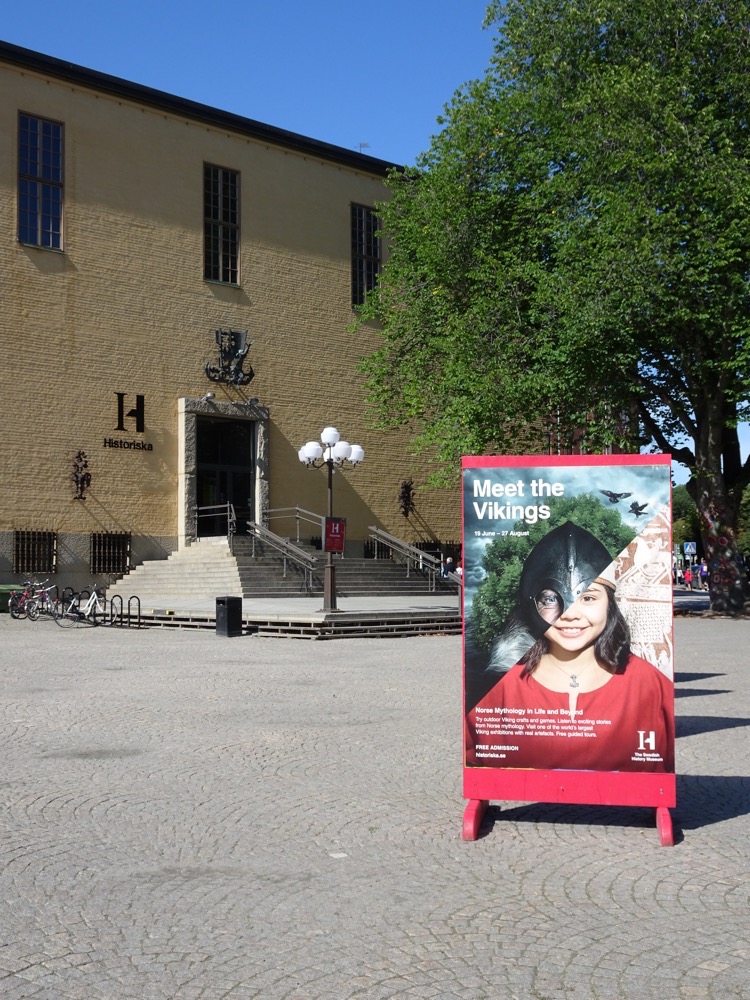
Small groups did journey abroad to trade and, yes, sometimes to pillage, and they were largely responsible for returning to their communities with new customs, traditions and artefacts – including many things that changed the lives of the people living in these predominantly farming communities.The Historiska Museet aims to educate on the story of the people who lived in Sweden during this period.
Much of the information included in this post, is appropriated or paraphrased from plaques placed beside objects in the museum.
Rune stones were created to stand like advertising pillars in the landscape to commemorate lost loved ones. This rune stone, called Unna’s Rune Stone was commissioned in memory of Osten, Unna’s son who died in his christening robes. The work has been made by rune carver Visate, who cut the words and created this stone. Most of these rune stones have been found from Uppland province. This one originates in Torsatra.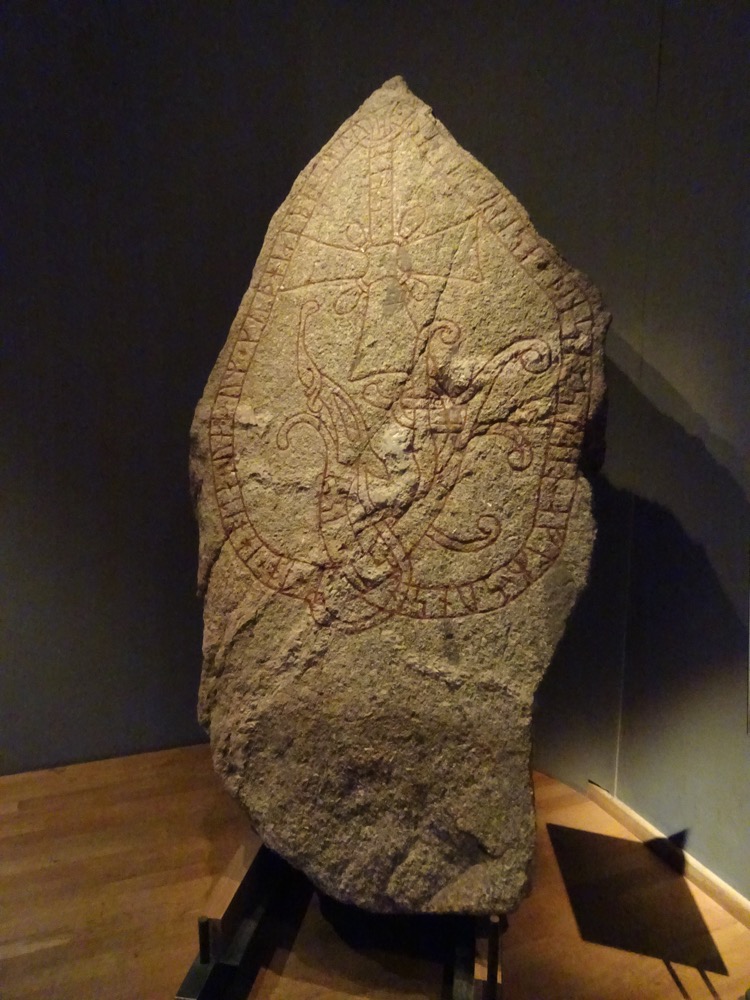
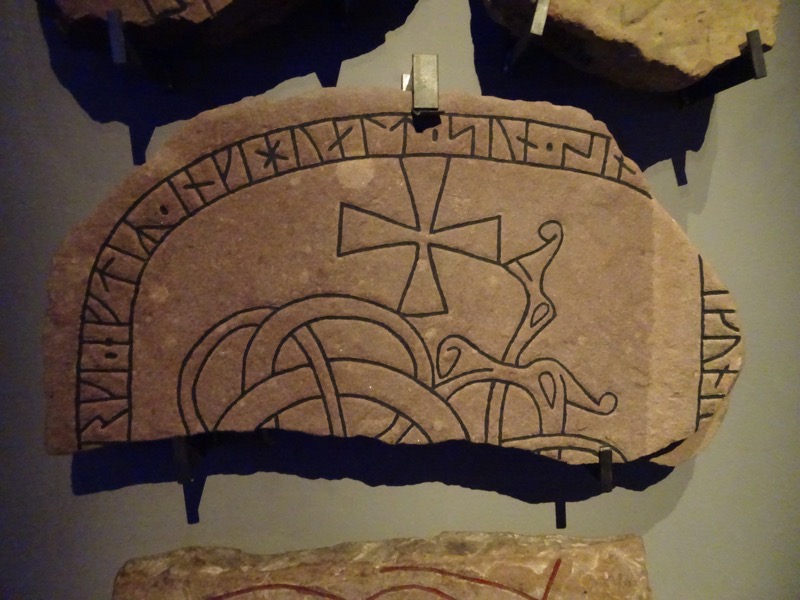
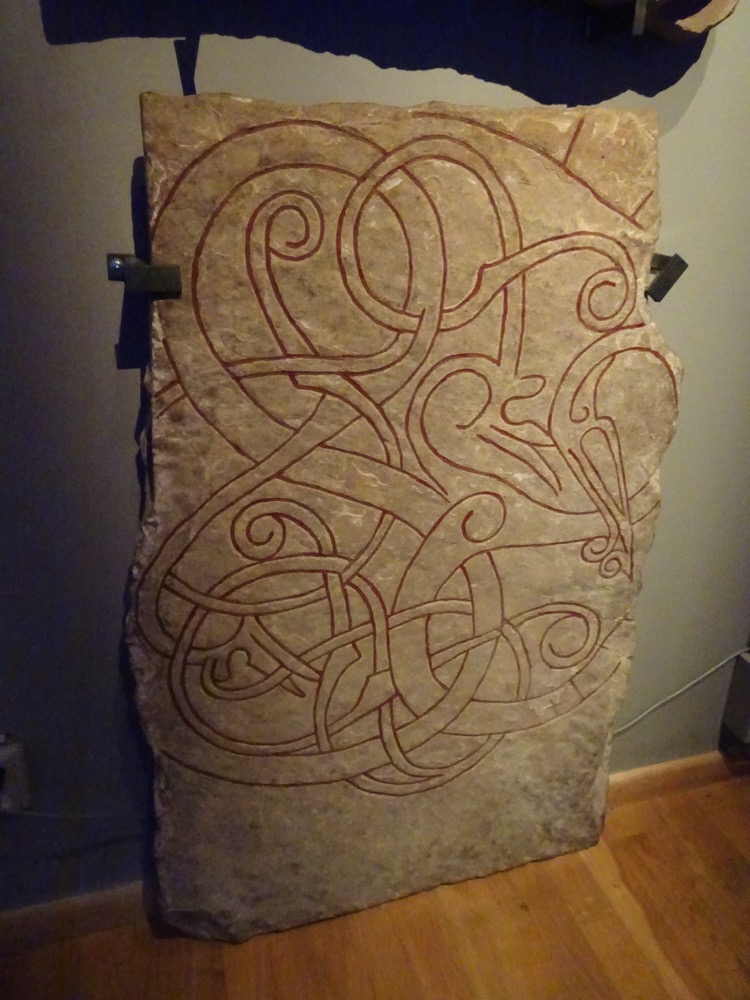 Picture stone with smithing scene from the Saga of Volund. Gotland, Ardre Chruch, 8th-9th century.
Picture stone with smithing scene from the Saga of Volund. Gotland, Ardre Chruch, 8th-9th century.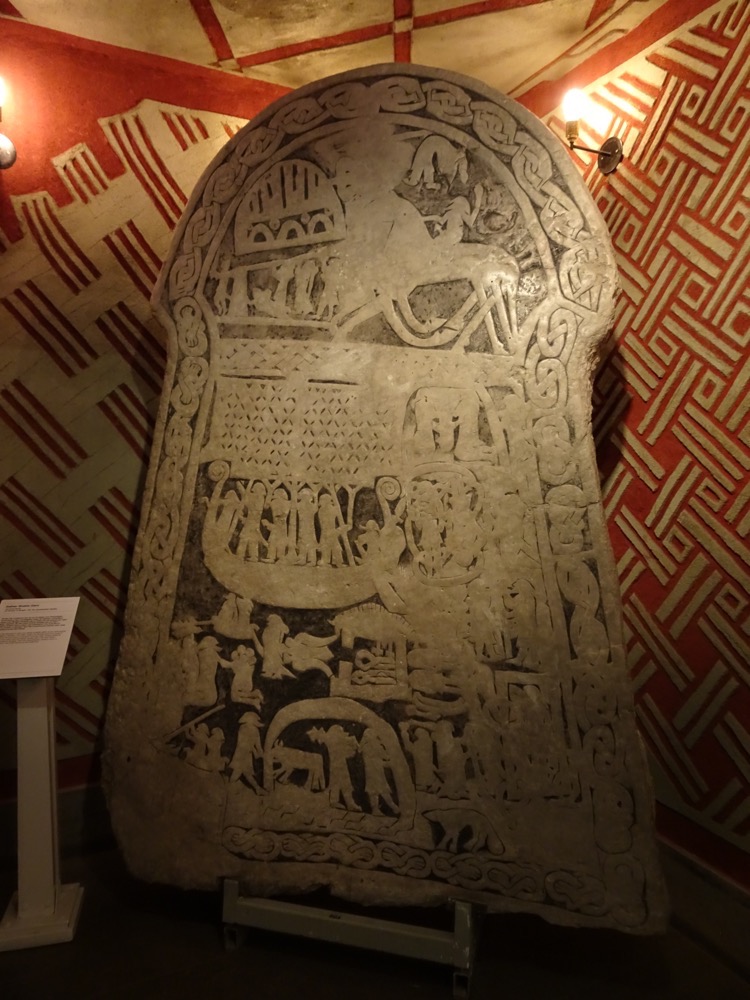 Over 1,000 Viking Age silver hoards have been found in Sweden. One of the largest hoards was from Sigsarve, on Gotland Island and weighs in at six kilos of silver objects. The hoard may have been intended as some sort of payment in the form of jewellery as silver weight, as items are either whole or hacked to pieces There were 1,382 coins in the hoard as well – interestingly the majority of them are of Islamic origins.
Over 1,000 Viking Age silver hoards have been found in Sweden. One of the largest hoards was from Sigsarve, on Gotland Island and weighs in at six kilos of silver objects. The hoard may have been intended as some sort of payment in the form of jewellery as silver weight, as items are either whole or hacked to pieces There were 1,382 coins in the hoard as well – interestingly the majority of them are of Islamic origins.
The following items: brooches, coins, rings, pendants, bracelets, various dress accessories and belt fittings are from the Sigsarve hoard. 10thC to early 11thC, Gotland,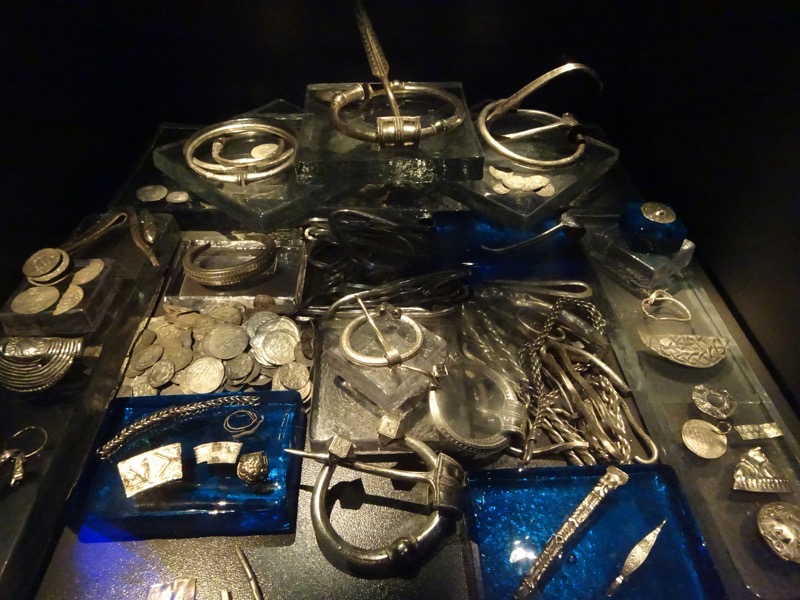 Penannular brooches from the Sigsarve hoard. 10thC to early 11thC, Gotland
Penannular brooches from the Sigsarve hoard. 10thC to early 11thC, Gotland
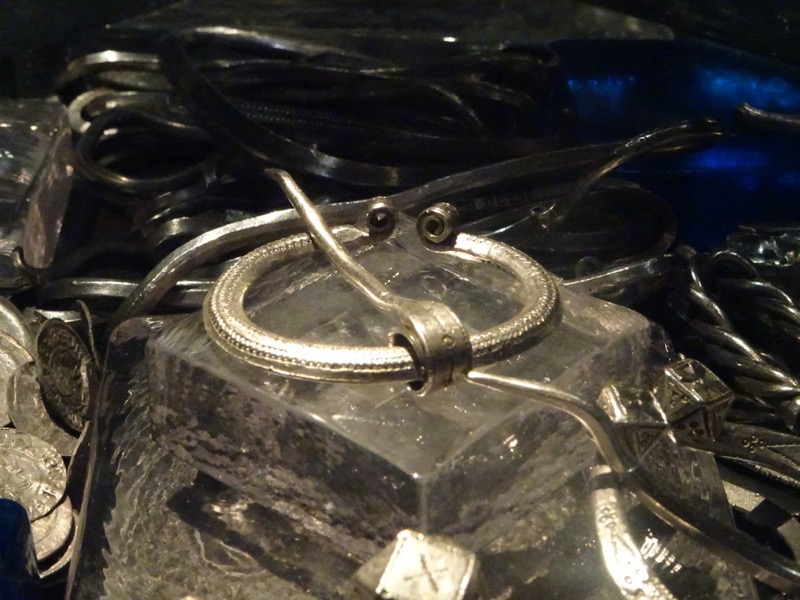
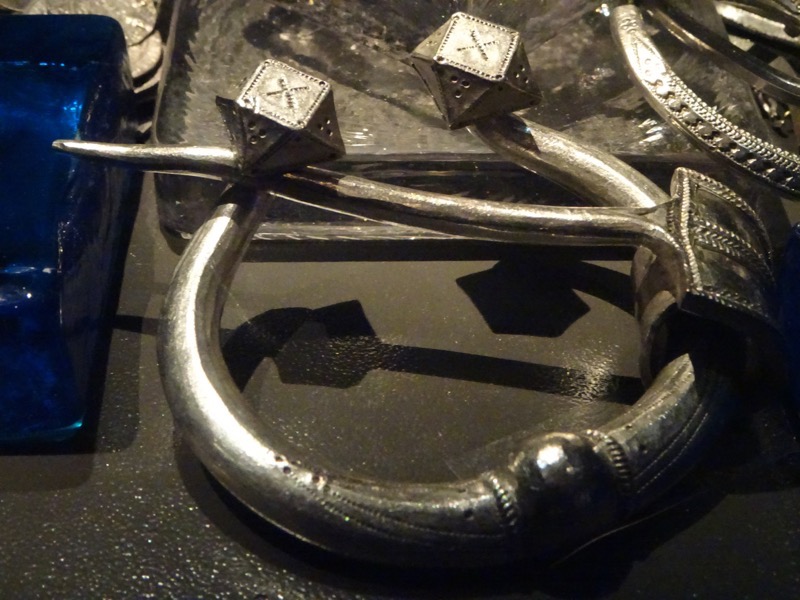
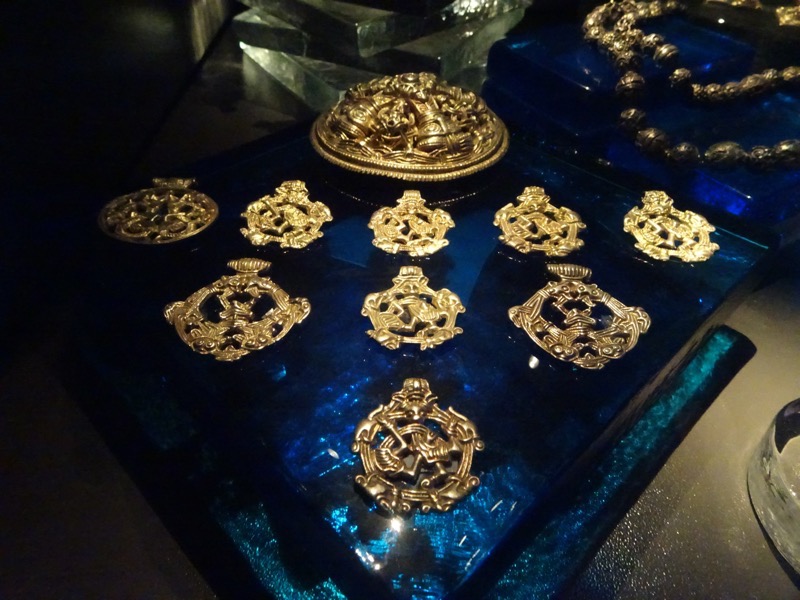
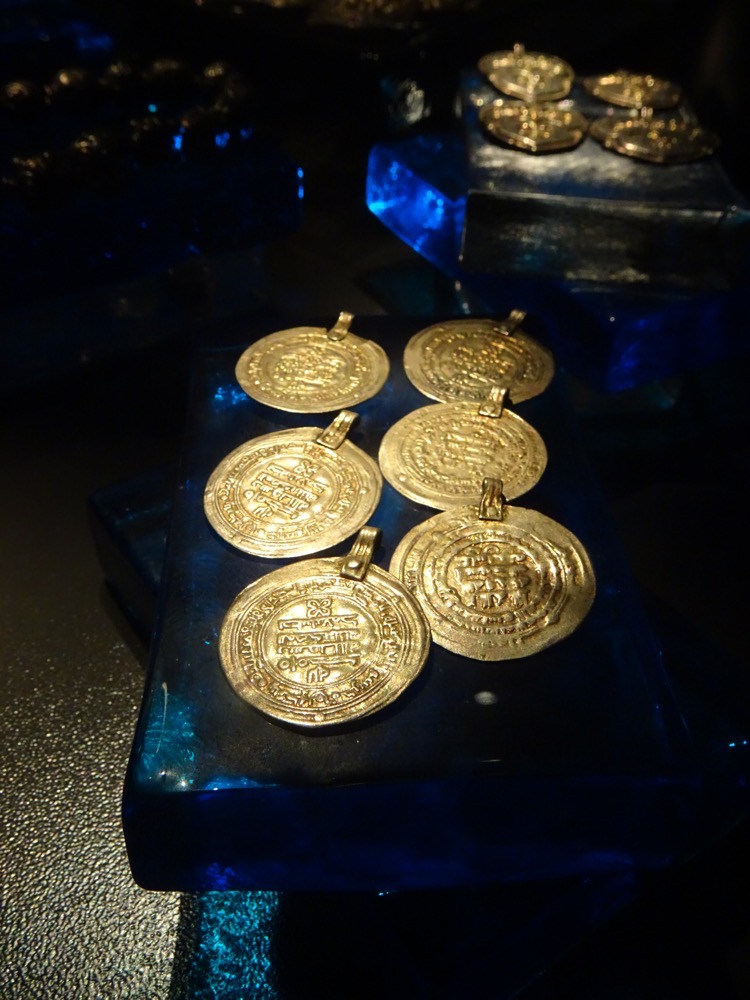
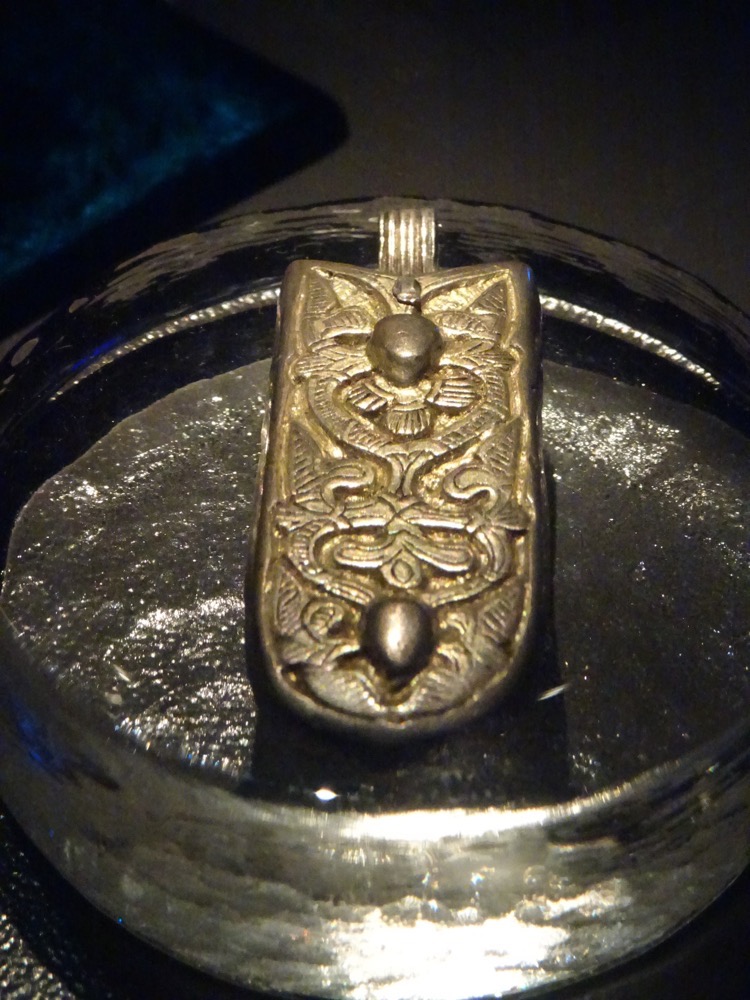
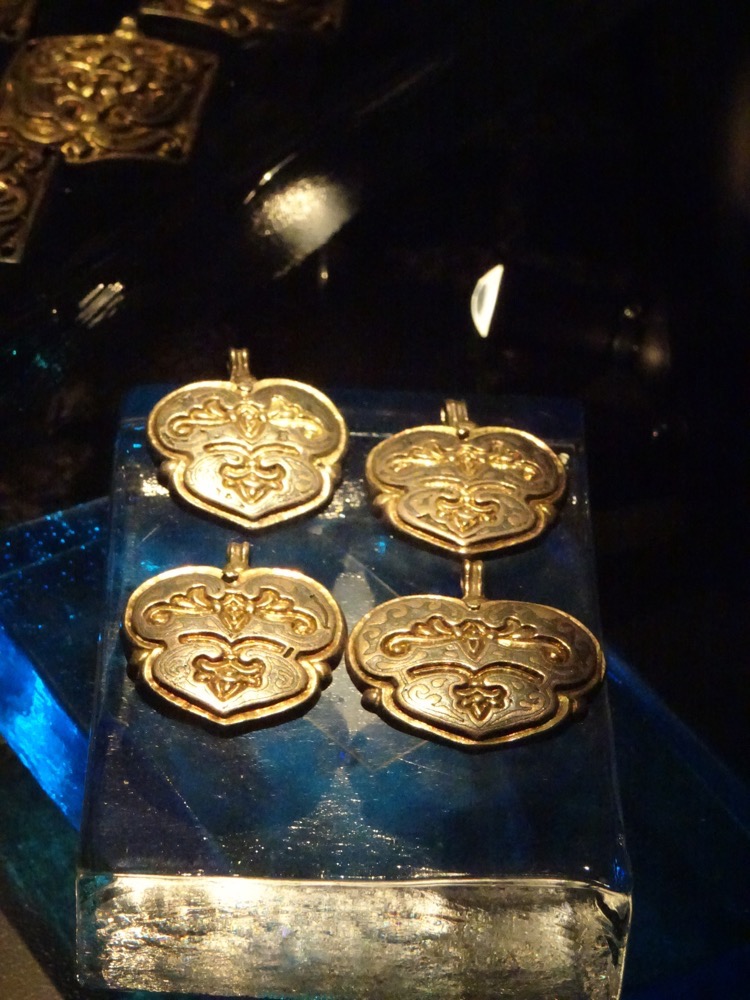 Viking treasure found on the outskirts of Stockholm, Varby.
Viking treasure found on the outskirts of Stockholm, Varby.
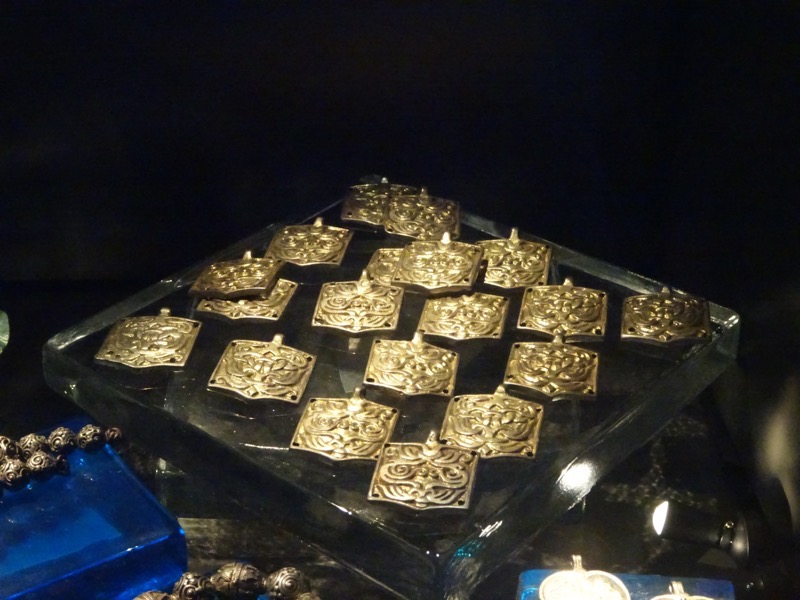
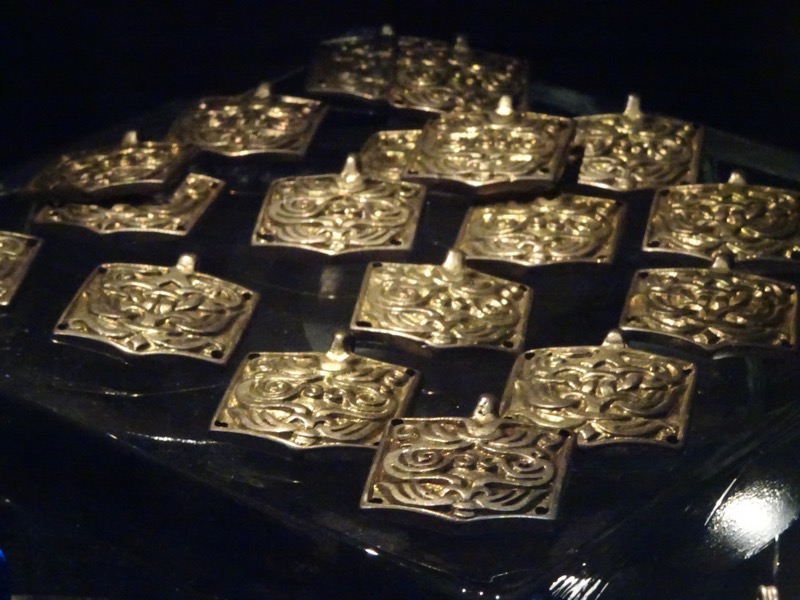 Viking era swords:
Viking era swords: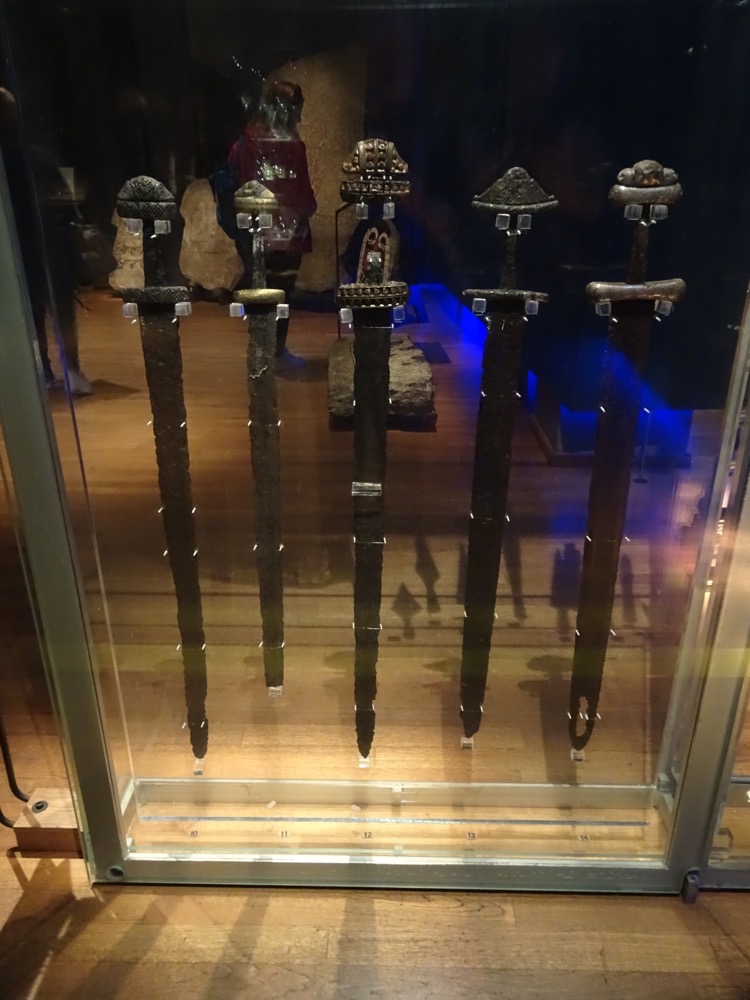
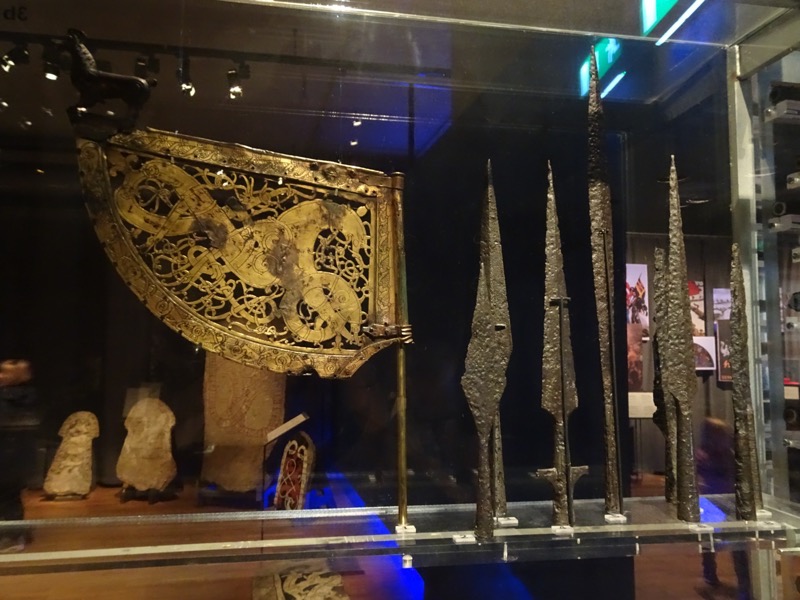
The Princess from Birka: Magnificent objects were found in a timber-lined burial chamber in Birka which gives us evidence that women had considerable influence, power and status in Viking Age society. This image is an illustration of her grave and what she might have looked like.
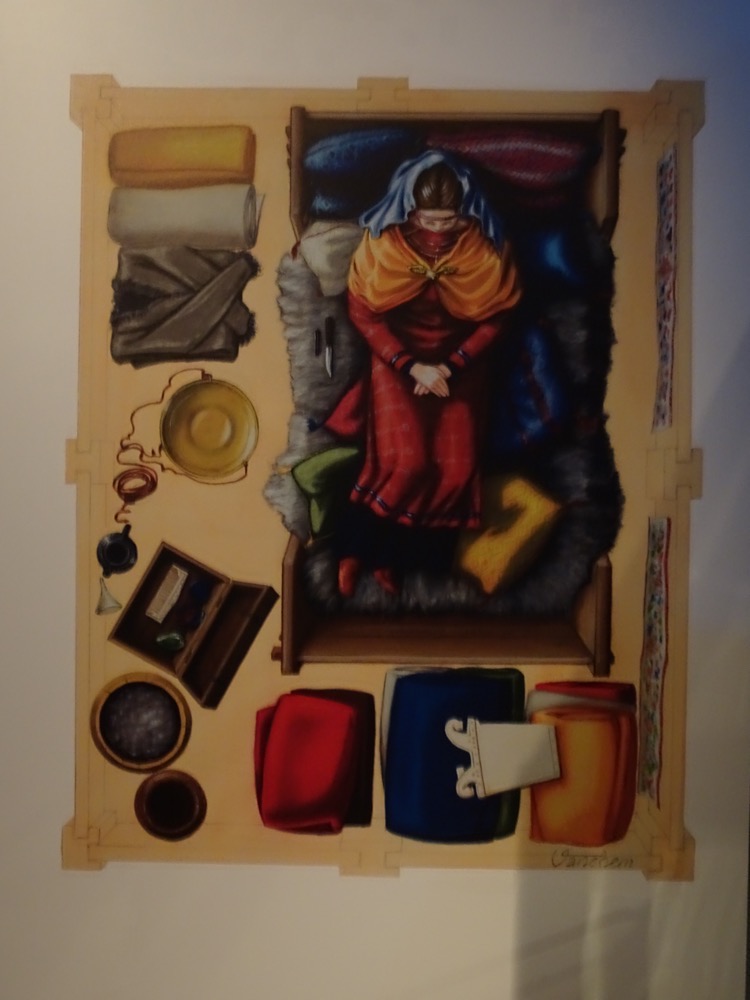 She wore a key, clearly visible on the outside of her dress showing her control on the estate. She managed the resources and facilitated the generosity that was important to the family maintaining status and subsequently, control.
She wore a key, clearly visible on the outside of her dress showing her control on the estate. She managed the resources and facilitated the generosity that was important to the family maintaining status and subsequently, control.
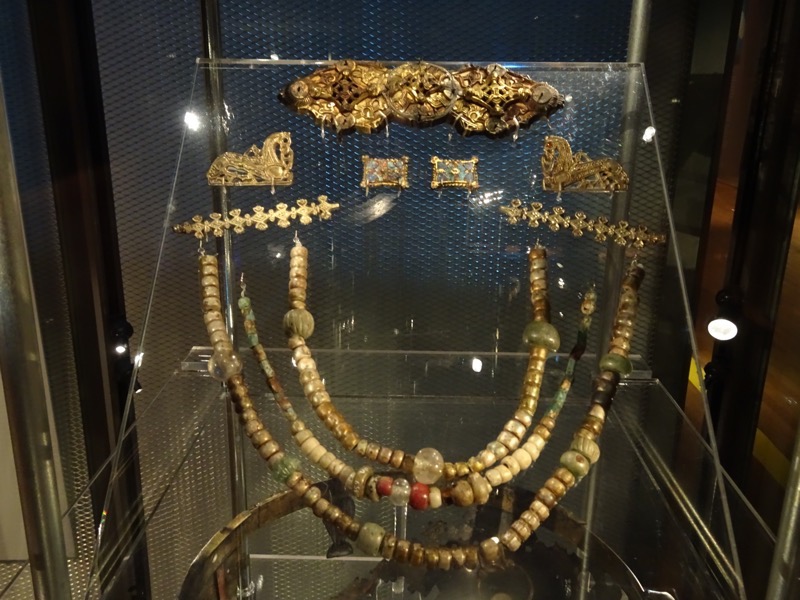 She wore exquisitely wrought brooches, in the shape of horses, and an impressive collection of beads made from glass, earthenware, rock crystal and silver. The brooches themselves were inset with Frankish. Her image radiates power, wealth and status. Her grave also contained a comb, a knife, a bowl, two whetstones, a case, a glass smoother, a whalebone board, a ring of Thor’s hammer showing her belief system
She wore exquisitely wrought brooches, in the shape of horses, and an impressive collection of beads made from glass, earthenware, rock crystal and silver. The brooches themselves were inset with Frankish. Her image radiates power, wealth and status. Her grave also contained a comb, a knife, a bowl, two whetstones, a case, a glass smoother, a whalebone board, a ring of Thor’s hammer showing her belief system 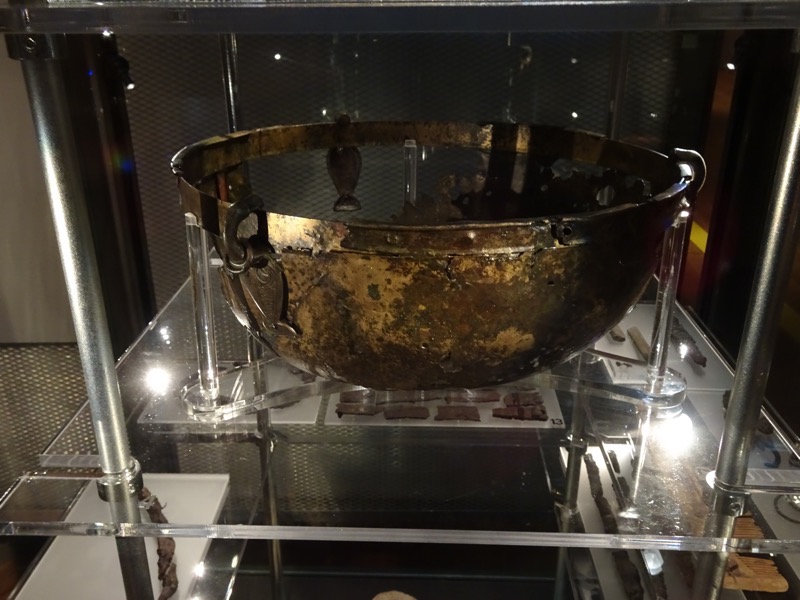 Blackware jug from Rhine region, originally with foil decoration, from Birka.
Blackware jug from Rhine region, originally with foil decoration, from Birka.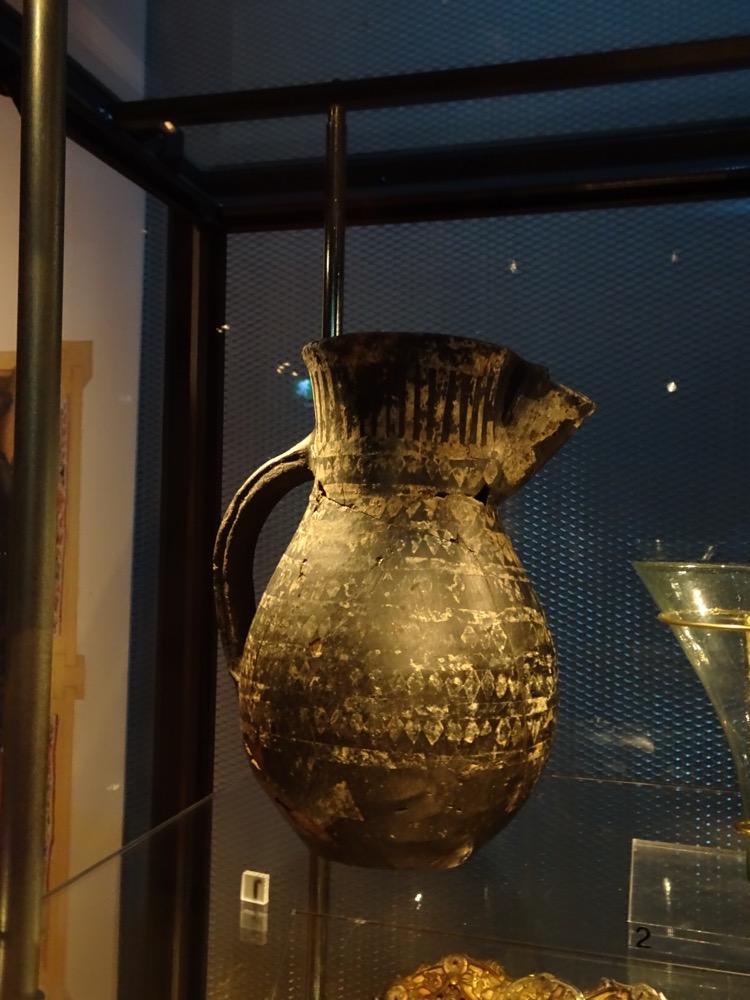 Inviting guests to lavish feasts was a feature of high society in the Viking era. Such feasting was an important part of the aristocracy’s lifestyle. Funnel glasses from the Frankish realm were apt for displaying wealth at such feasts. Other luxurious and delicate glass artefacts were also found, such as bowls from Persia, and game pieces.
Inviting guests to lavish feasts was a feature of high society in the Viking era. Such feasting was an important part of the aristocracy’s lifestyle. Funnel glasses from the Frankish realm were apt for displaying wealth at such feasts. Other luxurious and delicate glass artefacts were also found, such as bowls from Persia, and game pieces.
Glass beakers aka funnel beakers, Birka.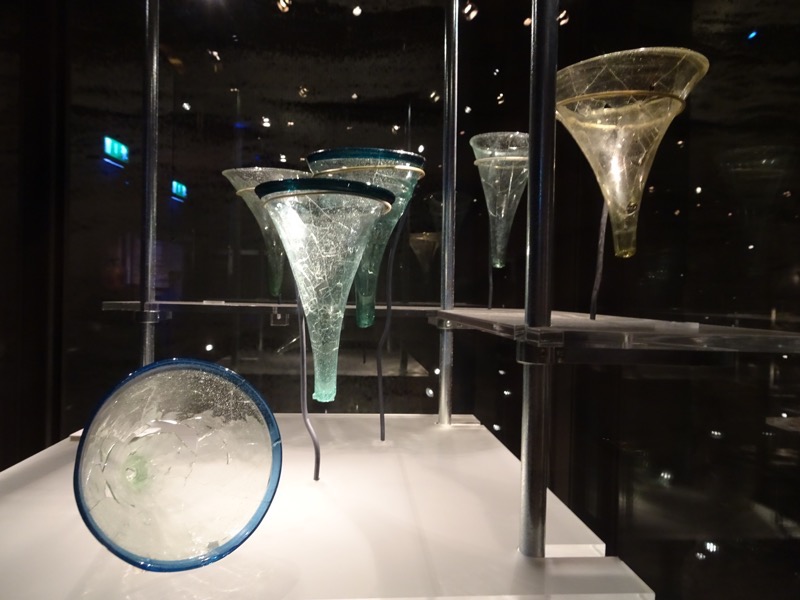 Glass gaming pieces, Birka.
Glass gaming pieces, Birka.
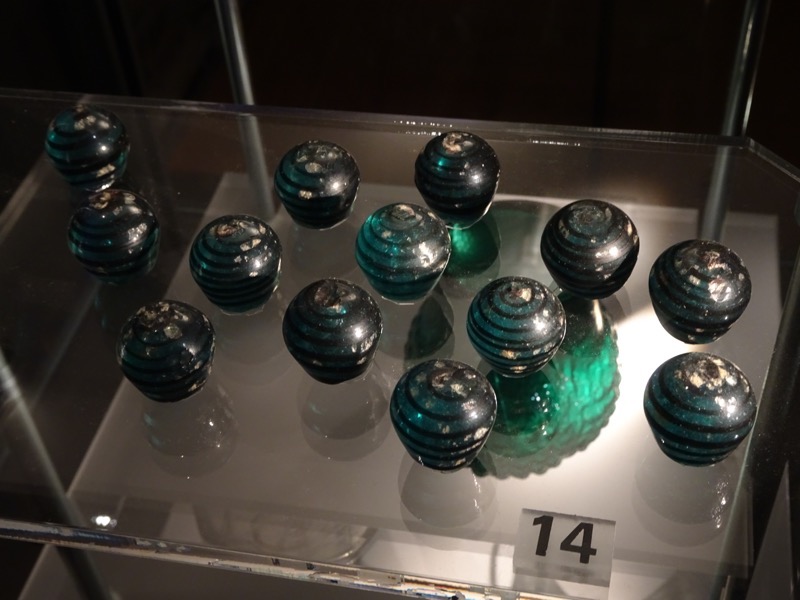
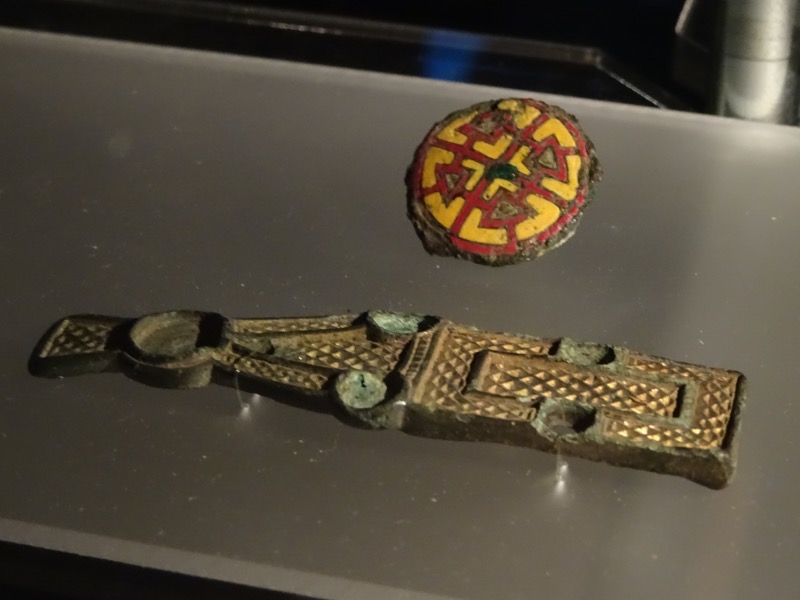 Necklace, silver and rock crystal, Gotland, Lye.
Necklace, silver and rock crystal, Gotland, Lye.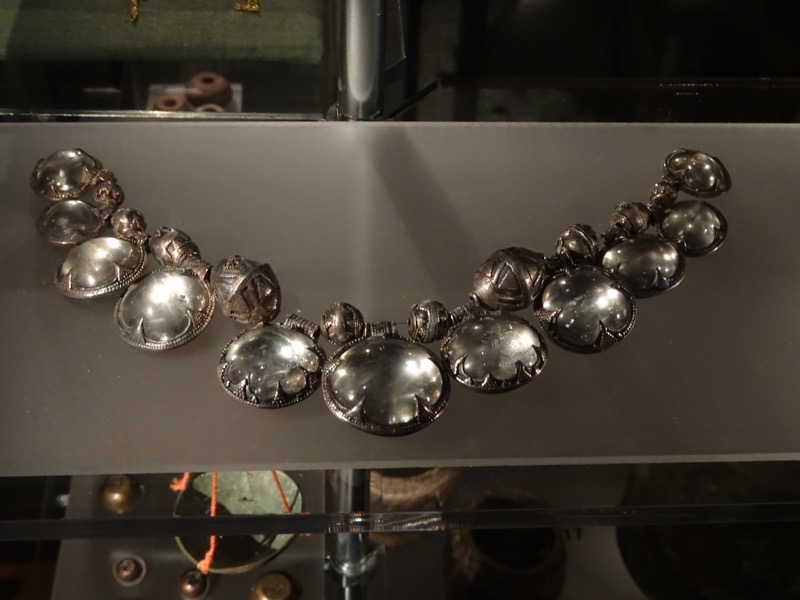
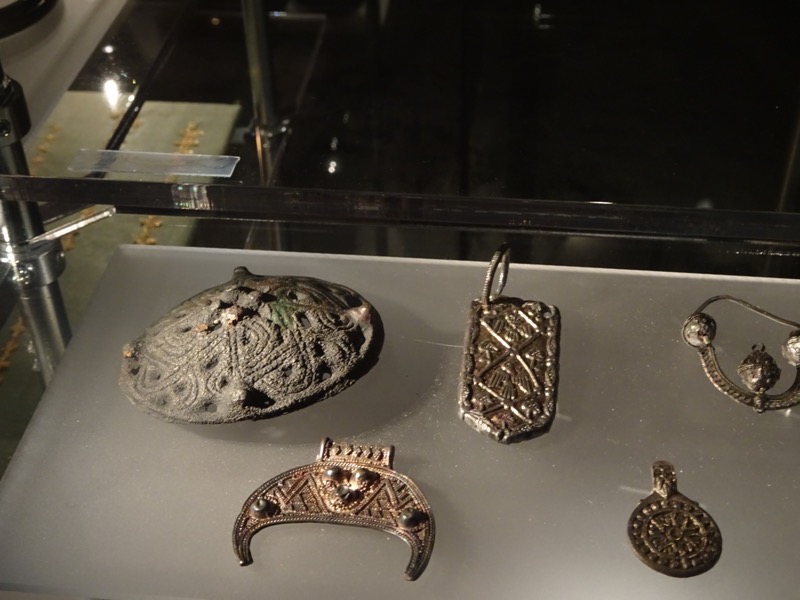 This petroglyph from the island of Gotland shows several people with drinking horns. During the Viking Age, alcoholic drinks were brewed – most popular were mead and ale. This stone depects men drinking and below, battling with swords.
This petroglyph from the island of Gotland shows several people with drinking horns. During the Viking Age, alcoholic drinks were brewed – most popular were mead and ale. This stone depects men drinking and below, battling with swords.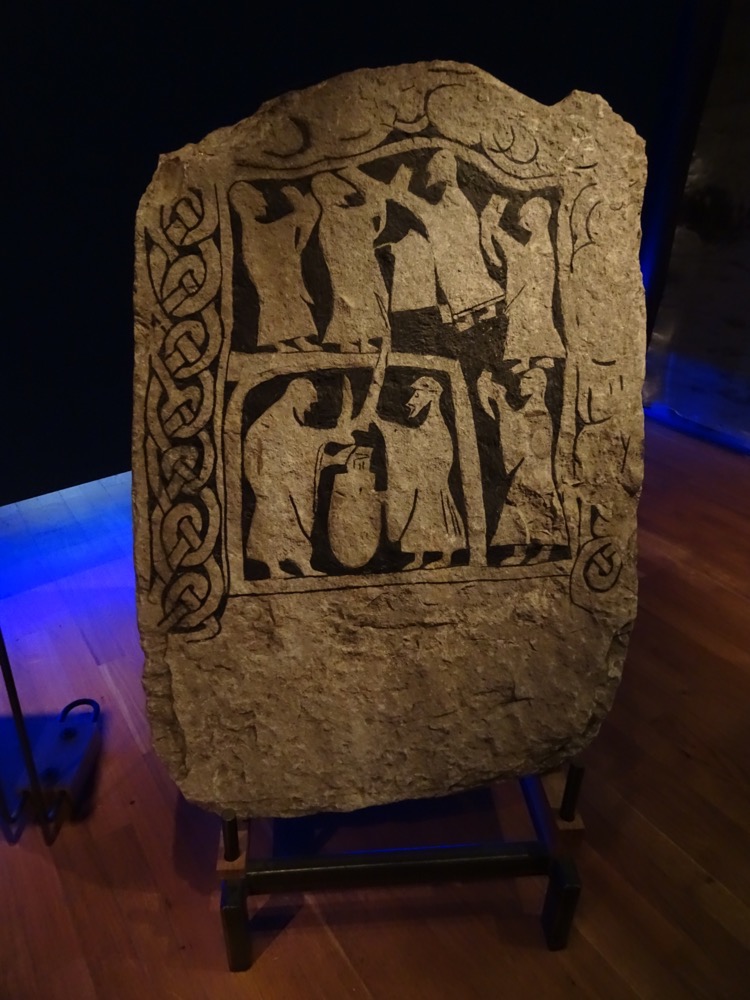 Picture stone, from Lillbjars, Gotland may have been part of a coffin lid.
Picture stone, from Lillbjars, Gotland may have been part of a coffin lid.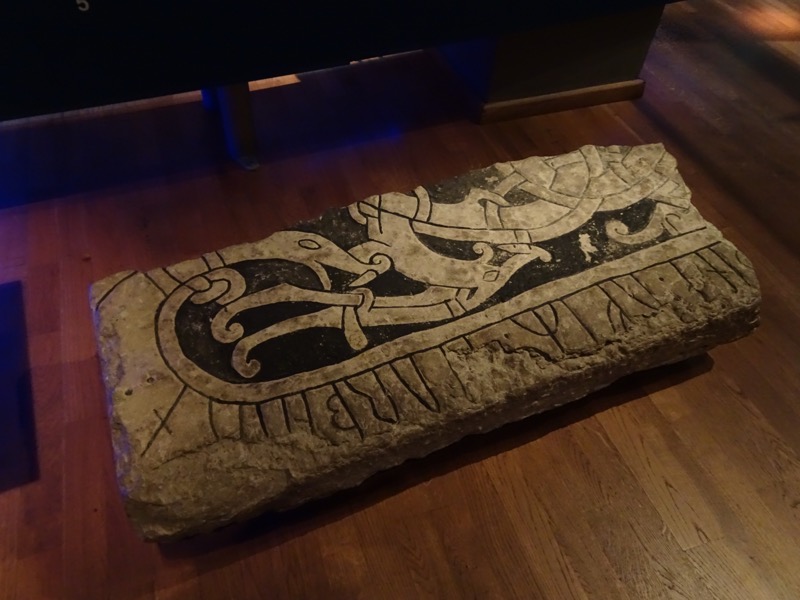
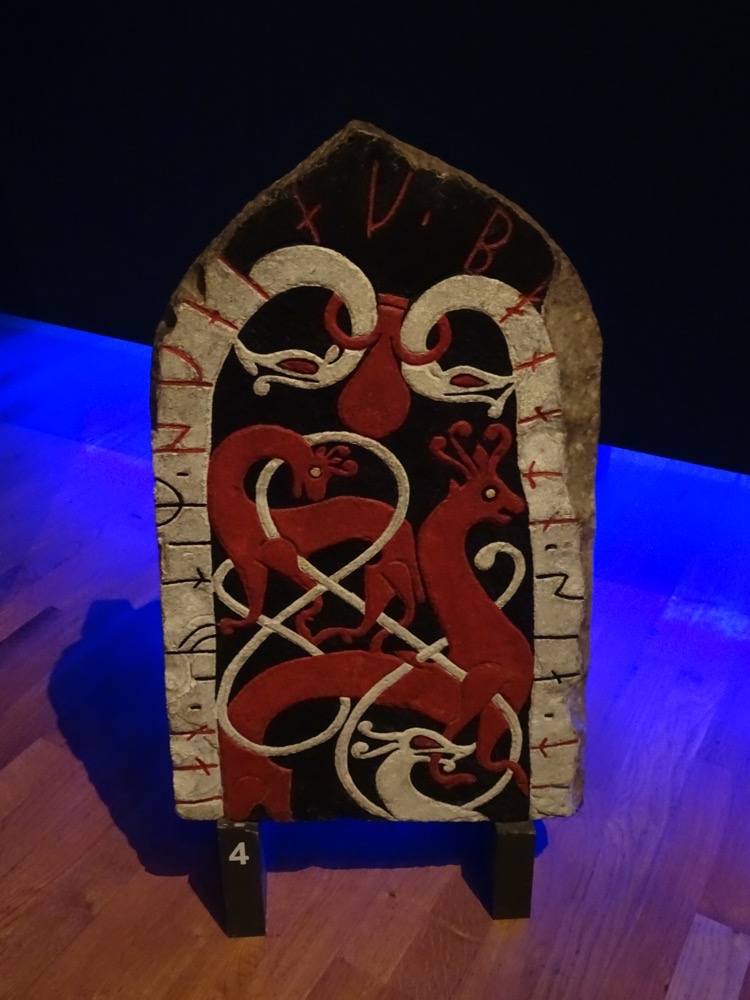
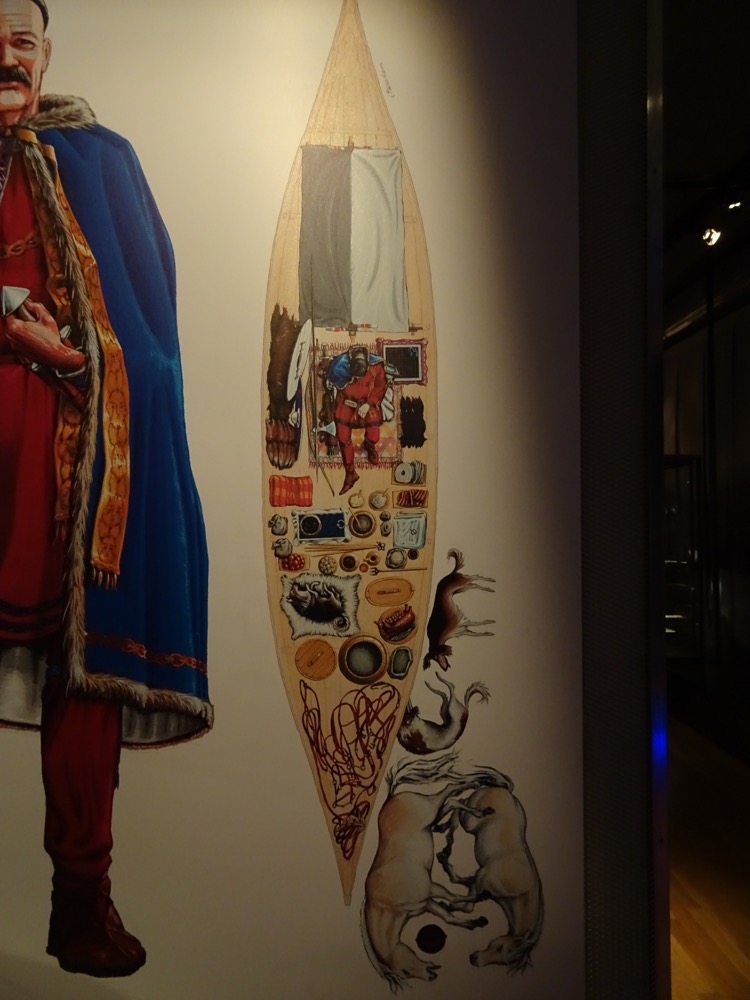 Vendel Magnate: From a powerful clan in Uppland, he is dressed in his most luxurious clothes and dress accessories. This baron was buried in his ship, along with his most valuable possessions including an iron cauldron, a meat fork, gaming pieces, an axe, a spear, arrow heads, shield bosses and a seax. This image shows his grave as it was found.
Vendel Magnate: From a powerful clan in Uppland, he is dressed in his most luxurious clothes and dress accessories. This baron was buried in his ship, along with his most valuable possessions including an iron cauldron, a meat fork, gaming pieces, an axe, a spear, arrow heads, shield bosses and a seax. This image shows his grave as it was found.
The extravagant items show the luxurious lifestyle enjoyed by those in his clan and his hall, the weapons highlight his role as a war leader.
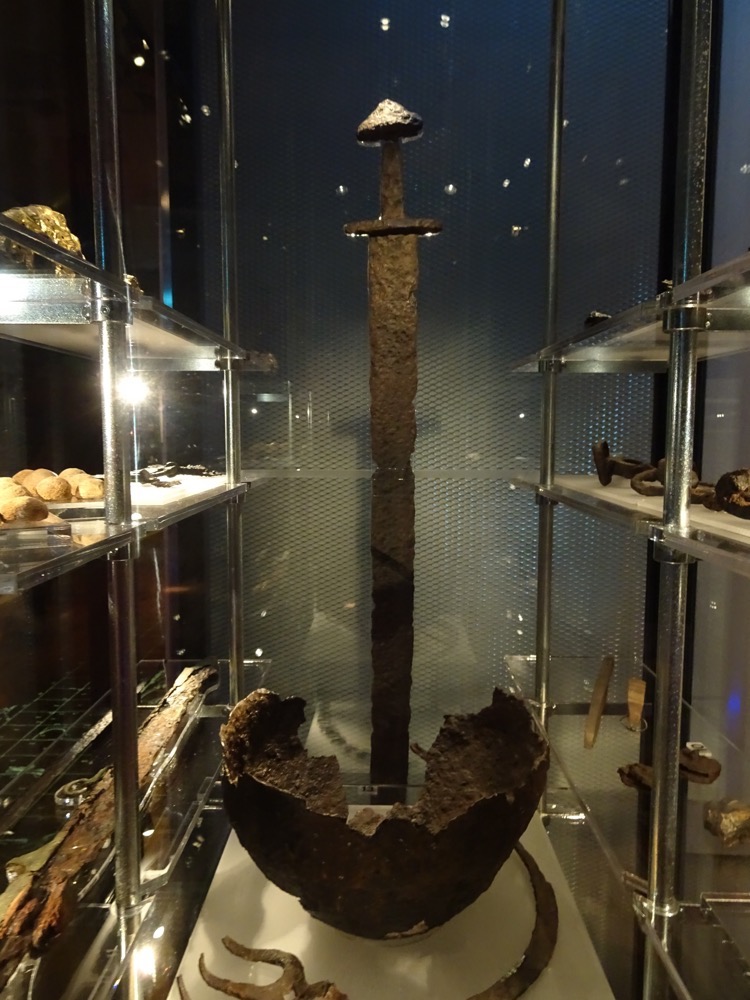
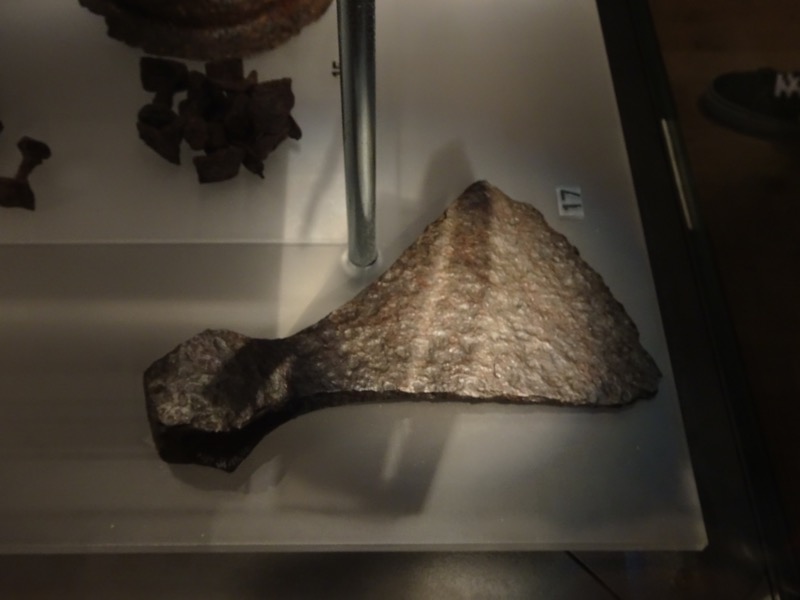
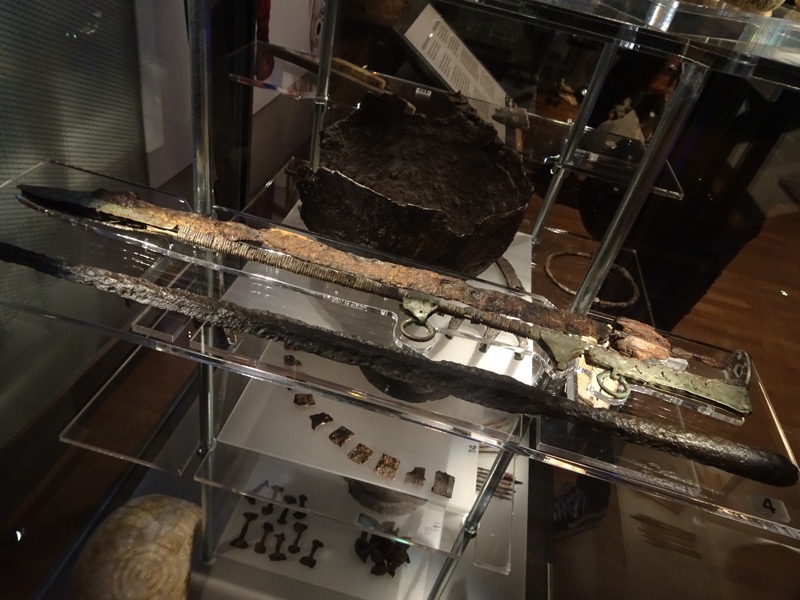
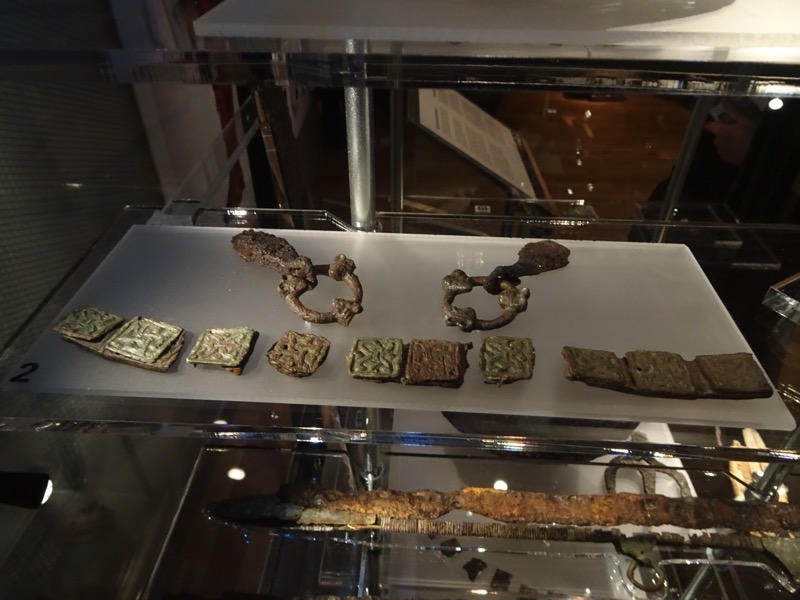
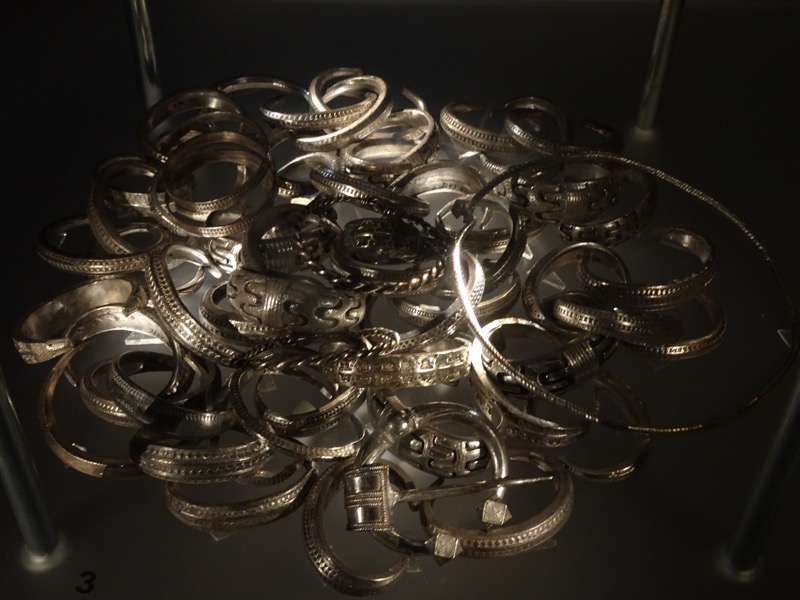
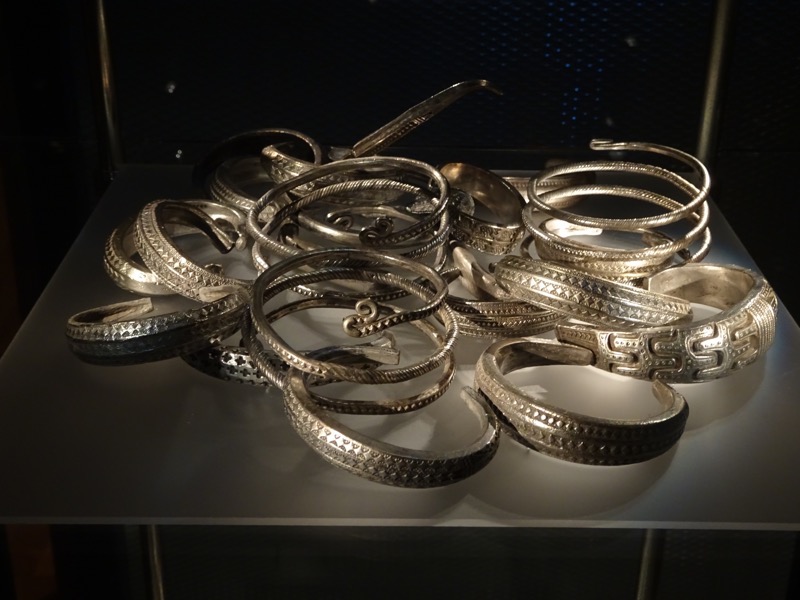
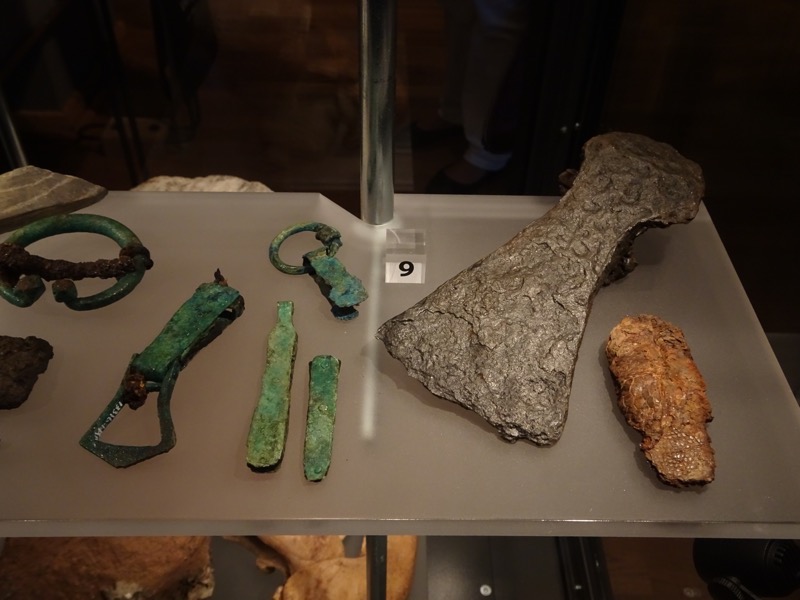
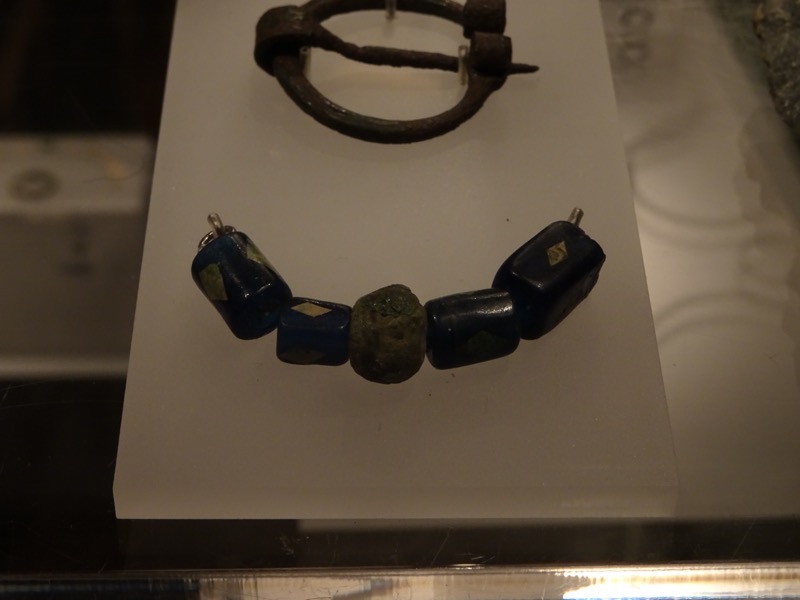

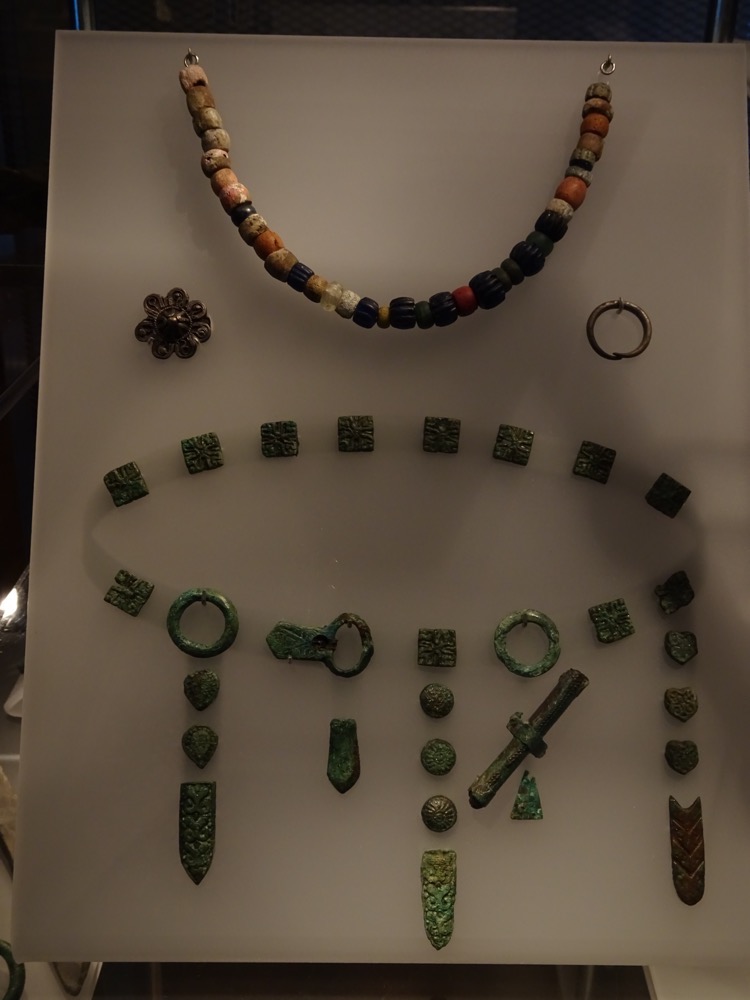
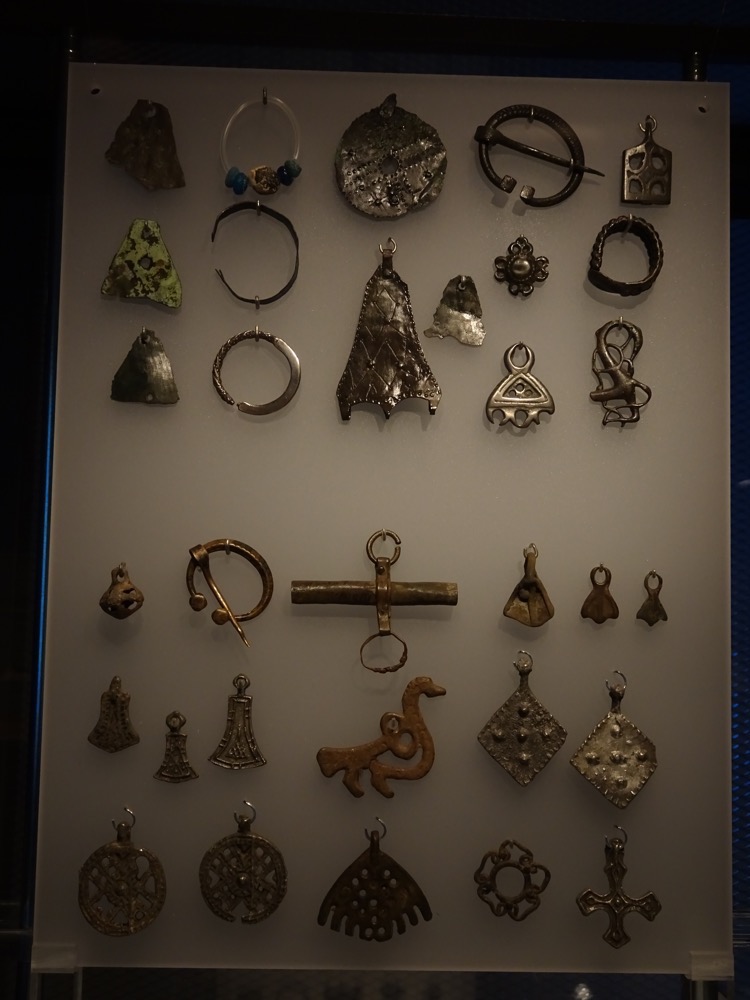
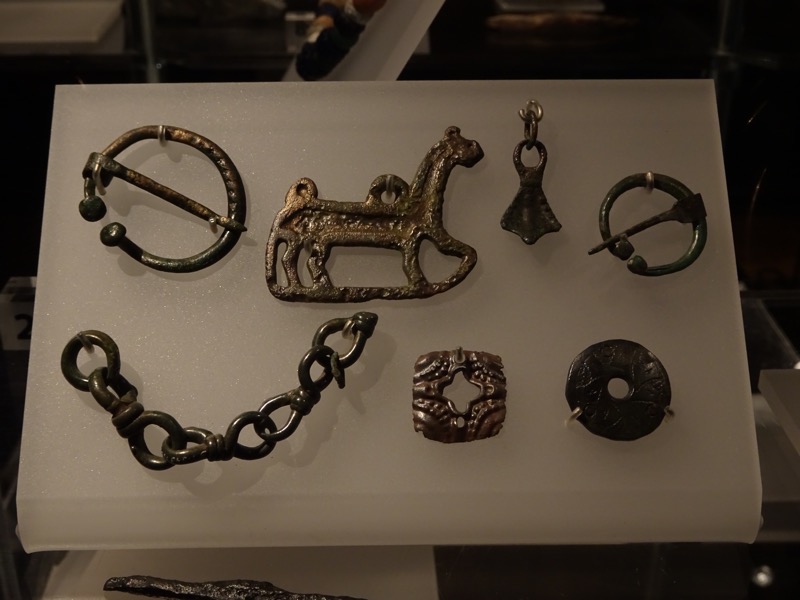
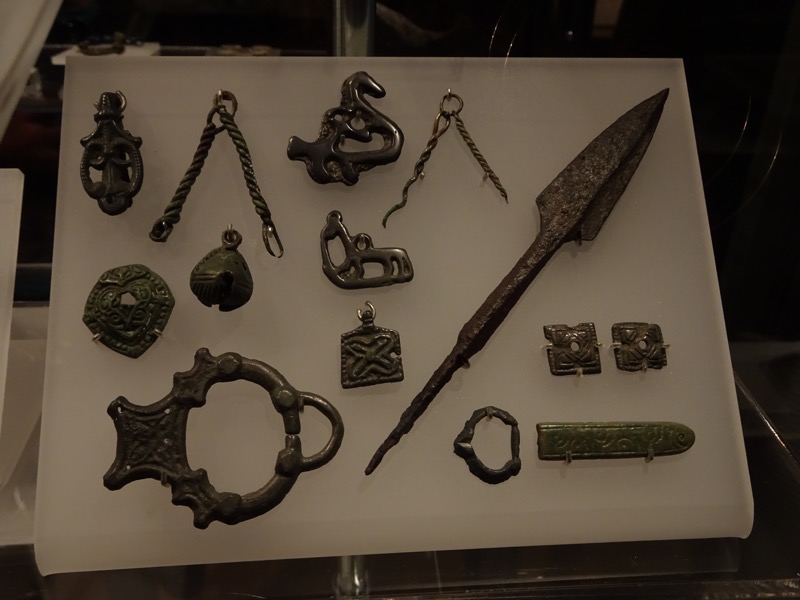
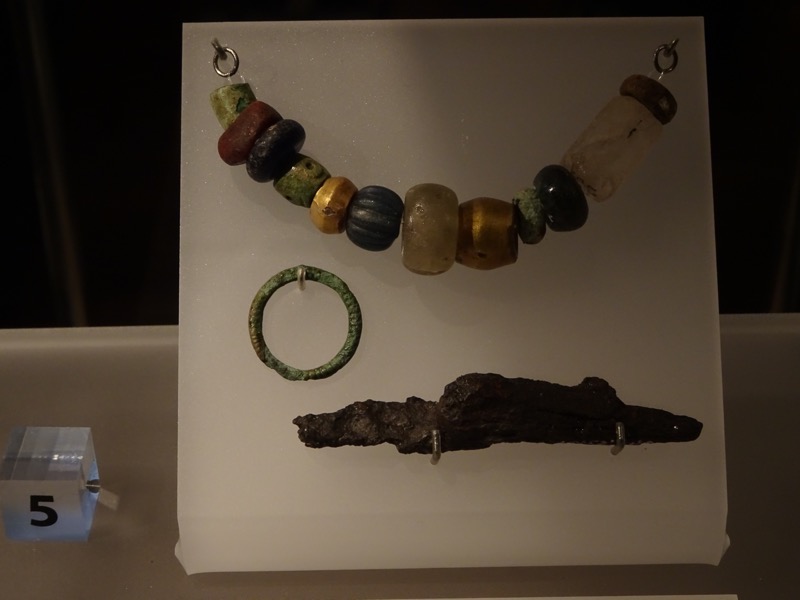 Fittings from a Birka pouch.a
Fittings from a Birka pouch.a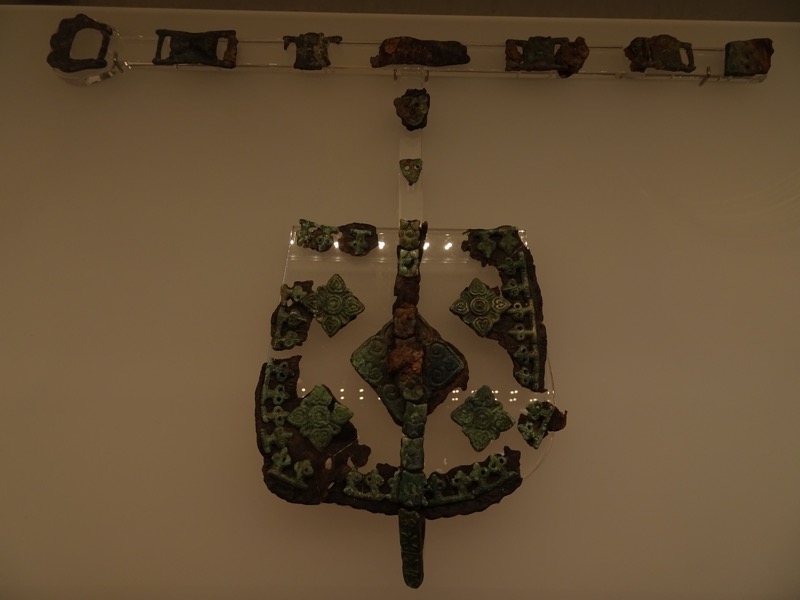
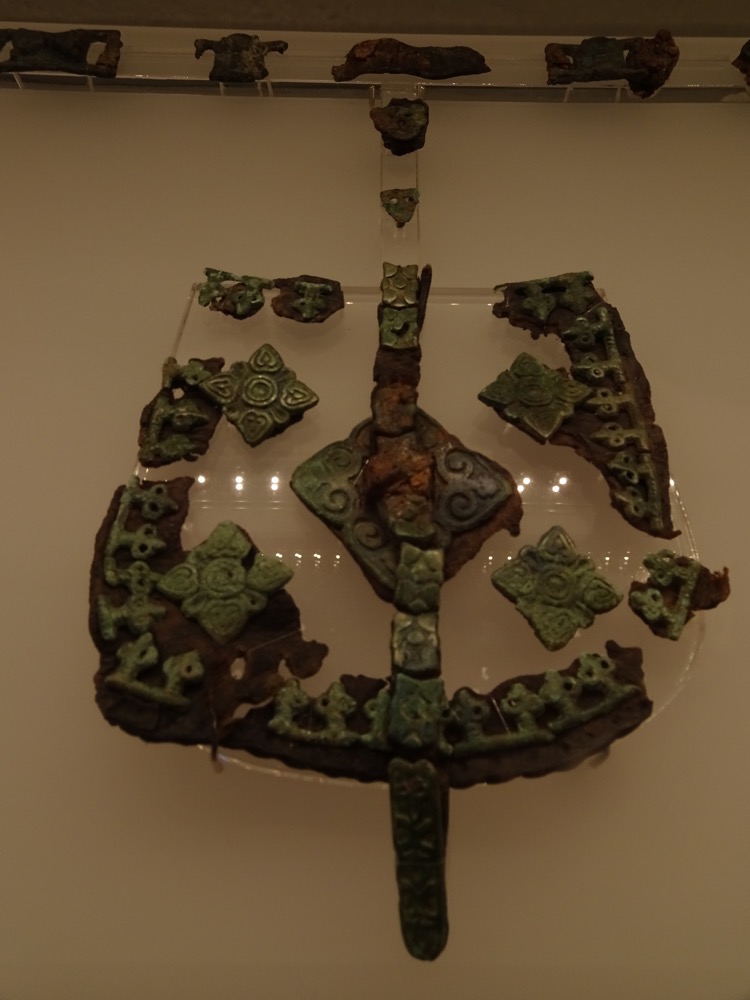
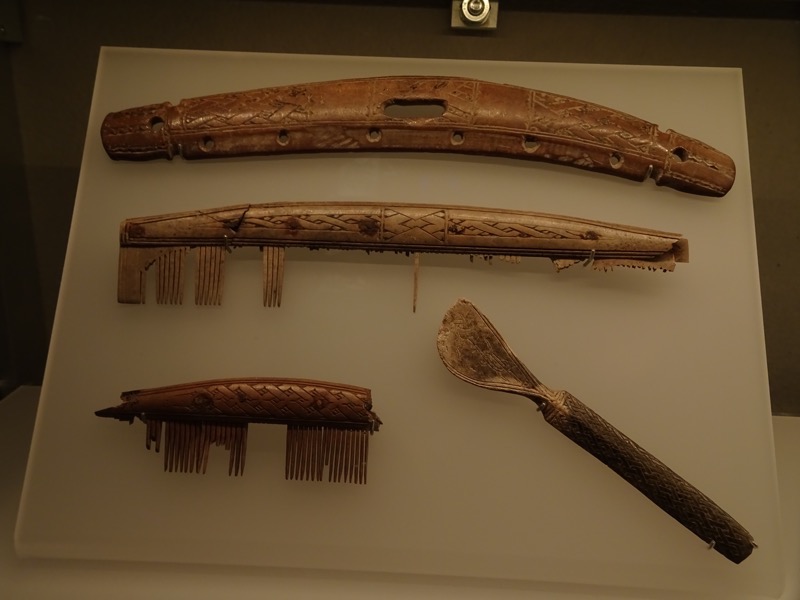
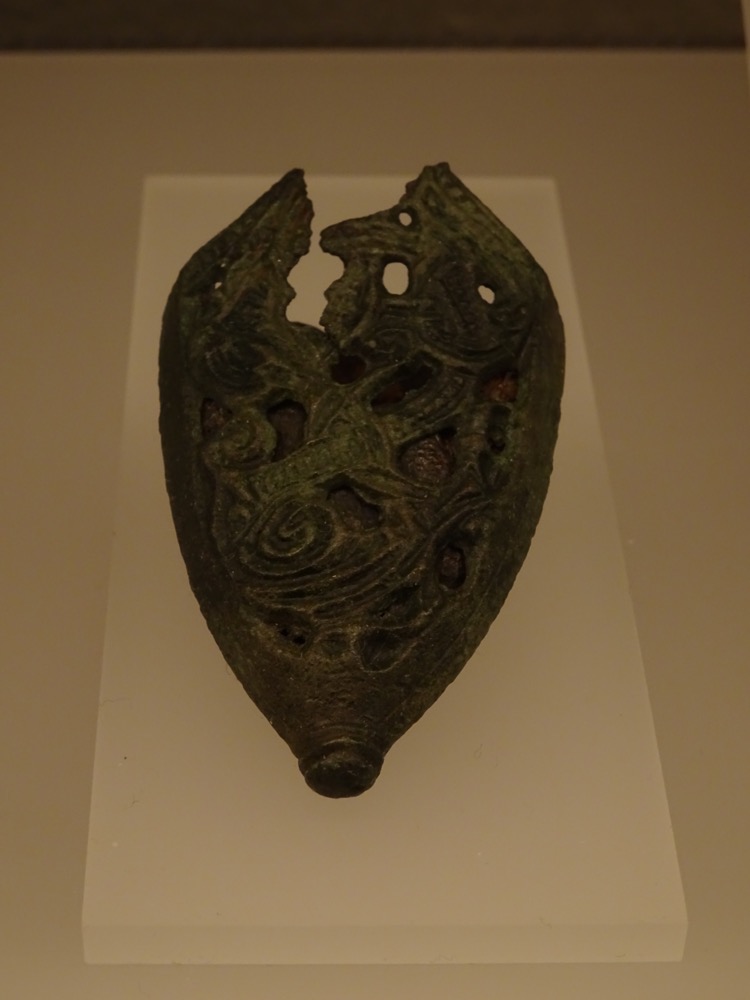
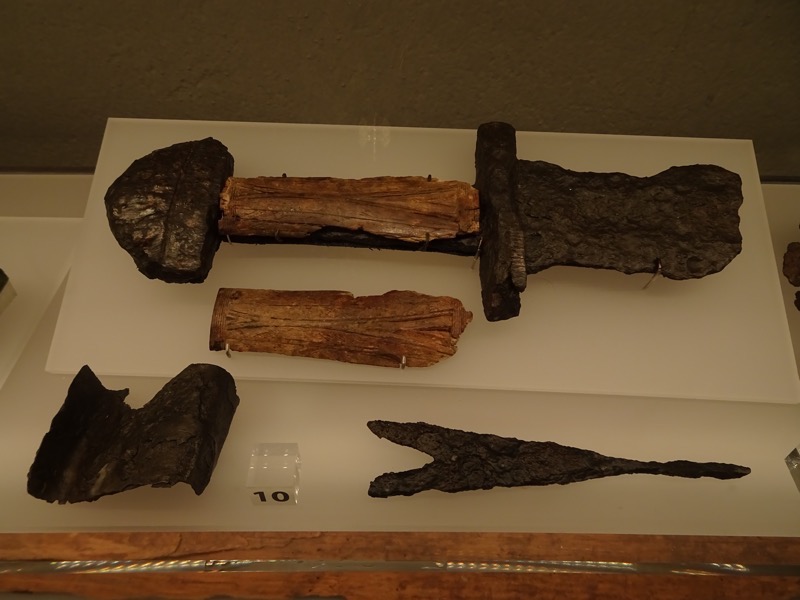
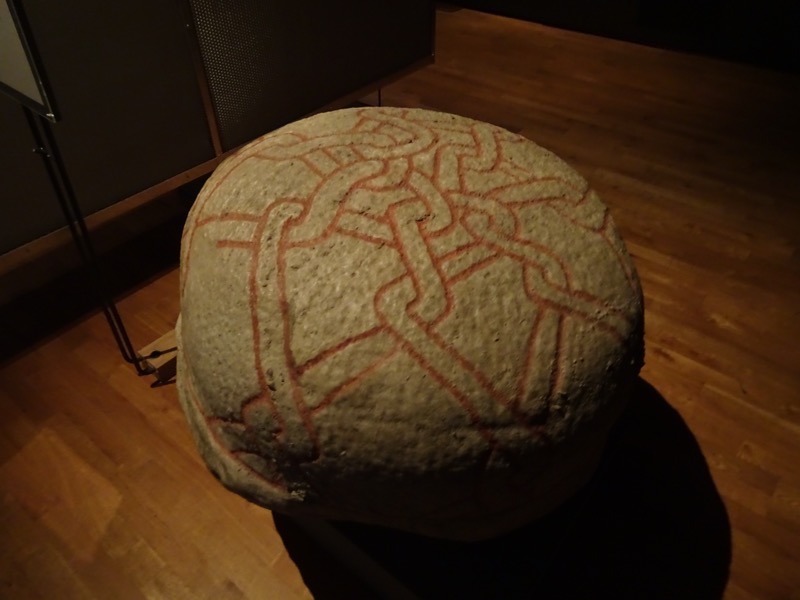 Collection of tools found in a tool chest – fire, grid and iron tools (plate shears hacksaw, keys and nail irons), Gotland, Mastermyr.
Collection of tools found in a tool chest – fire, grid and iron tools (plate shears hacksaw, keys and nail irons), Gotland, Mastermyr.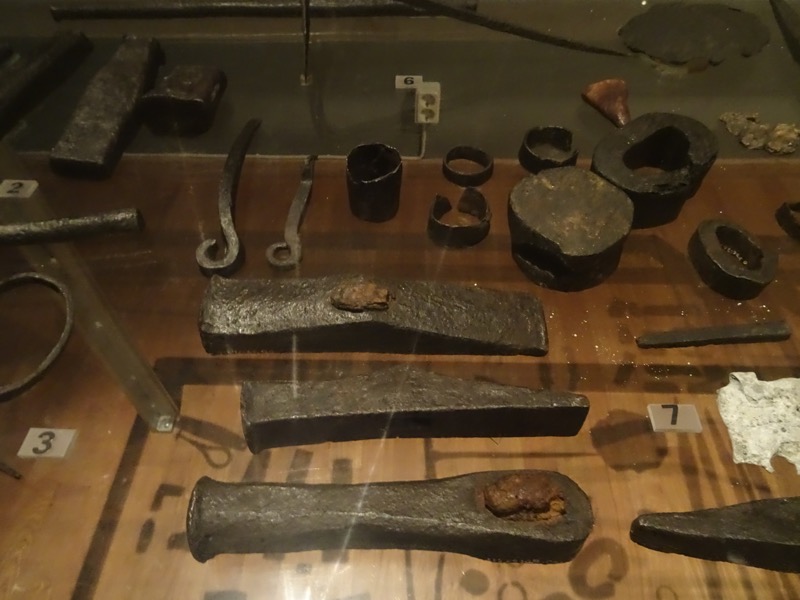
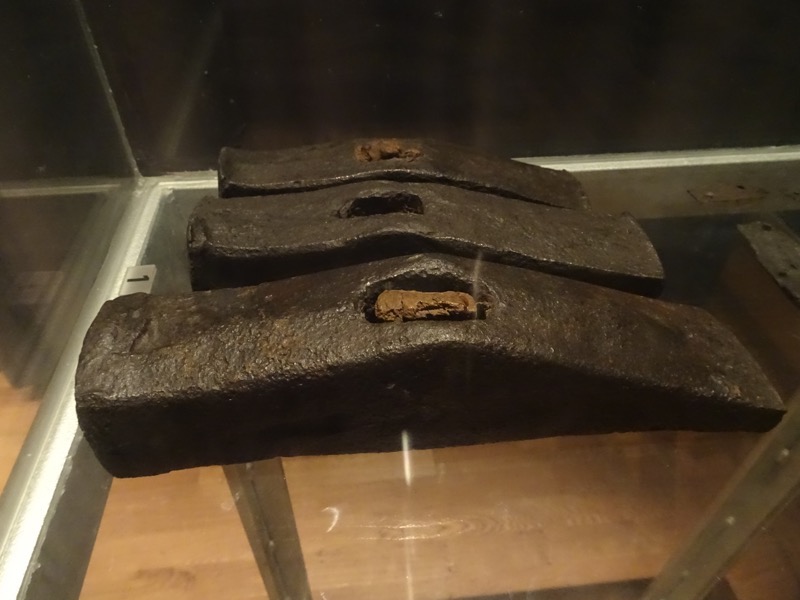
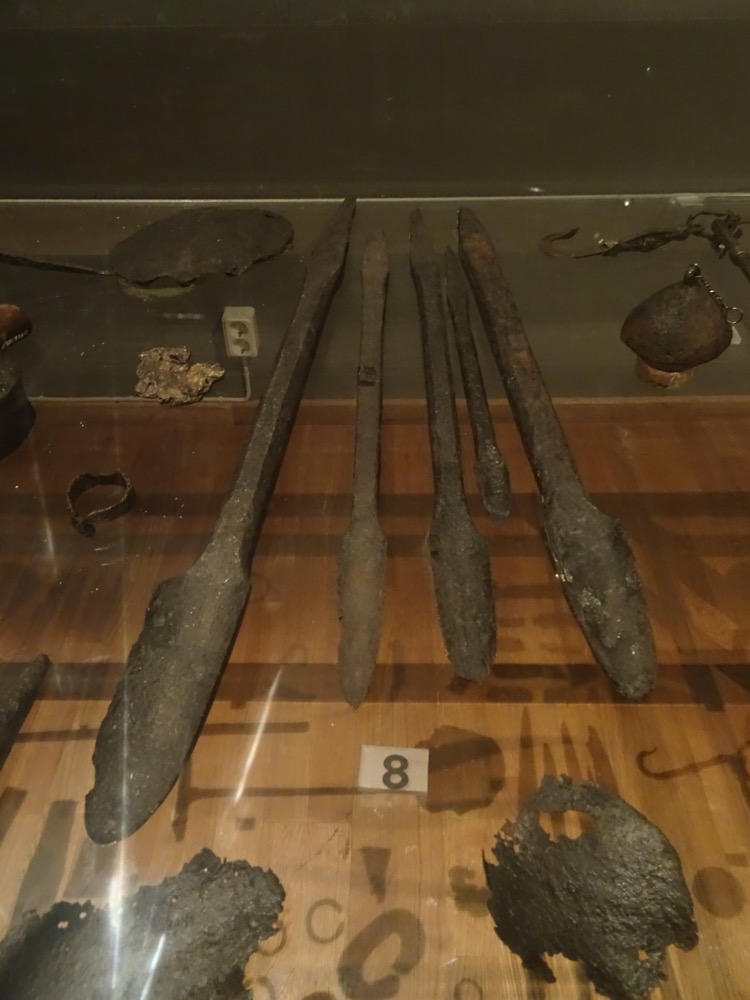
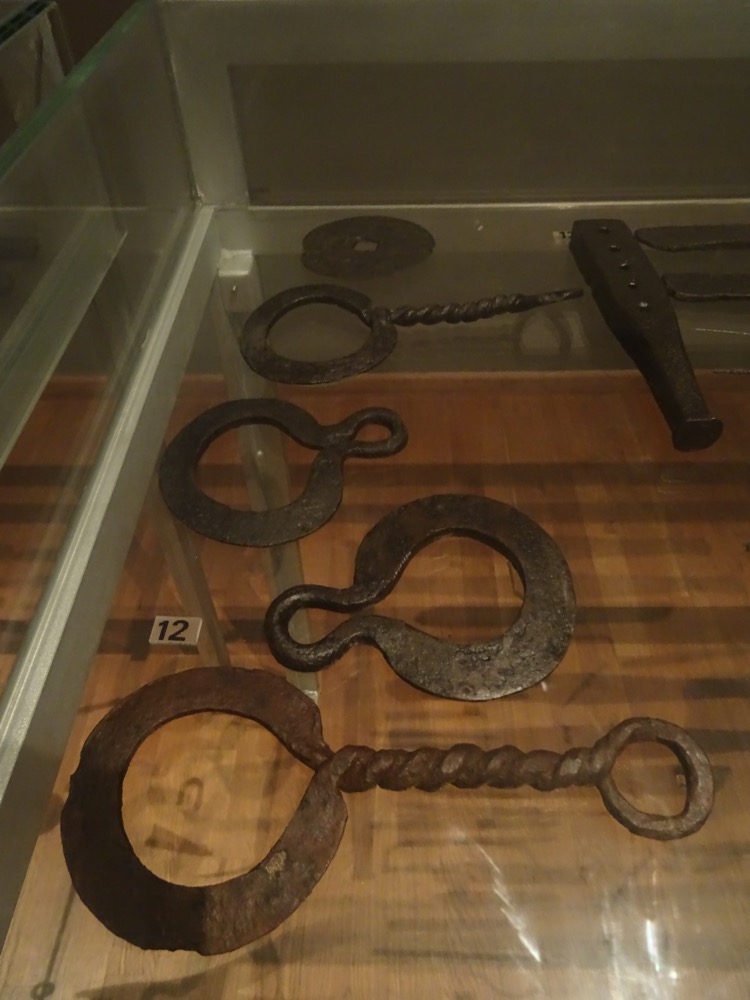
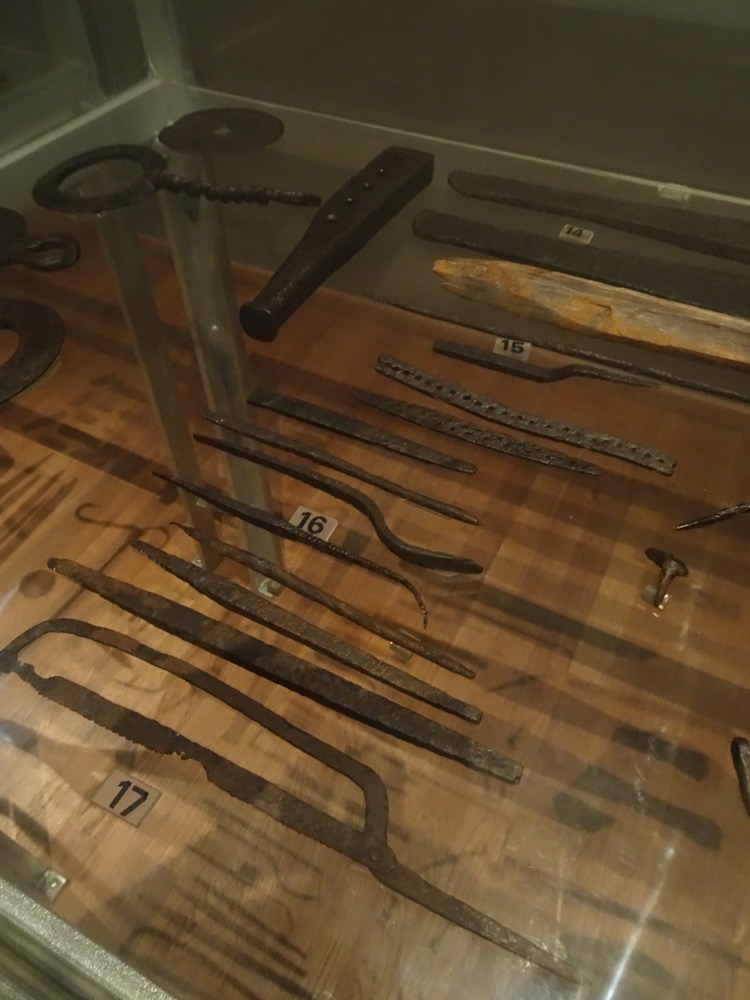
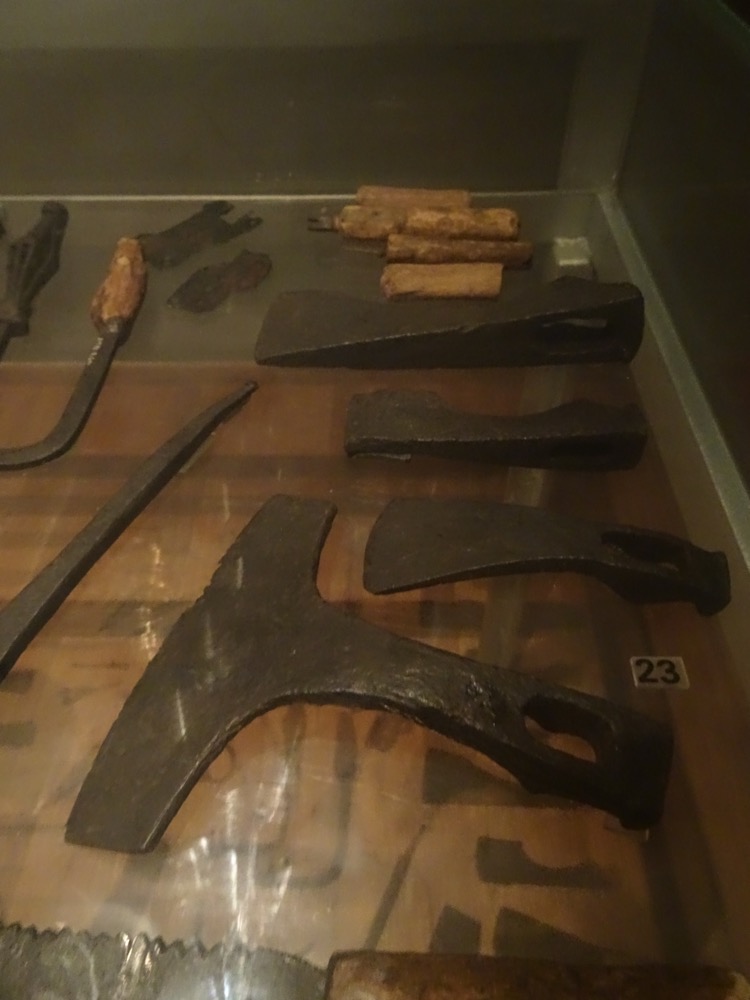 Silver brooch with relief ornamentation, Skane, Rinkaby.
Silver brooch with relief ornamentation, Skane, Rinkaby.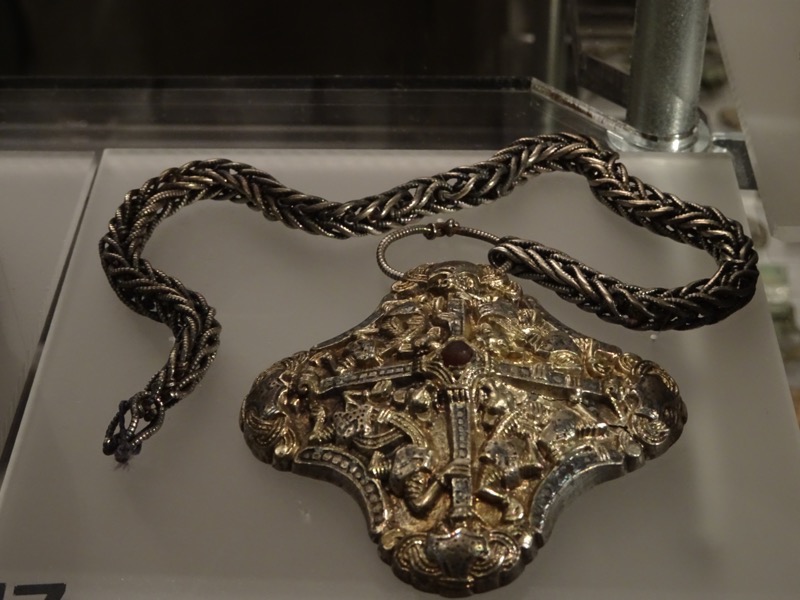
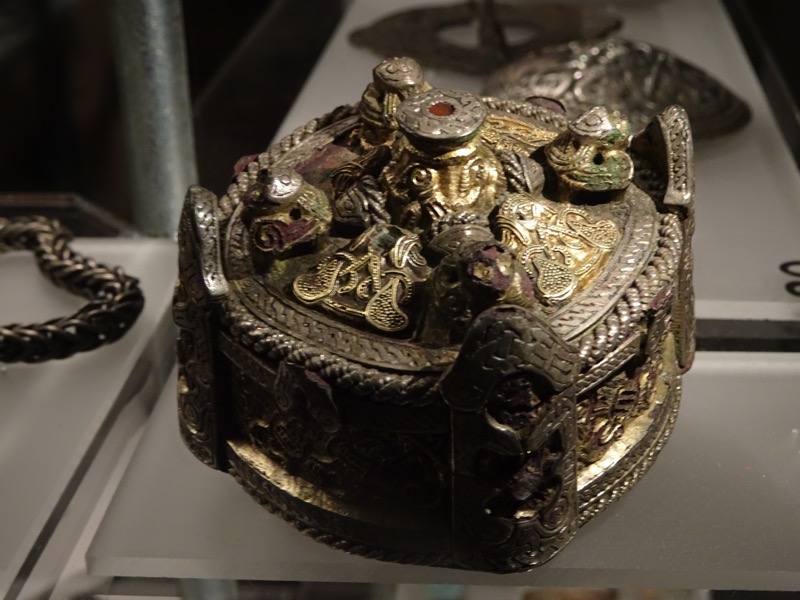
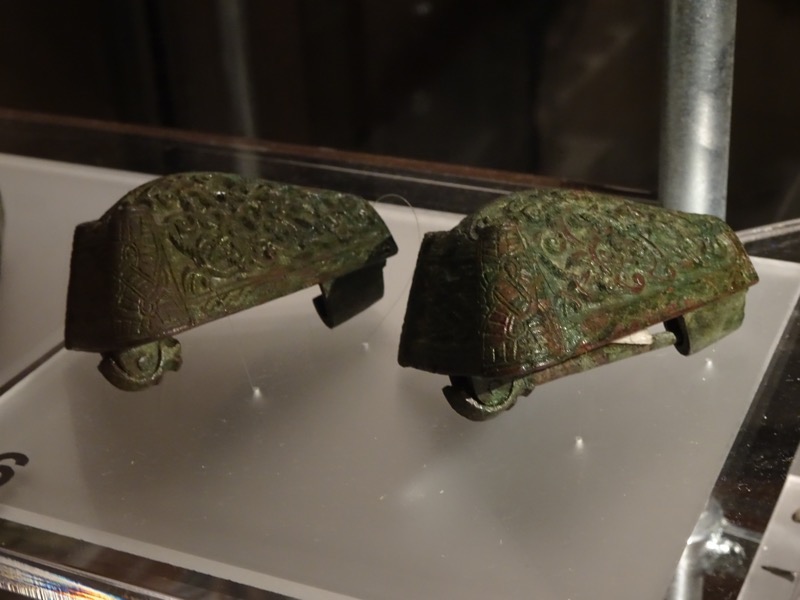 Decorative bronze chains, Birka c.800AD
Decorative bronze chains, Birka c.800AD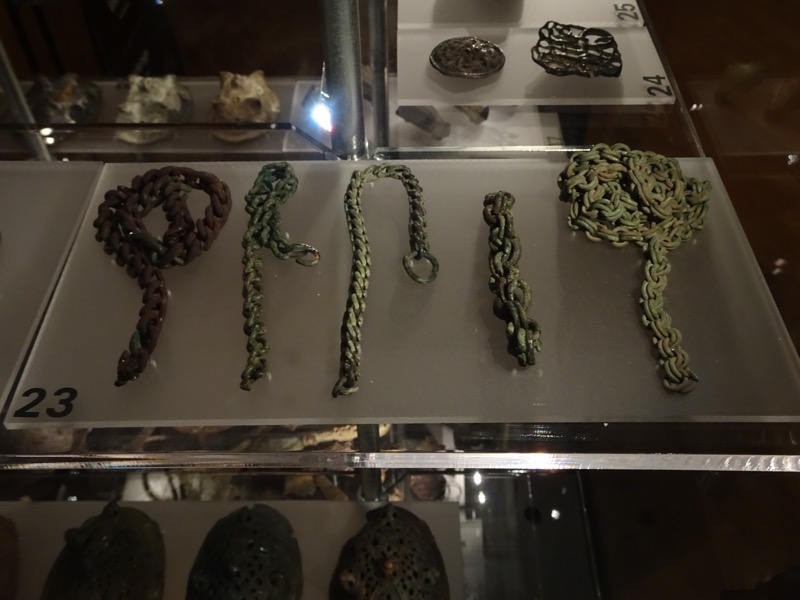 Women’s decorative dress brooches – approximately 12-15cm in length, bronze.
Women’s decorative dress brooches – approximately 12-15cm in length, bronze.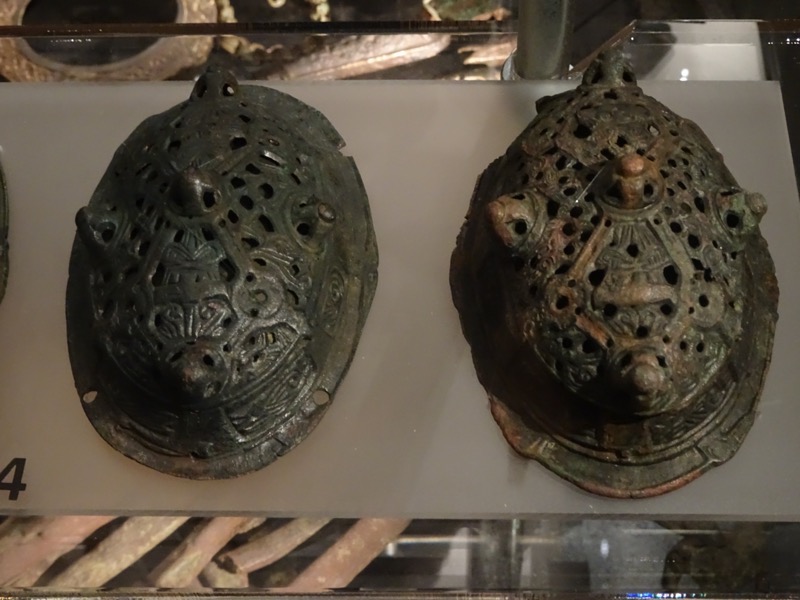
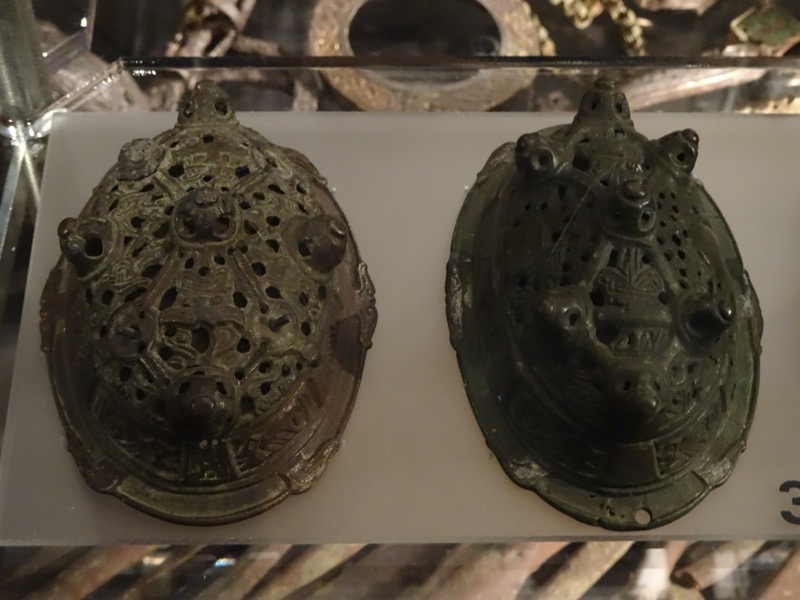
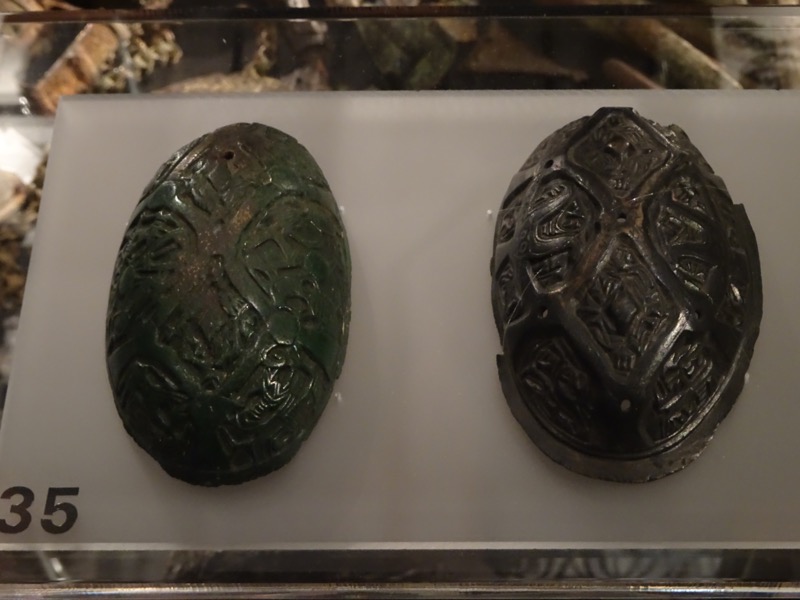
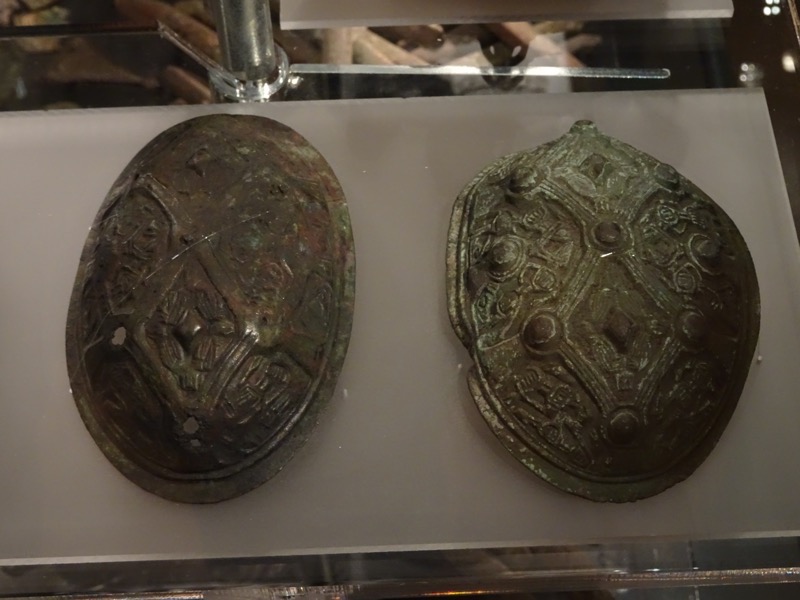
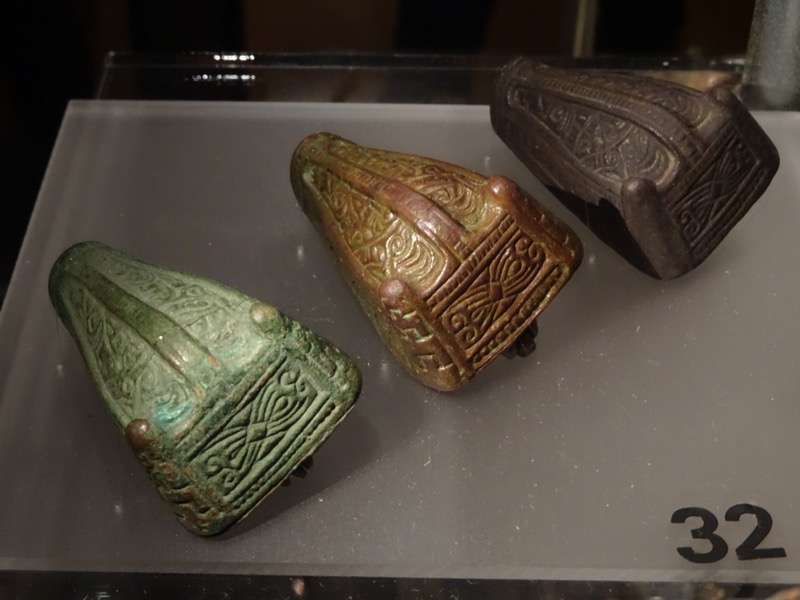
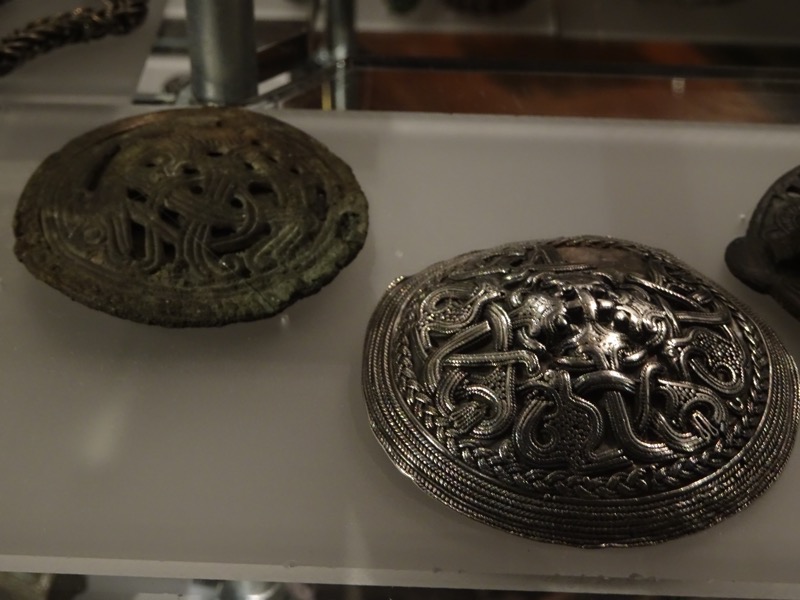
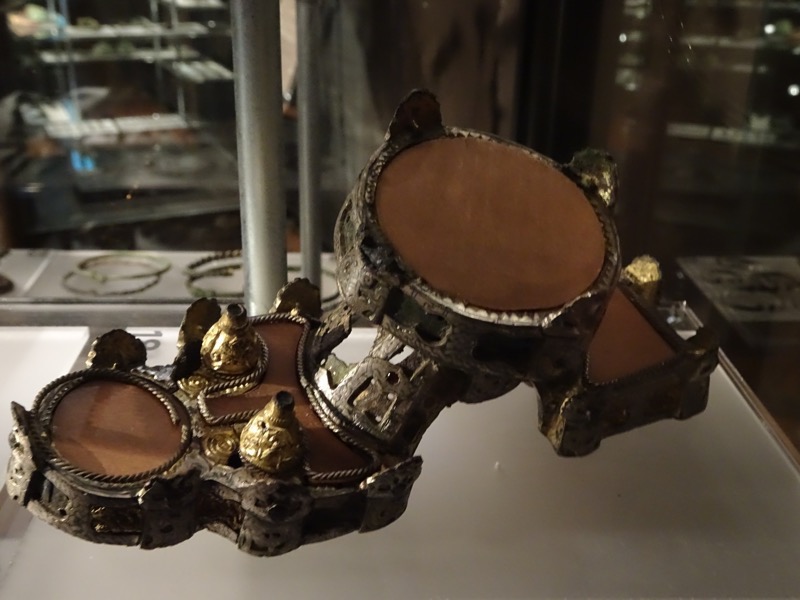
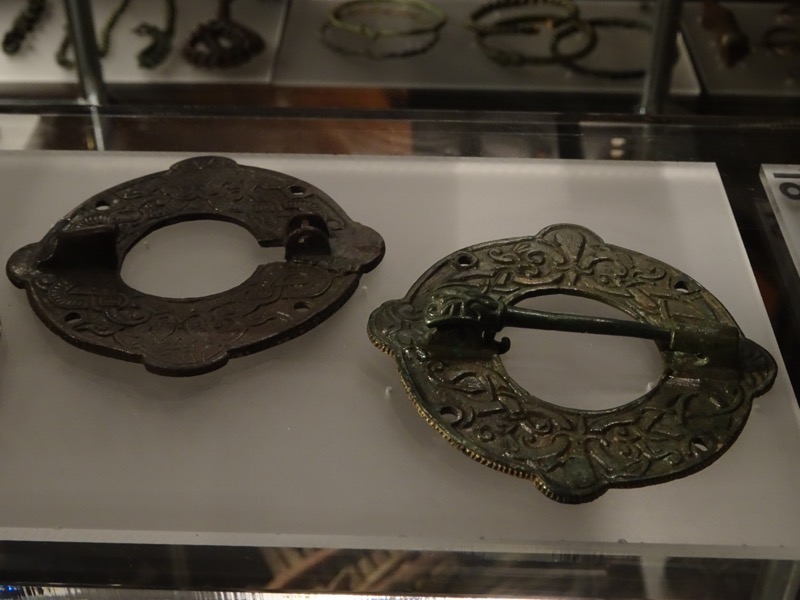
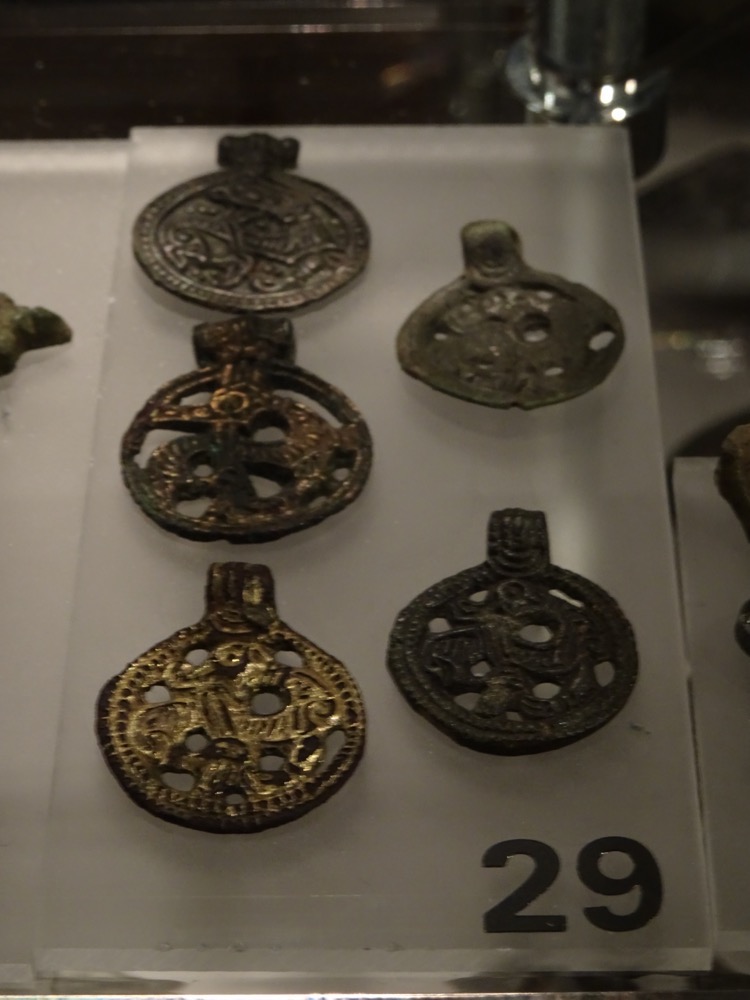
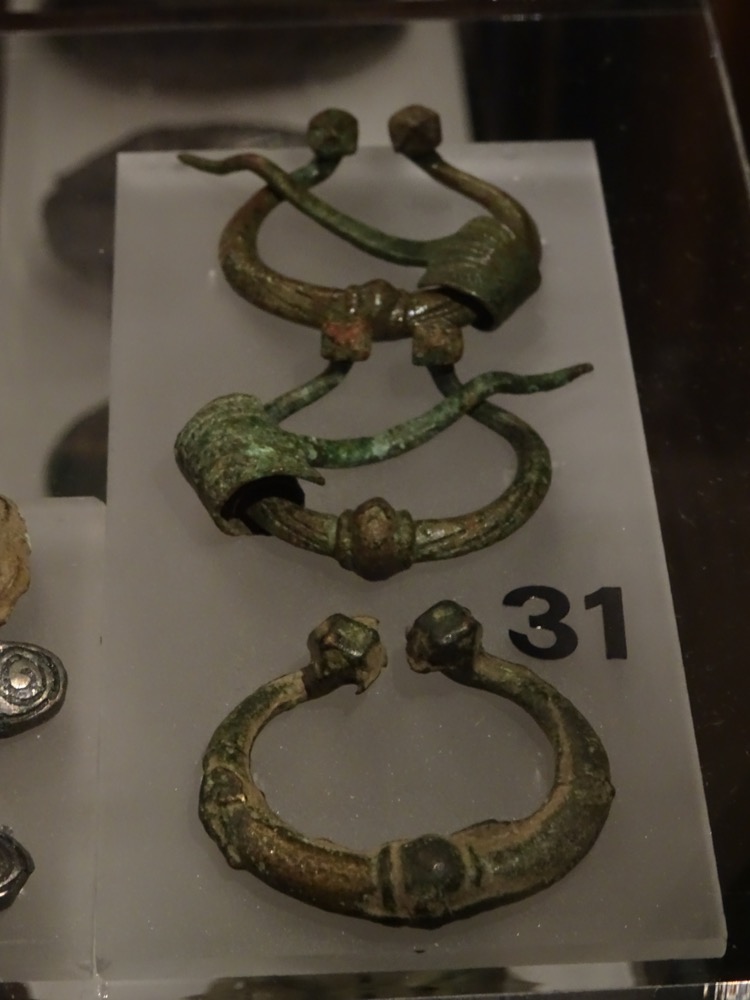
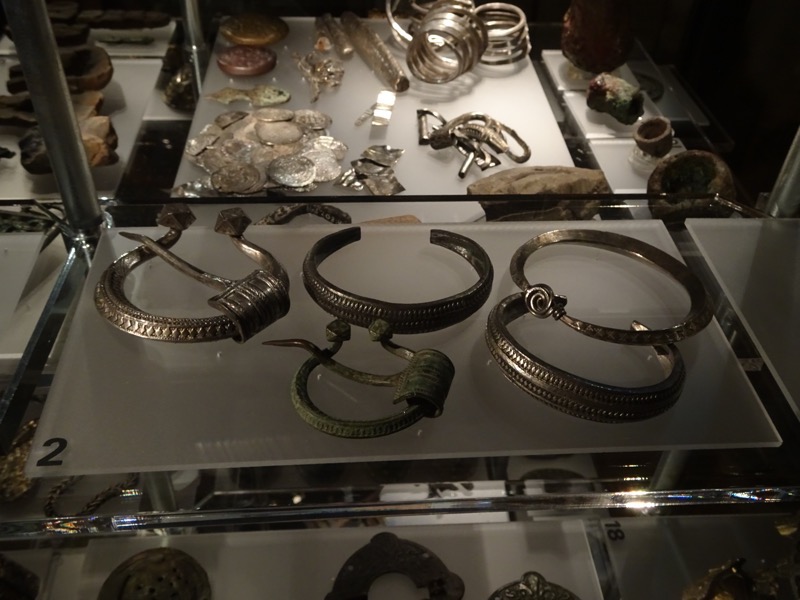
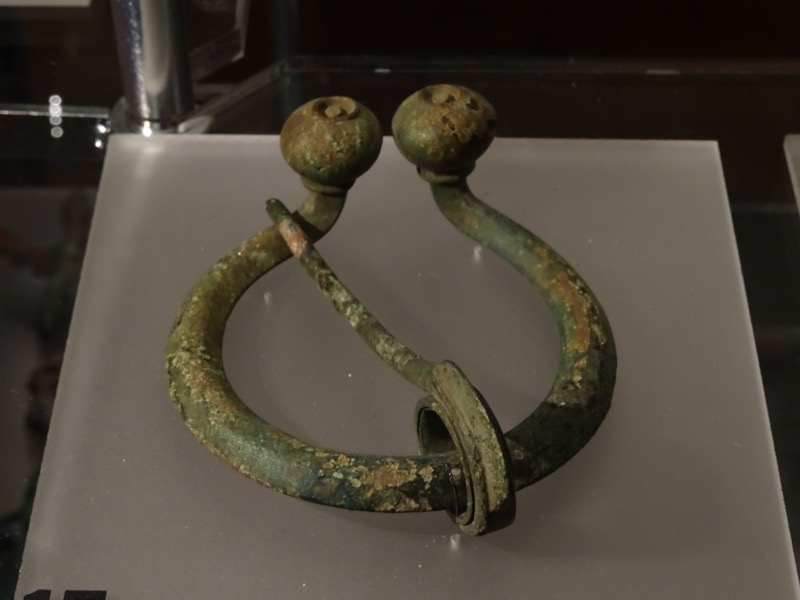
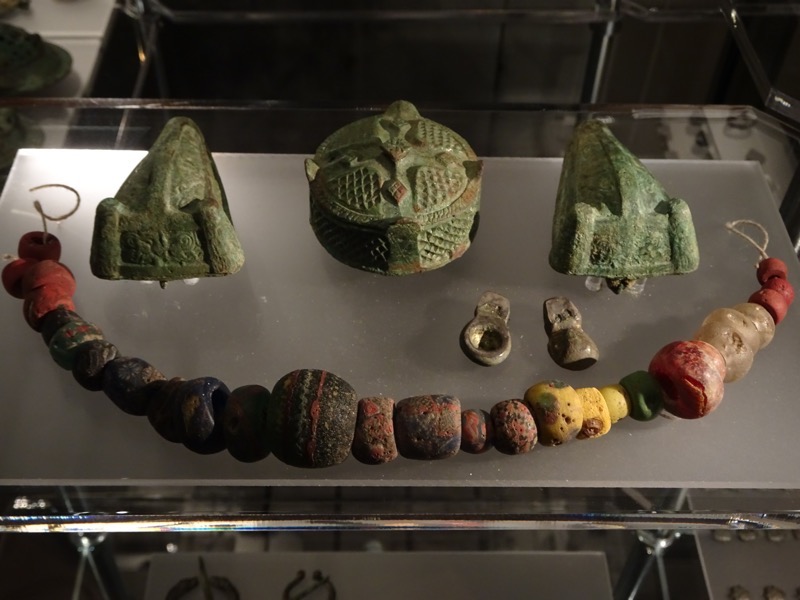
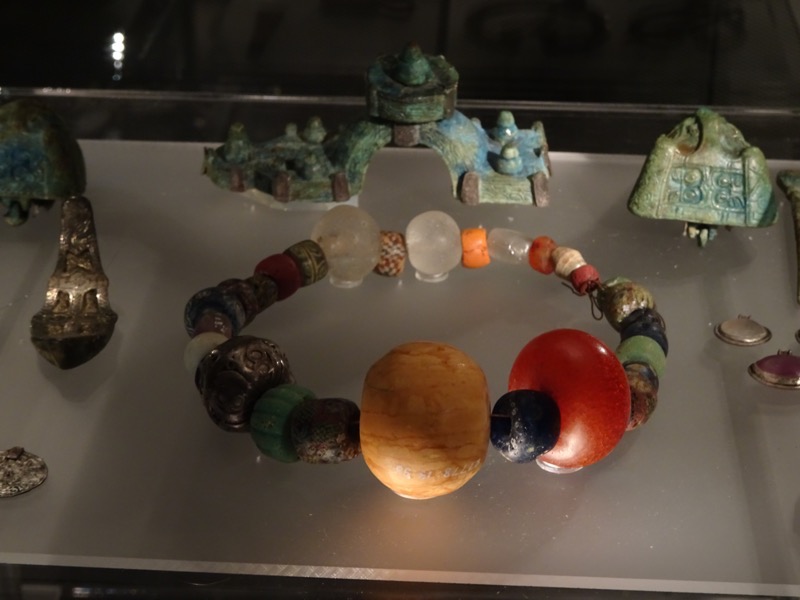
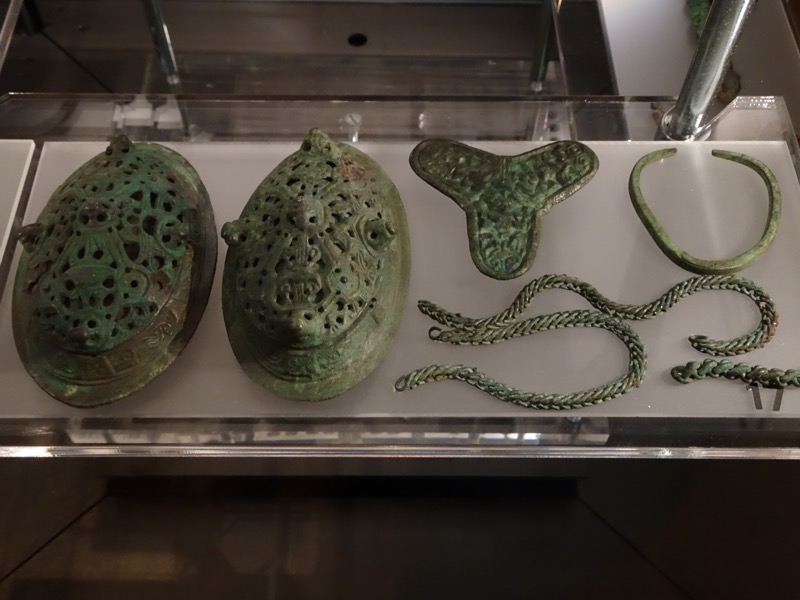
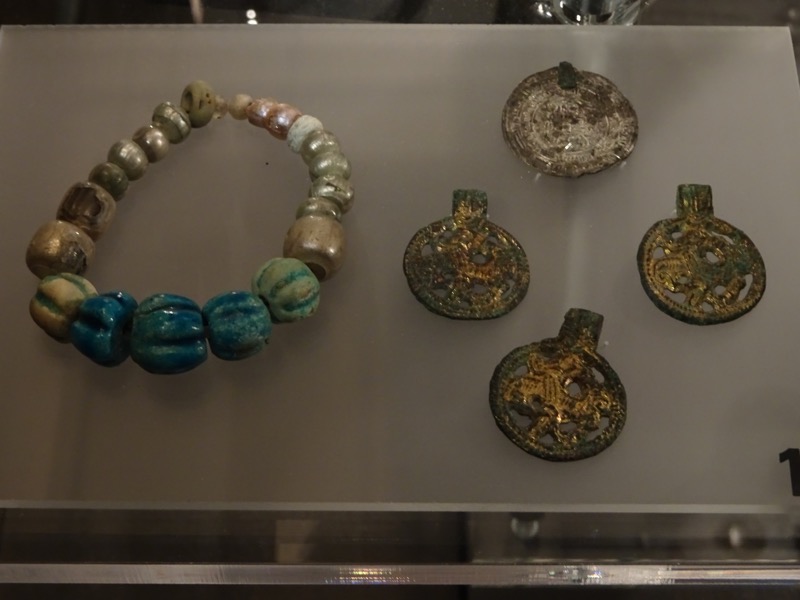
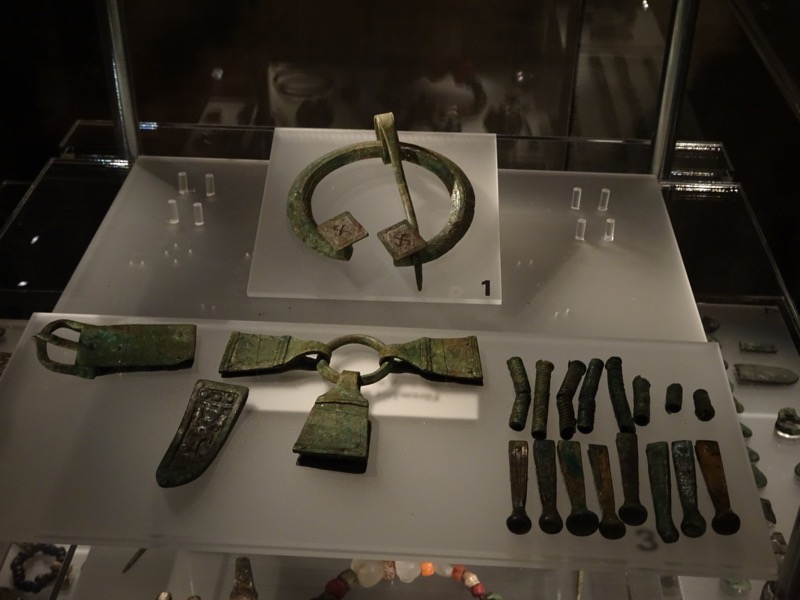 Bronze hook keys, and chain for a woman’s dress, Gotland, Hemse.
Bronze hook keys, and chain for a woman’s dress, Gotland, Hemse.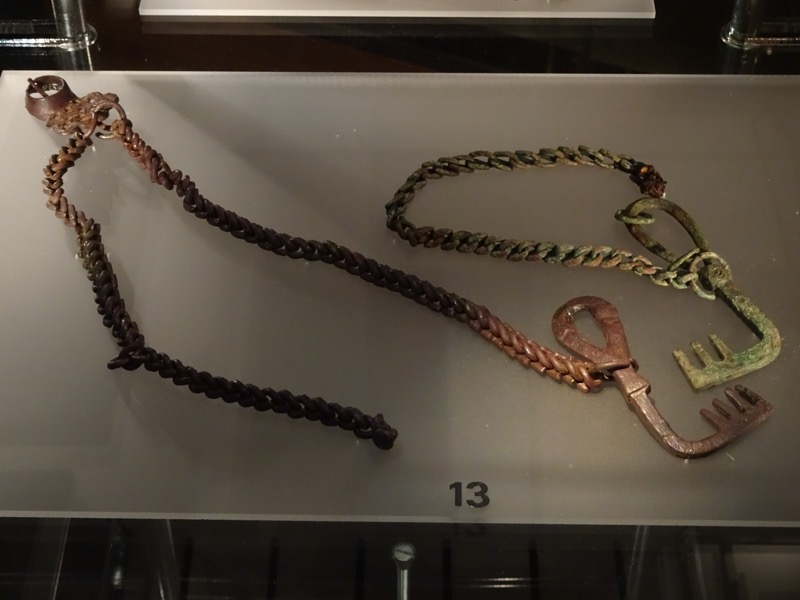
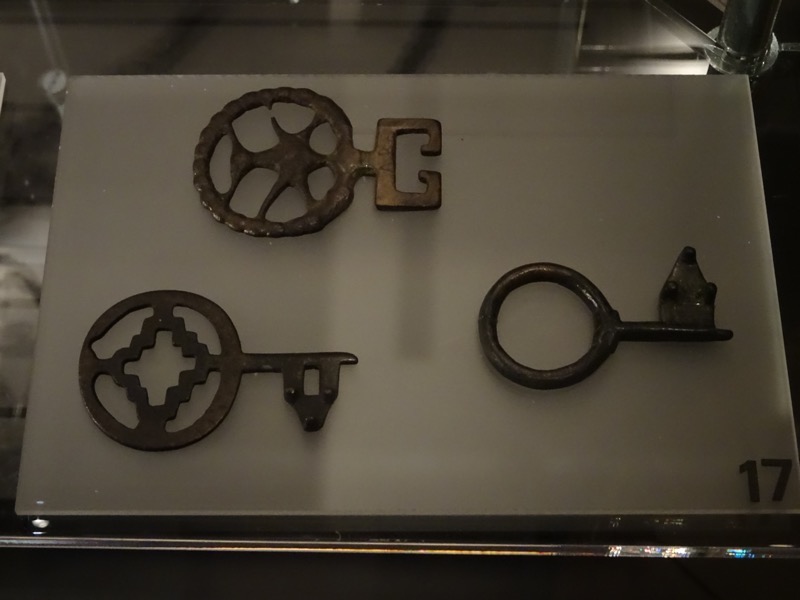 Similar women’s dress keys, much larger than expected. Key in bottom right, approx 10-11cm.
Similar women’s dress keys, much larger than expected. Key in bottom right, approx 10-11cm.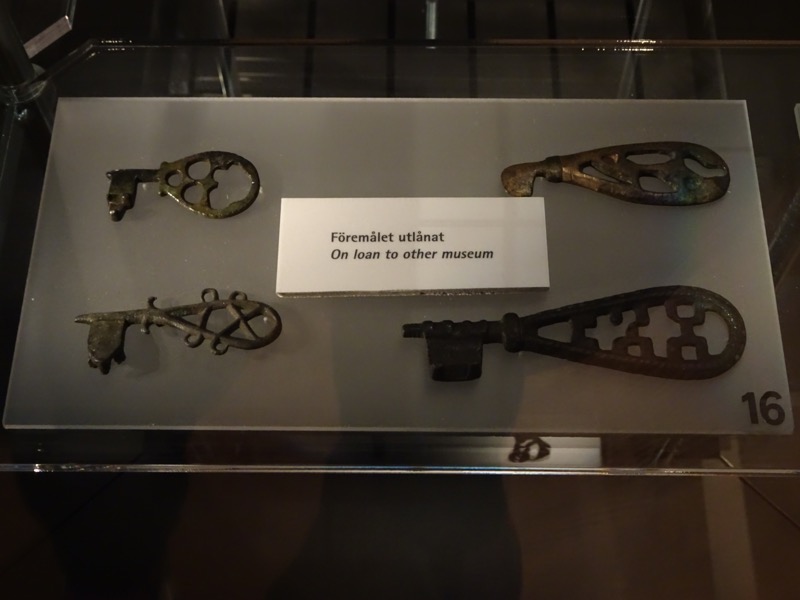
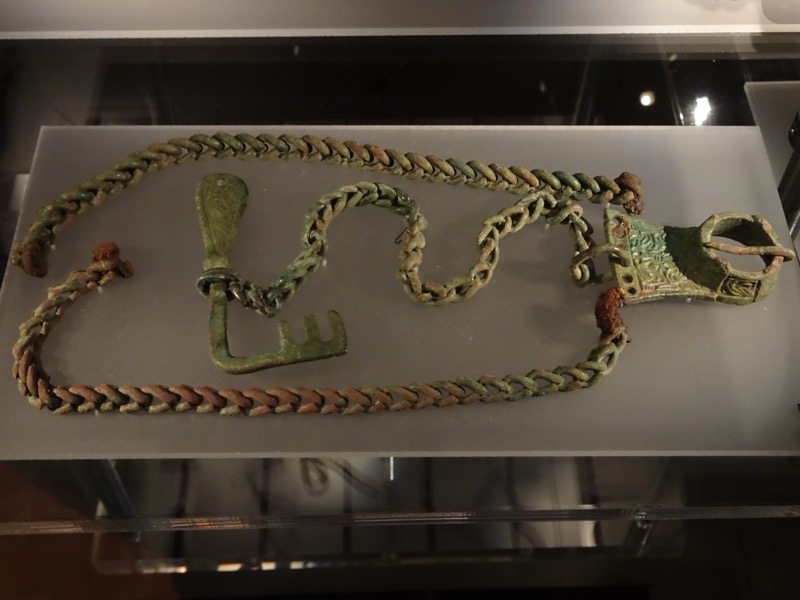
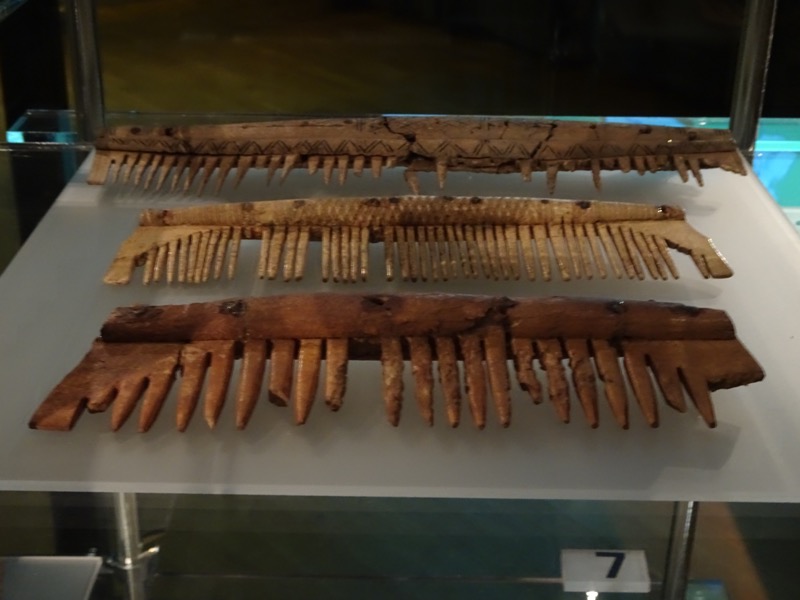 Reconstruction of viking men’s clothing..
Reconstruction of viking men’s clothing..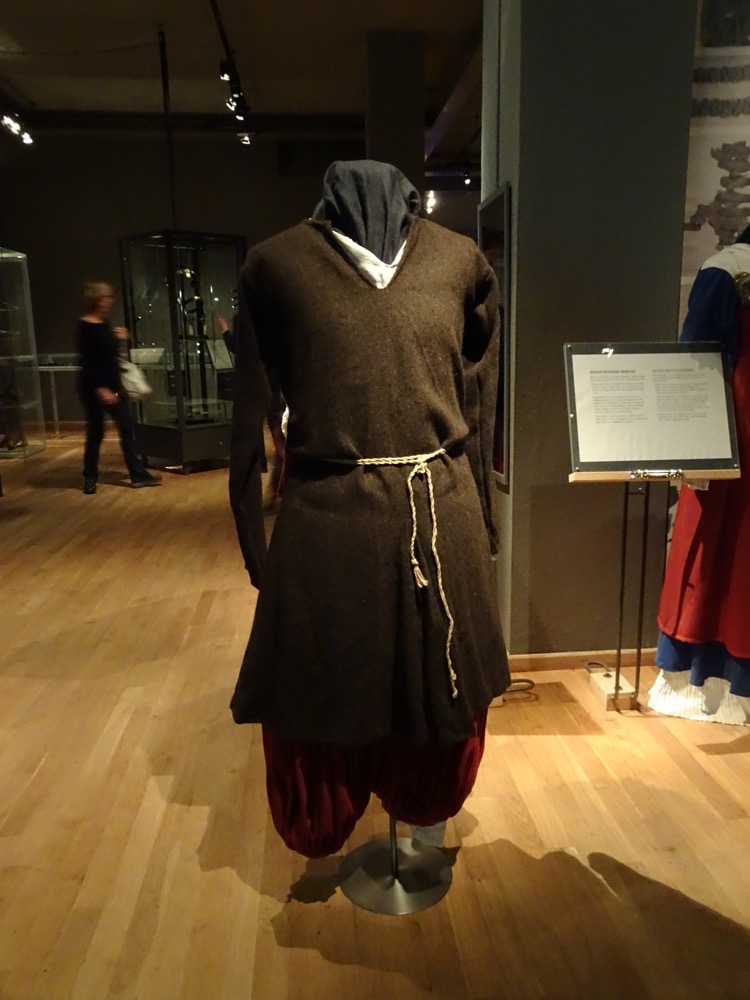 Reconstruction of women’s clothing…
Reconstruction of women’s clothing…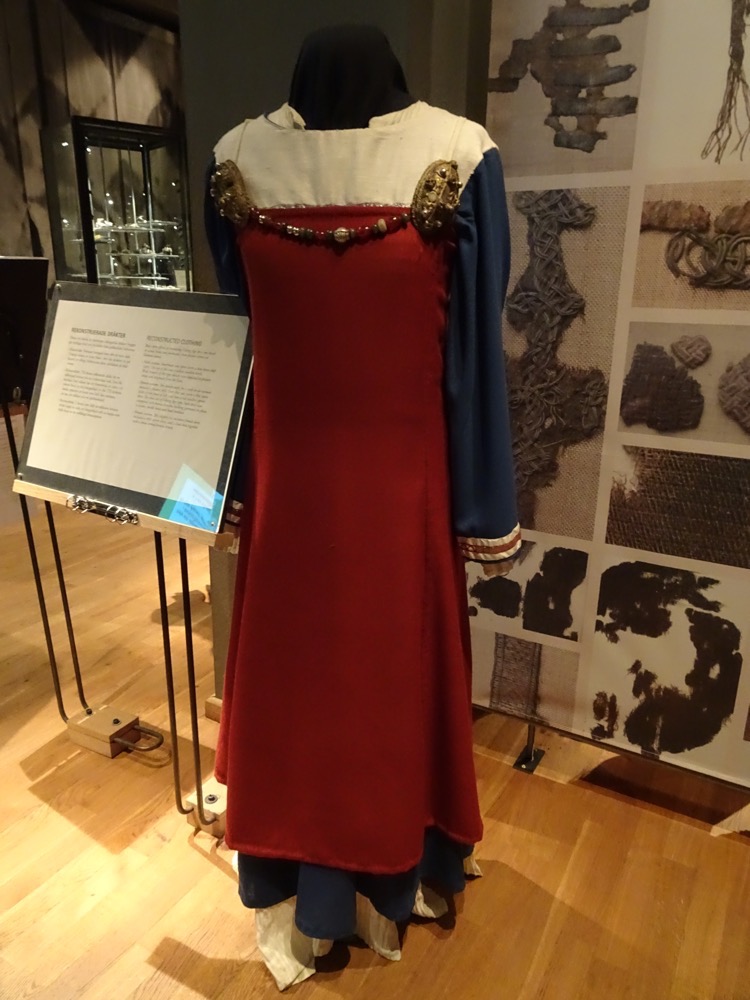

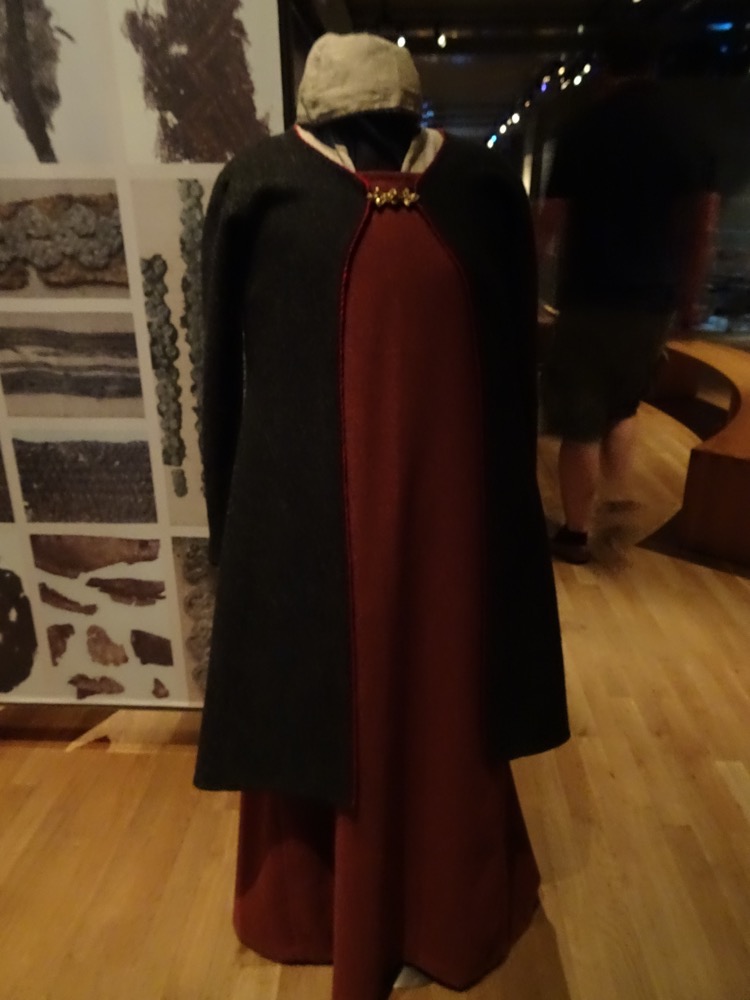
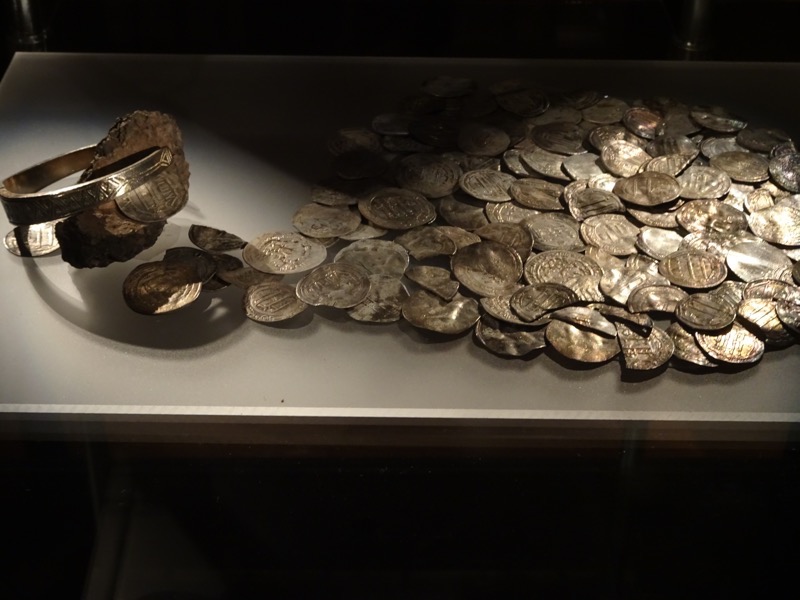 The district of Dalarna and adjacent provinces to the north were centres for the important iron trade, with routes going past lake Siljan. Many valuable iron objects are evident among grave finds from this region, including Solleron.
The district of Dalarna and adjacent provinces to the north were centres for the important iron trade, with routes going past lake Siljan. Many valuable iron objects are evident among grave finds from this region, including Solleron.
Iron sword from a man’s grave (possibly an iron trader), Dalarna, Solleron.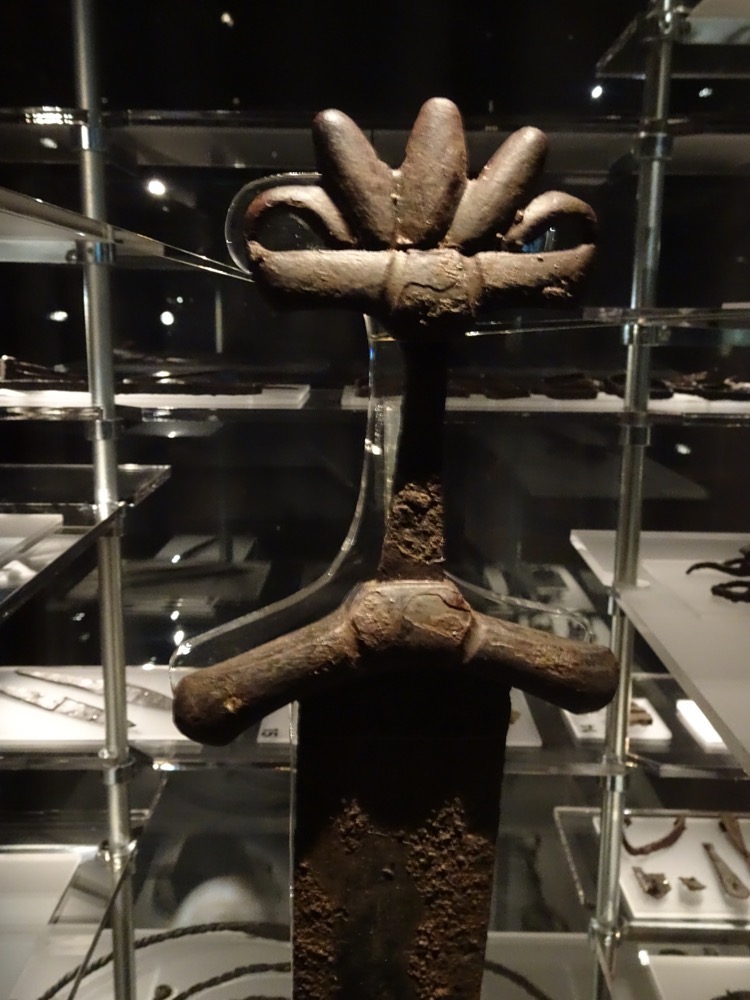
Many children’s items were found at Birka, including jewellery which resembles smaller replica’s of adult jewellery items, and bells of all sizes seem to have been quite common. were able to possess important social positions by virtue of their parentage and as such were often buried in well-equipped graves to demonstrate their status.
Child’s brooches and beads, smaller, simpler and less extravagant than a woman’s accessories, but still used to denote rank and importance.
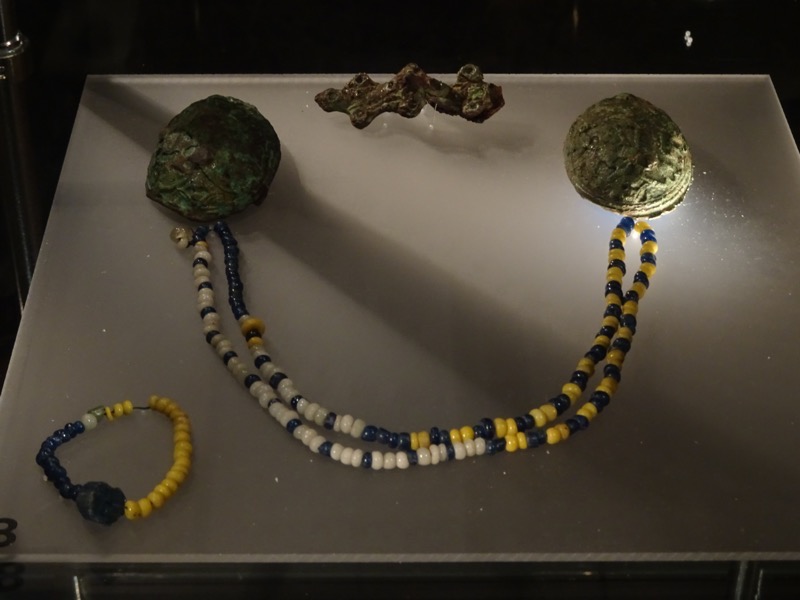 Children’s bell – approximately 2.5 – 3.0cm in diameter. Many other examples roughly 2cm in size.
Children’s bell – approximately 2.5 – 3.0cm in diameter. Many other examples roughly 2cm in size.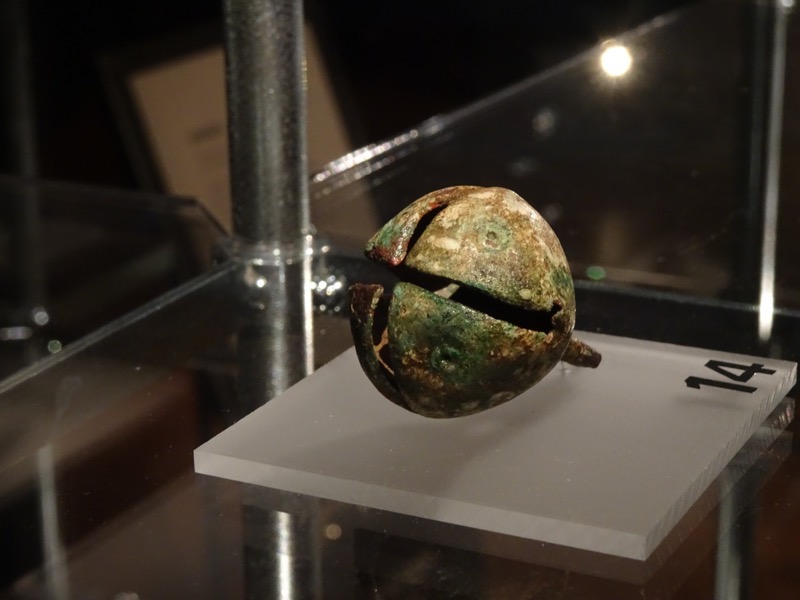 The Ruler of Oland: A burial grave of regal splendour was found in Kopingsvik on the Island of Oland. She was buried with a staff made of iron and bronze, indicating her religious position as an Old Norse female cult leader, called a Volur, meaning ‘staff carrier’. She would have been the leader of a very wealthy clan on Oland, perhaps the most powerful on the island.
The Ruler of Oland: A burial grave of regal splendour was found in Kopingsvik on the Island of Oland. She was buried with a staff made of iron and bronze, indicating her religious position as an Old Norse female cult leader, called a Volur, meaning ‘staff carrier’. She would have been the leader of a very wealthy clan on Oland, perhaps the most powerful on the island.
She was buried inside a ship with several animals having been sacrificed in her burial ceremony. The fact that a man was burned at the same time as the woman indicates a human sacrifice. Bear claws indicate that the deceased was wrapped in a bearskin.
Brooches and beads of the Ruler of Oland.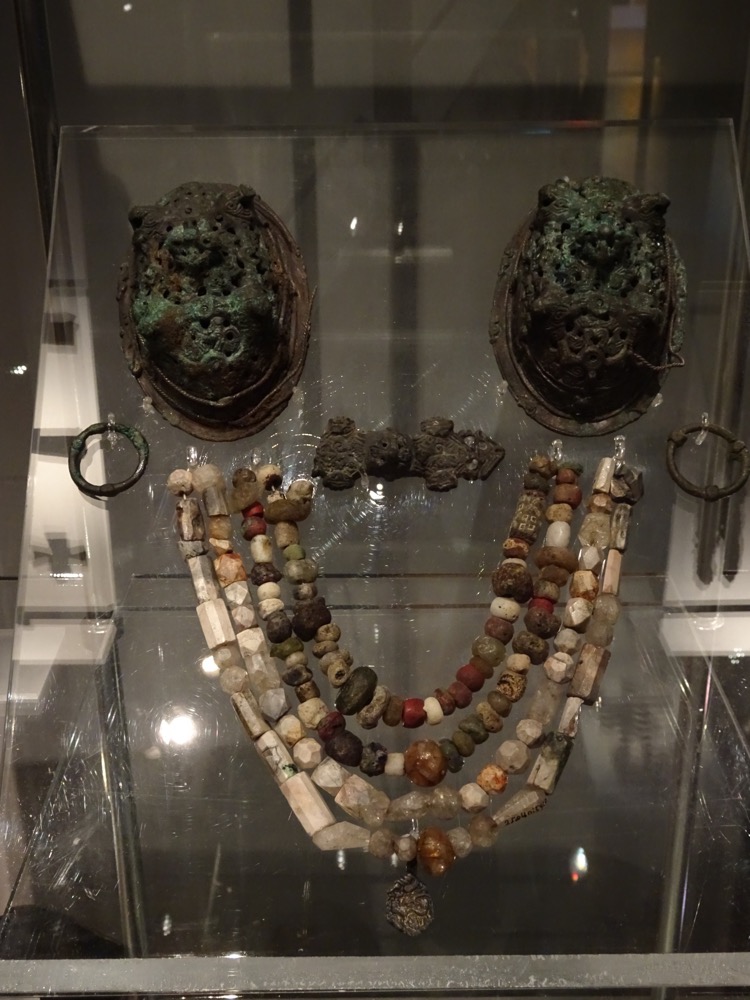
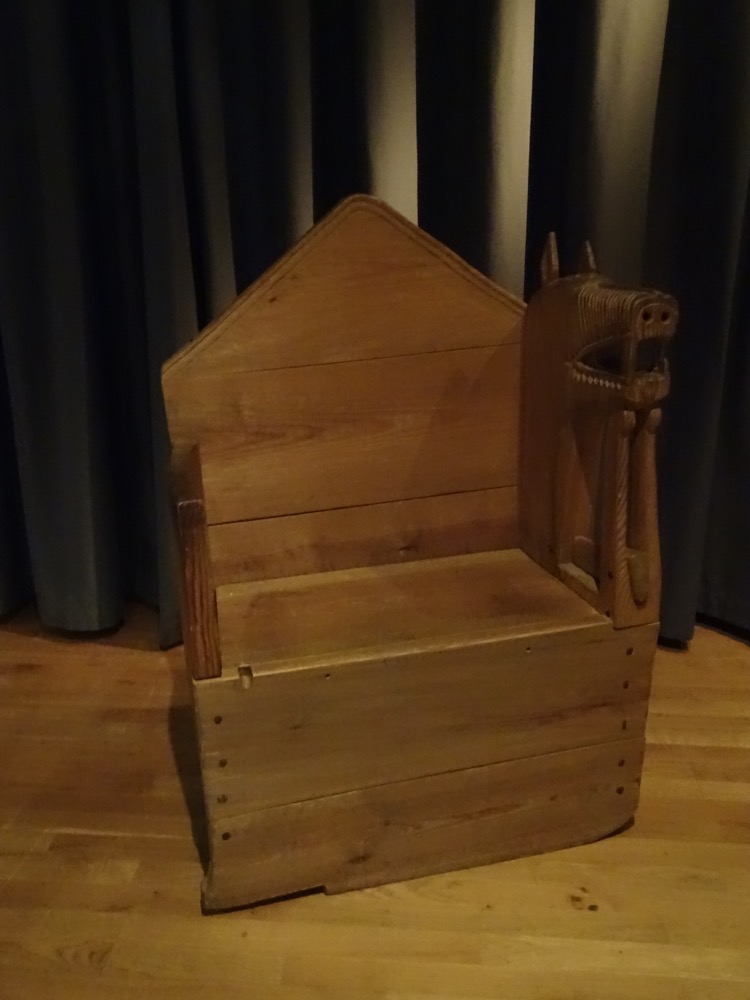 Reconstruced ‘throne’ of the Ruler of Oland.
Reconstruced ‘throne’ of the Ruler of Oland.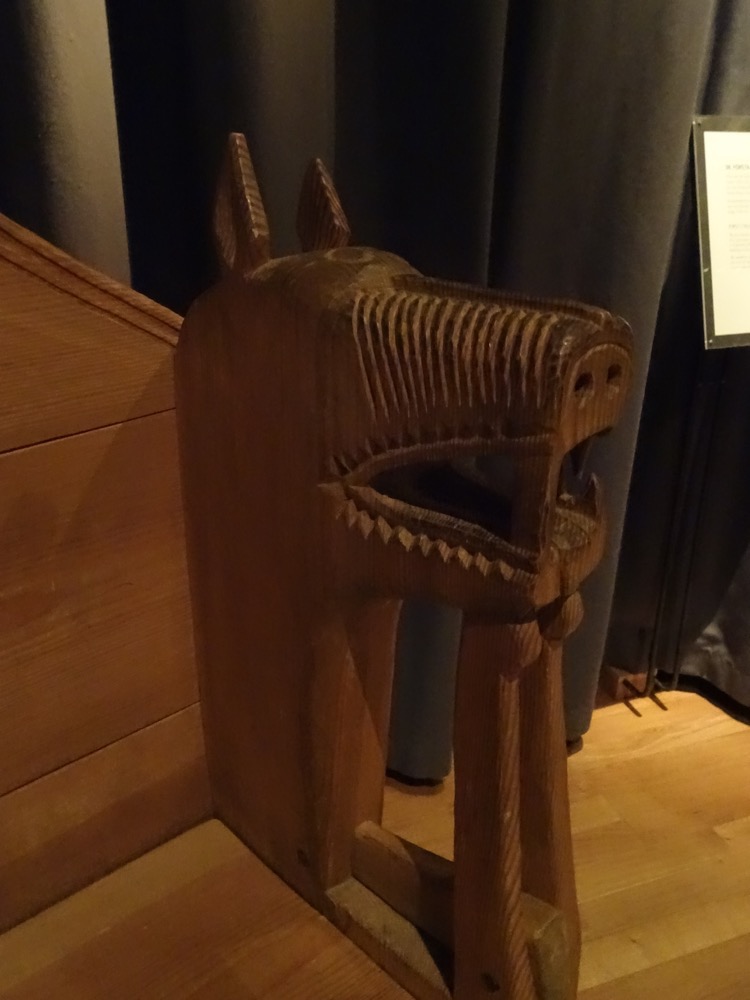
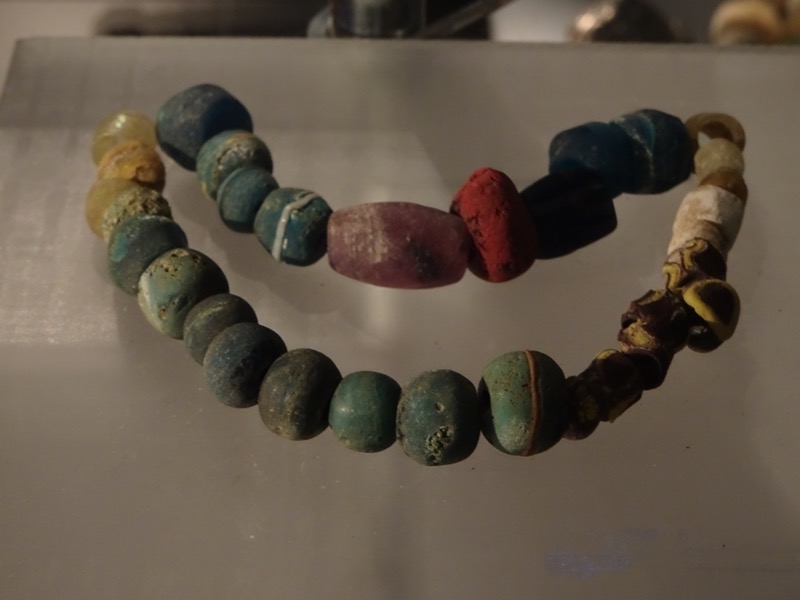
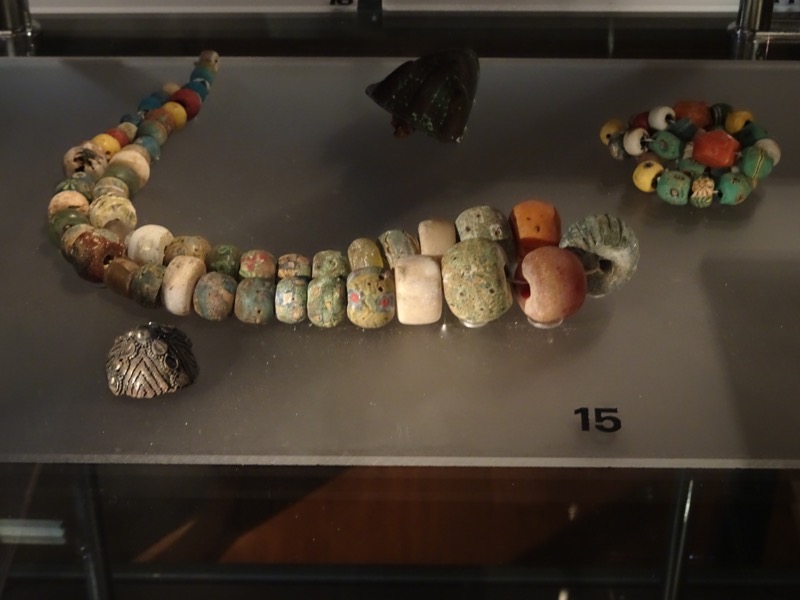
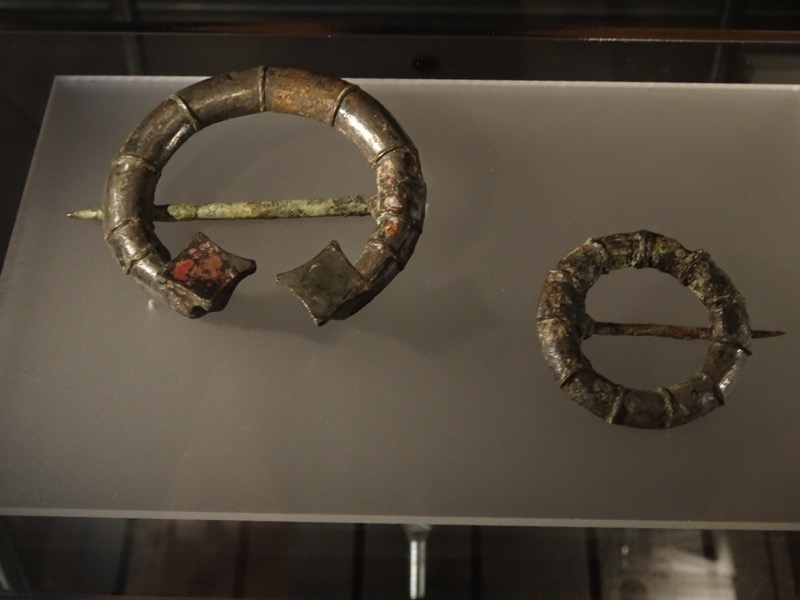
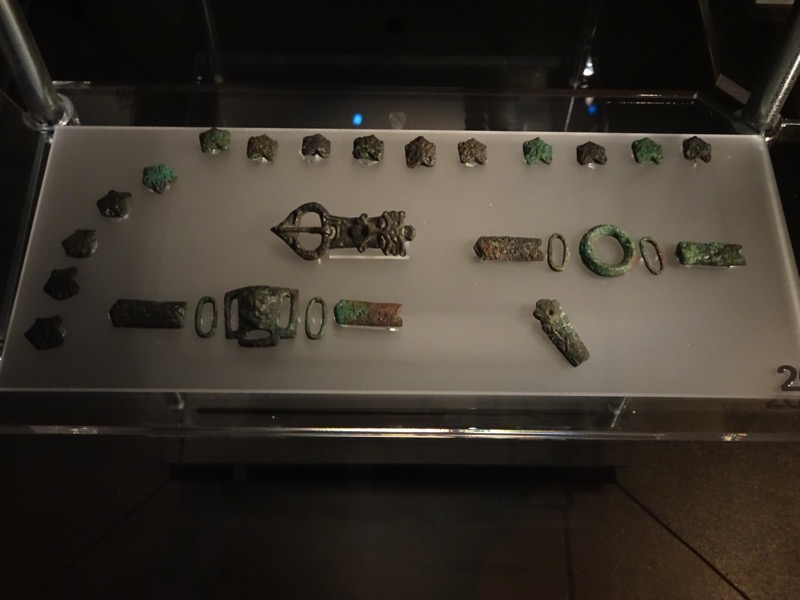
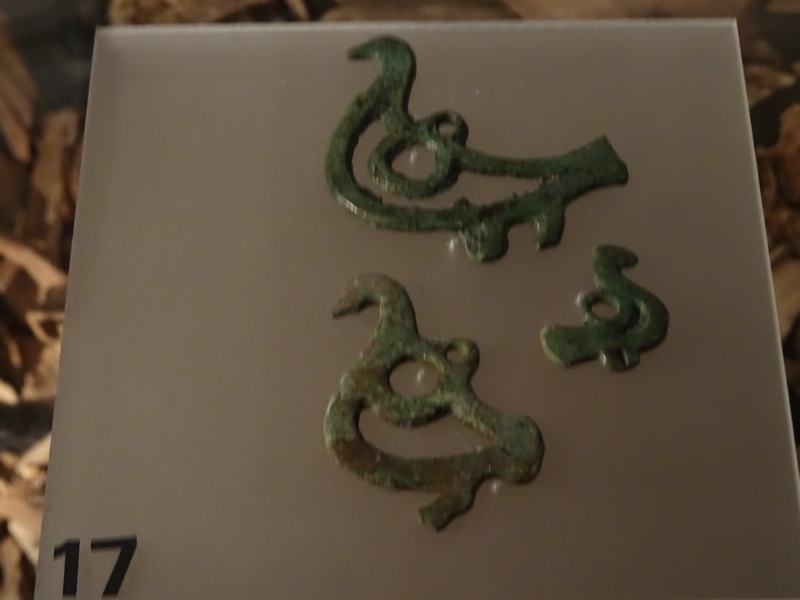
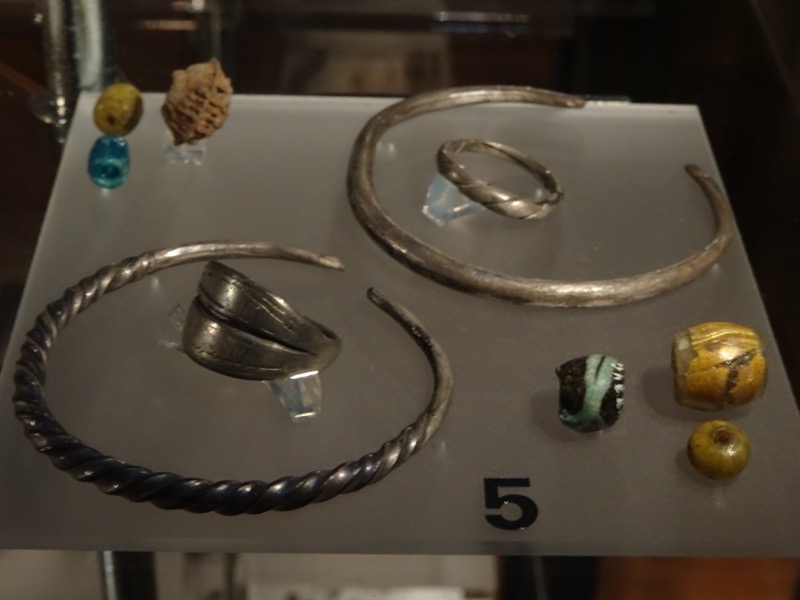
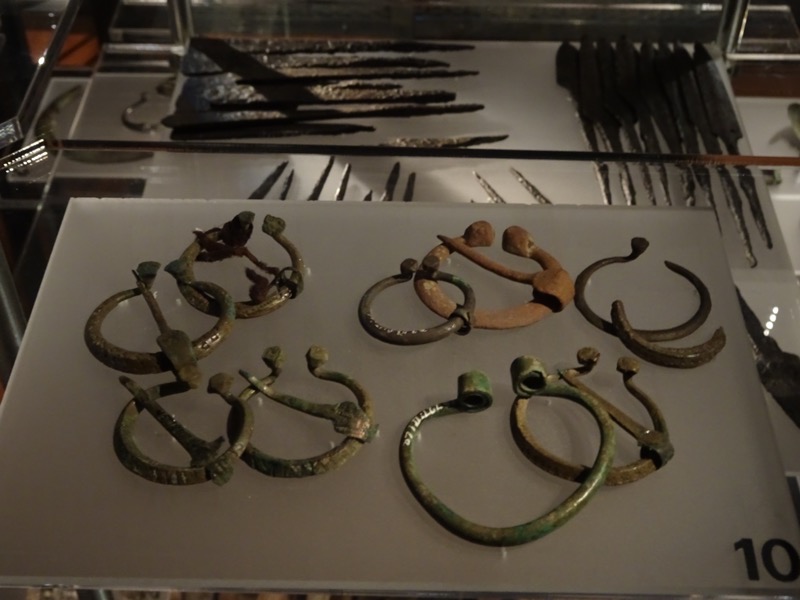 In eastern Scandinavia, the spread of Christianity varied from district to district. This display is of finds from the Garda cemetery on Gotland Island. Christian graves did not generally reveal as many artefacts as a pagan Viking grave.
In eastern Scandinavia, the spread of Christianity varied from district to district. This display is of finds from the Garda cemetery on Gotland Island. Christian graves did not generally reveal as many artefacts as a pagan Viking grave.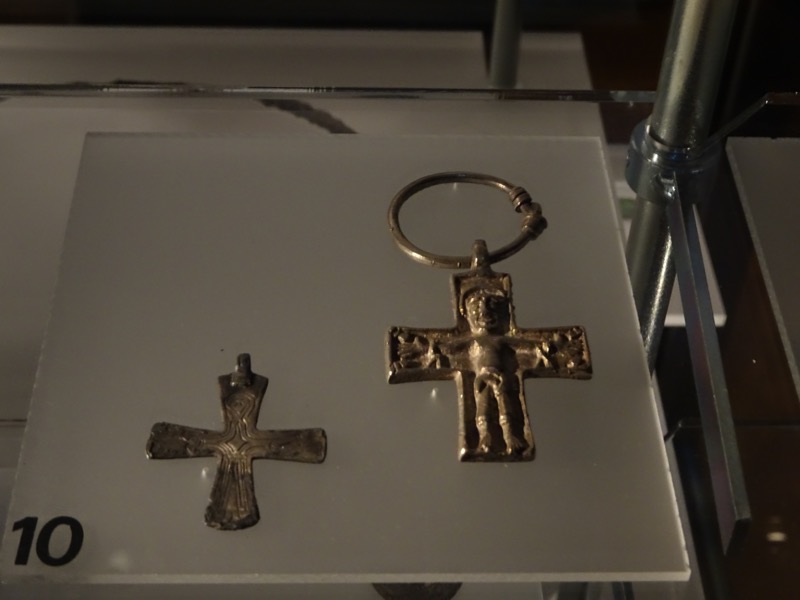 Displaced items: This crozier was found on Helgo Island – it is from Ireland and contains a Buddha figurine from India. Additionally, in the same Viking long hall on Helgo Island, a ladle from the Eastern Mediterranean was found as well… Archeologist have determined that the Buddha is 6thC Indian in origin, coiled in the top of a crozier that was made in Ireland c800AD. It may be related to the Coptic Christian Church and the objects may have arrived on Helgo Island as exclusive aristocratic gifts or pillaged goods.
Displaced items: This crozier was found on Helgo Island – it is from Ireland and contains a Buddha figurine from India. Additionally, in the same Viking long hall on Helgo Island, a ladle from the Eastern Mediterranean was found as well… Archeologist have determined that the Buddha is 6thC Indian in origin, coiled in the top of a crozier that was made in Ireland c800AD. It may be related to the Coptic Christian Church and the objects may have arrived on Helgo Island as exclusive aristocratic gifts or pillaged goods.
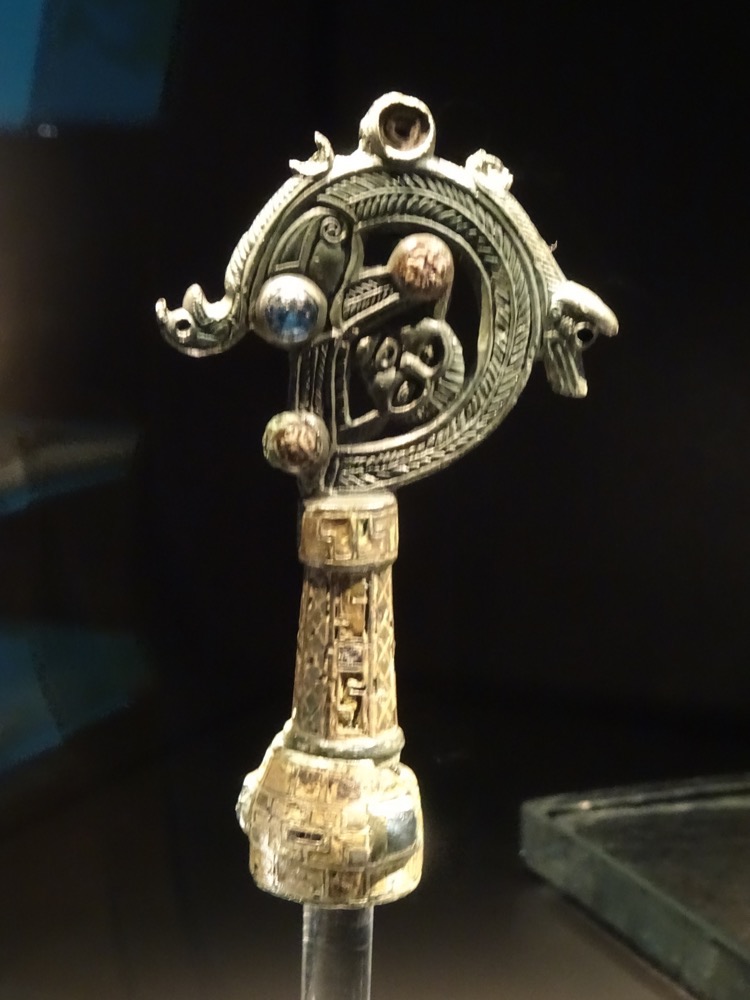 Mediterranean ladle found in a Viking long hall site on Helgo Island.
Mediterranean ladle found in a Viking long hall site on Helgo Island.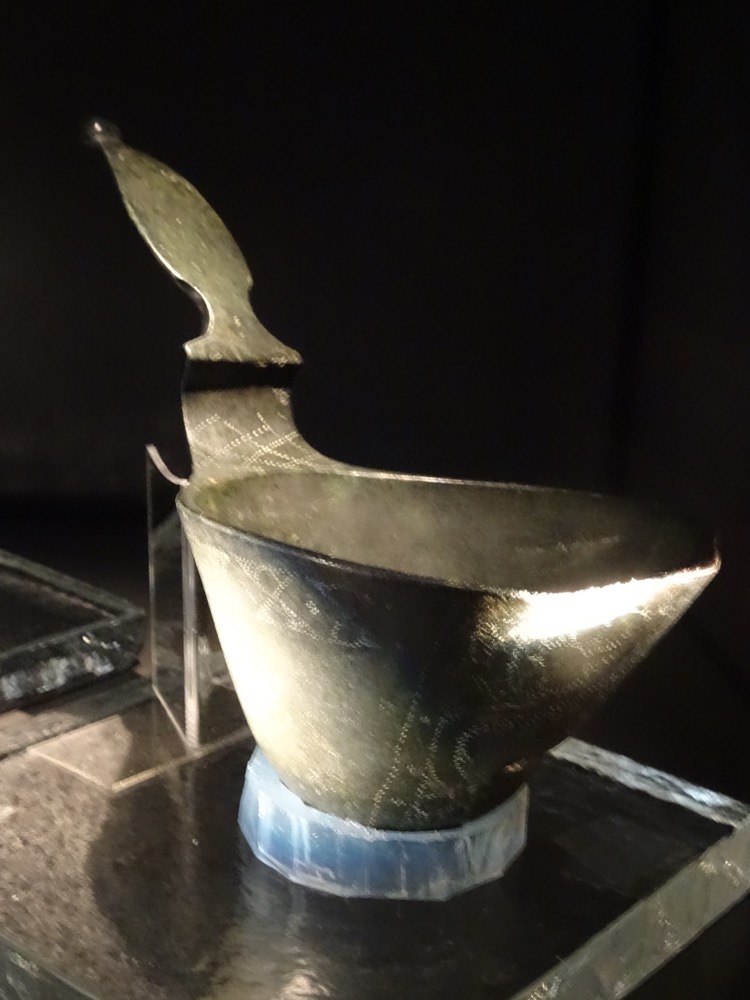
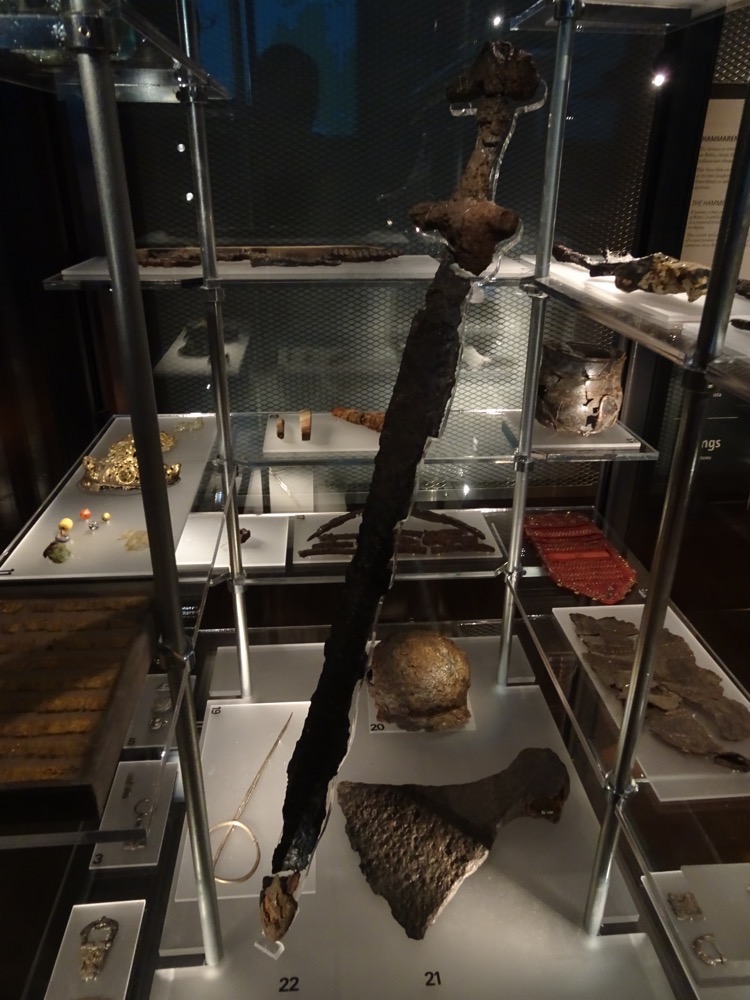
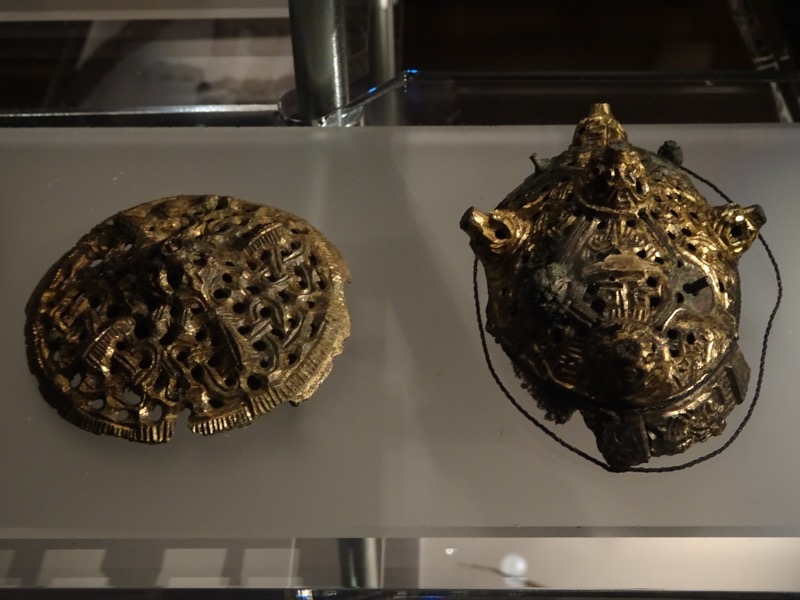 Baptismal font from Norum, Bohuslan province. The image etched on the font depicts Gunnar in the snake pit – a scene from the famed Volsunga Saga; demonstrating that the early Christian church blended heathen myths with Christian precepts. The rune text reads “Sven made me”
Baptismal font from Norum, Bohuslan province. The image etched on the font depicts Gunnar in the snake pit – a scene from the famed Volsunga Saga; demonstrating that the early Christian church blended heathen myths with Christian precepts. The rune text reads “Sven made me”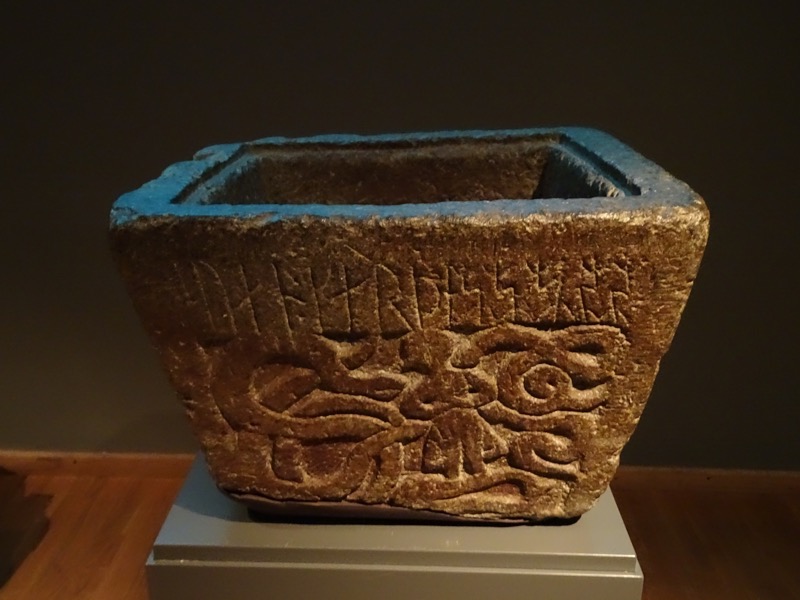
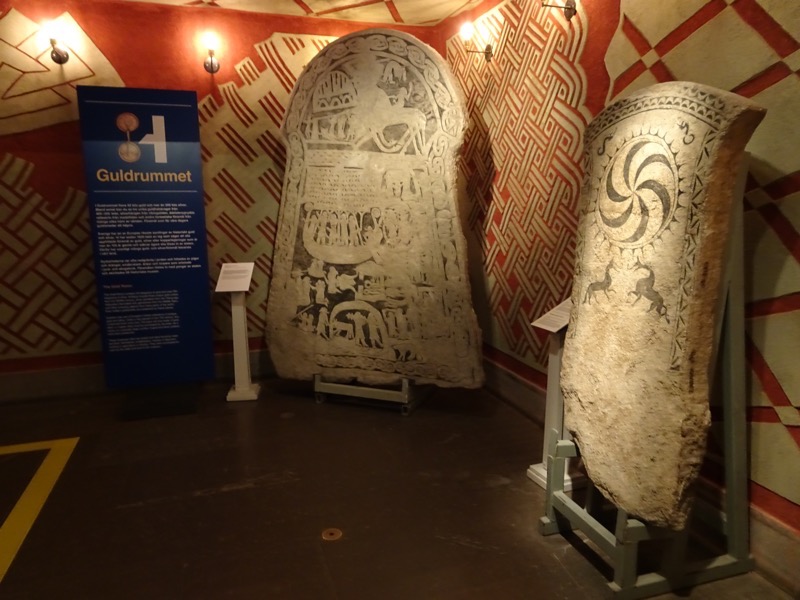
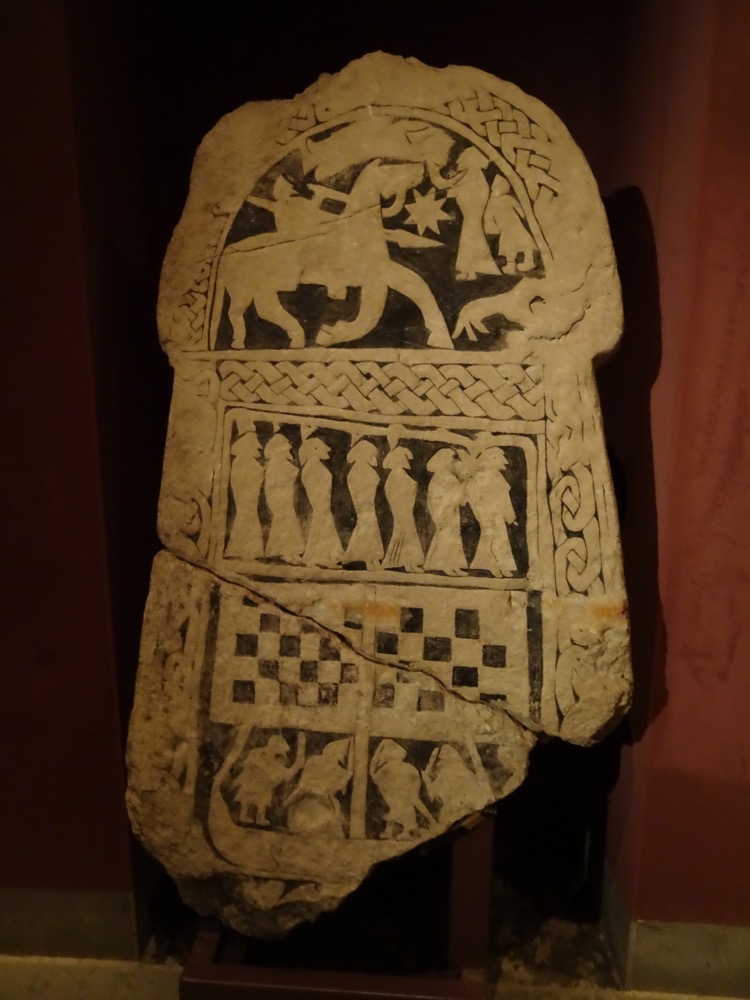
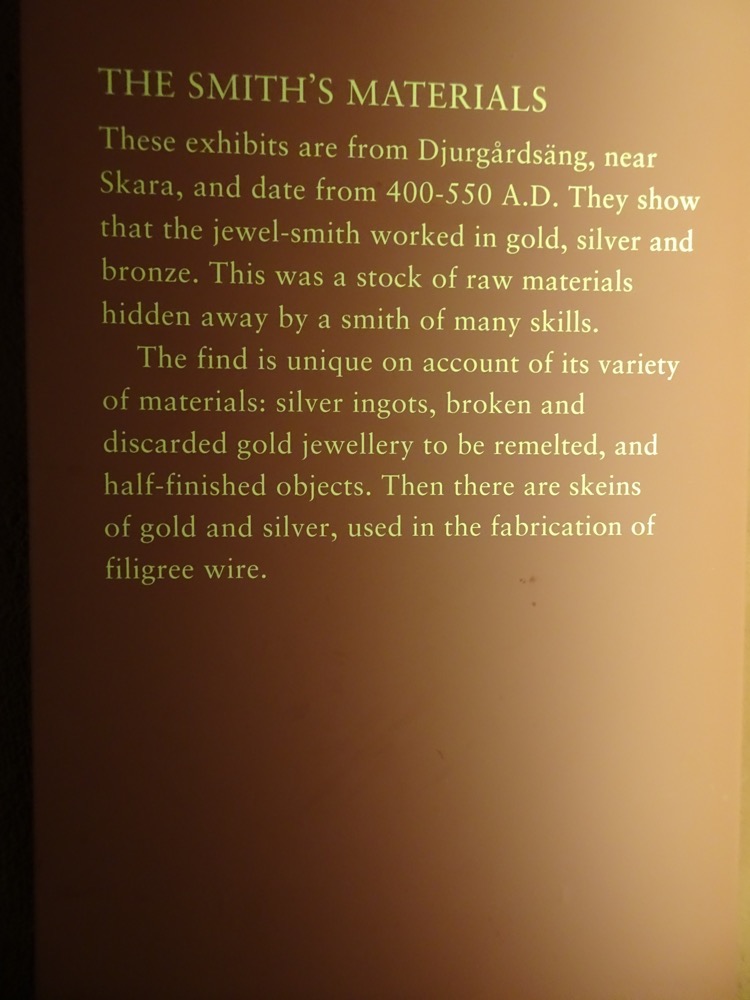
Blasted into the bedrock beneath the central courtyard is a 700 m2 concrete vault known as the Gold Room, where an enormous number of gold and silver objects are on display. They have so many gold and silver objects that many displays are just piles of the stuff all jumbled together. The Gold Room It was built in 1994 and when you walk in, it has a mystical almost cultish appearance, thanks in part to a to the dark red display cases, the large limestone pillars holding up the ceiling, heavy timber doors, wrought ironwork. and representation of Mimir’s Well in the centre of a circular exhibition room.
The room contains about 3000 objects made from a total of 52 kg gold and more than 200 kg of silver. It was only with the heightened security the vault provided, that most of the gold objects could be on display for the general public. Sweden has one of Europe’s richest collections of antique gold and silver. Under a law passed in the 17th century, any unclaimed finds more than 100 years old and made of gold, silver, or copper alloy must be purchased by the state. As a result, a large number of gold and silver artifacts and hoards have been preserved in tact.
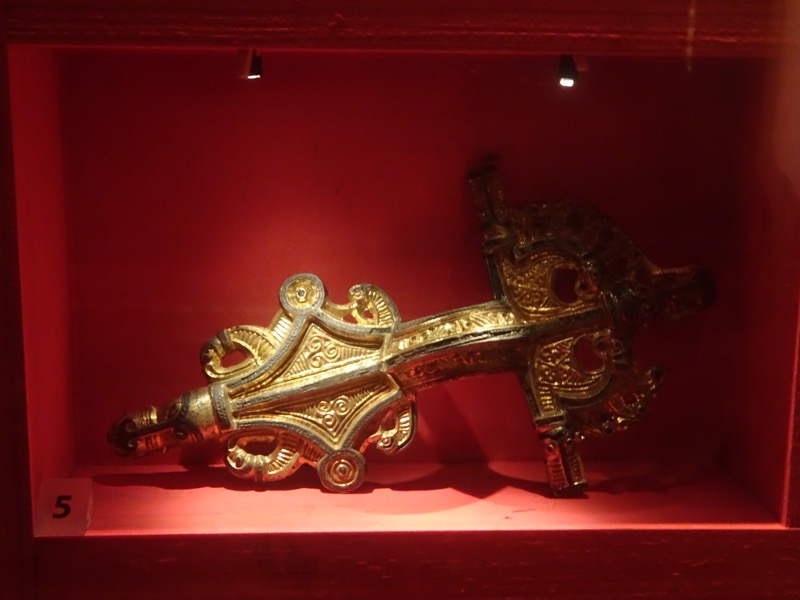
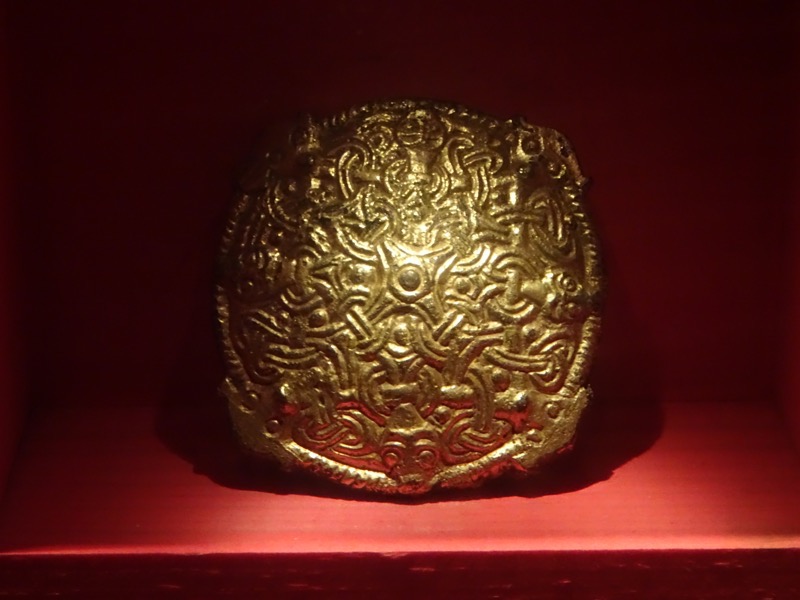
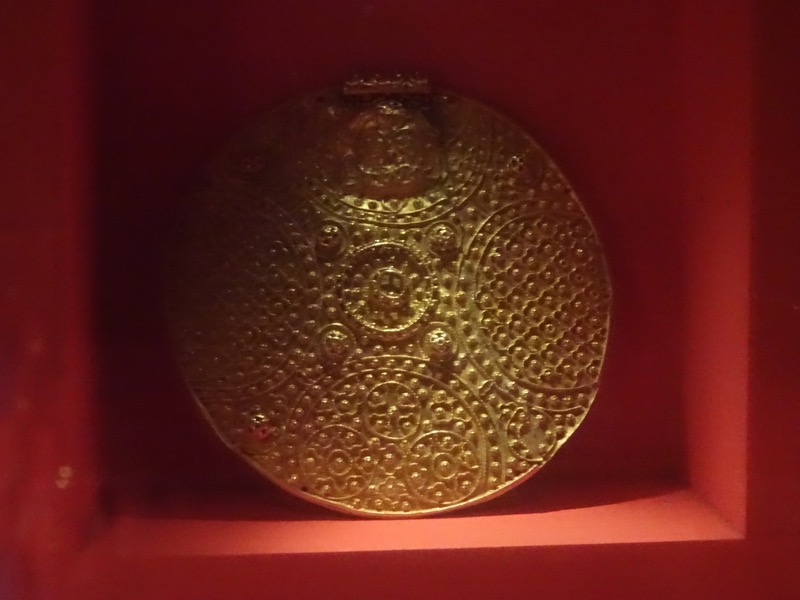
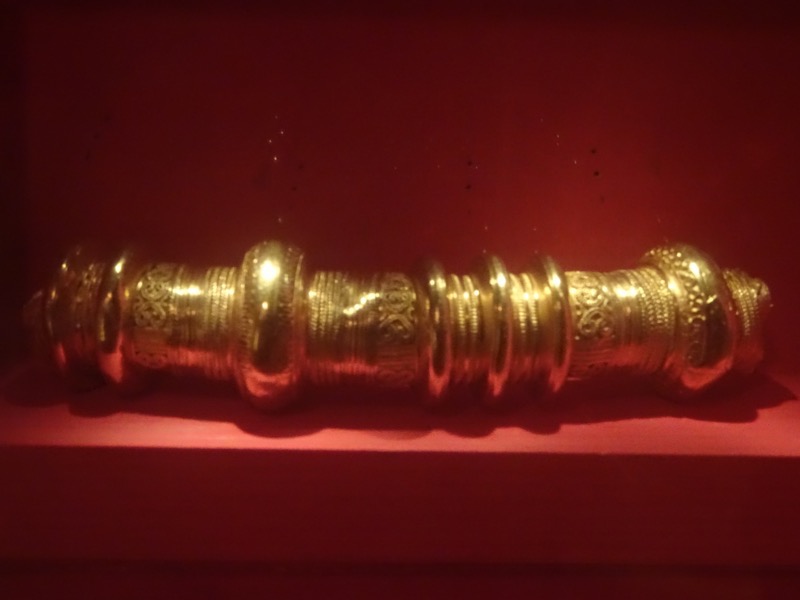
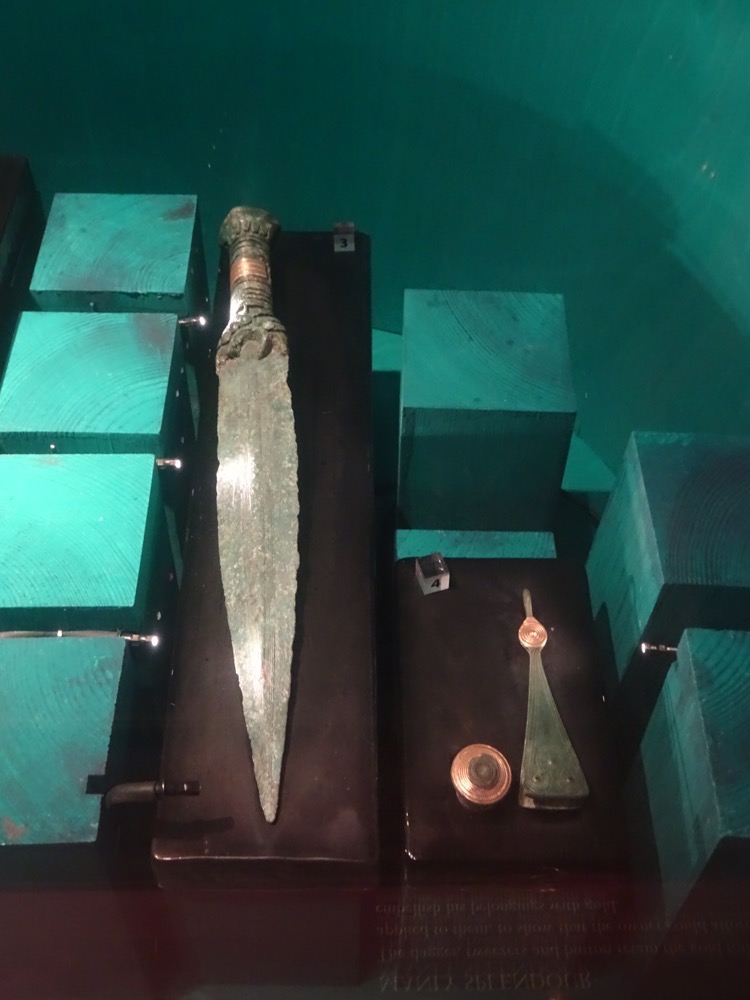
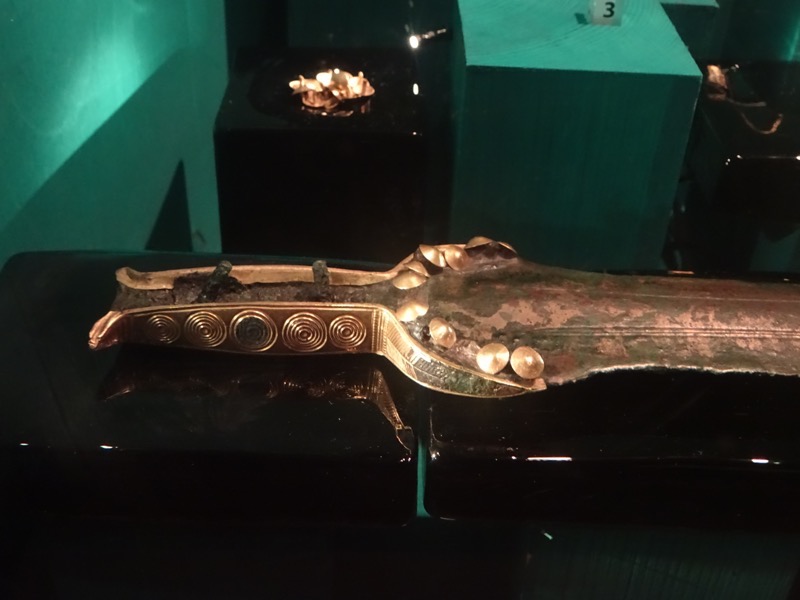 Brooch from a na’s grave, Uppland (Brondkyrko), Haga, c.1100-900BC
Brooch from a na’s grave, Uppland (Brondkyrko), Haga, c.1100-900BC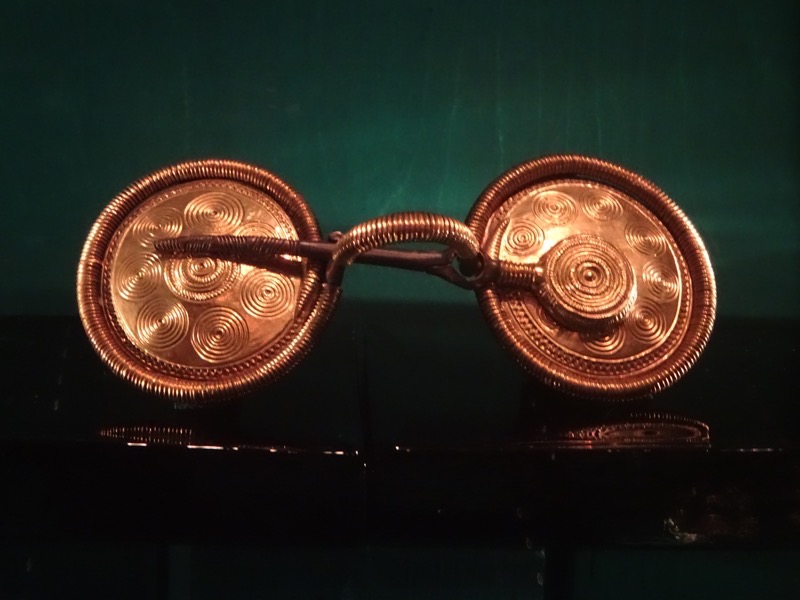 Gold bow, Blekinge, Nattraby/Skrea. 1100-900 BC.
Gold bow, Blekinge, Nattraby/Skrea. 1100-900 BC.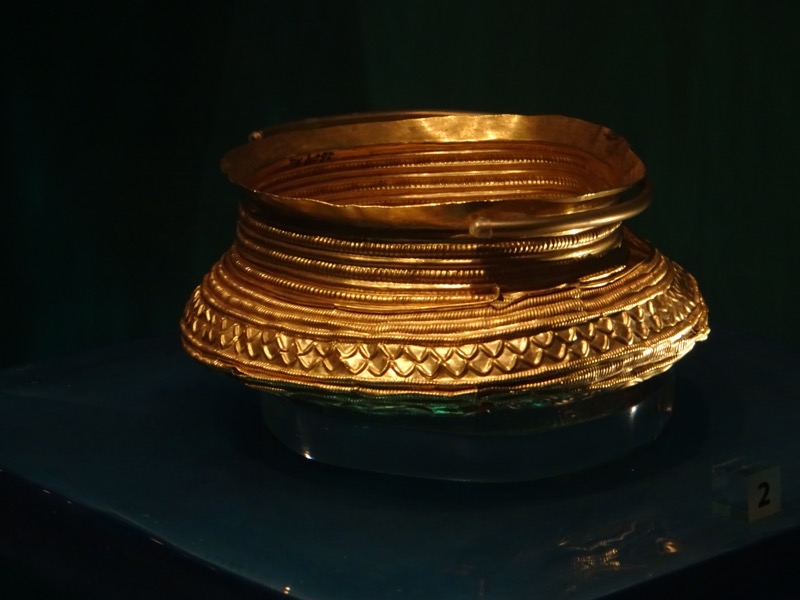
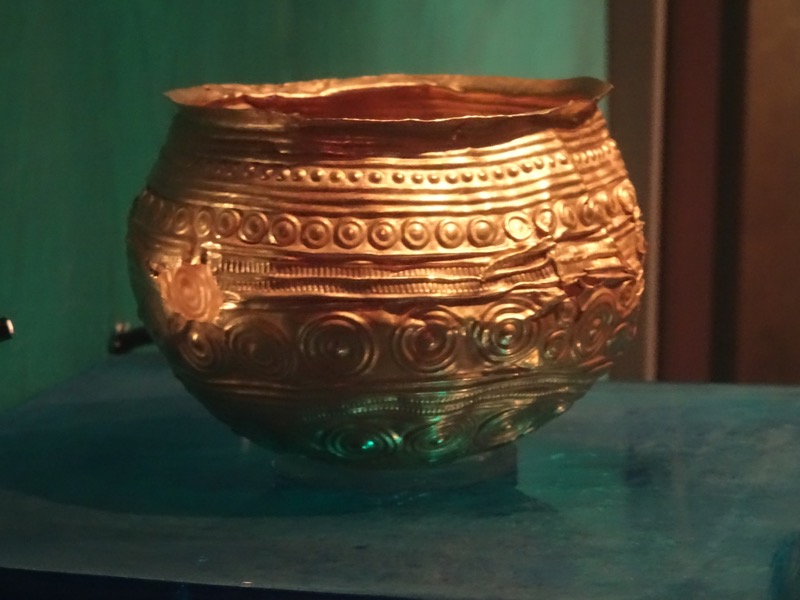 Gold bracteate with Aesir saga motif (Tyr and the Fenriswolf), Trollhattan, 400-500AD.
Gold bracteate with Aesir saga motif (Tyr and the Fenriswolf), Trollhattan, 400-500AD.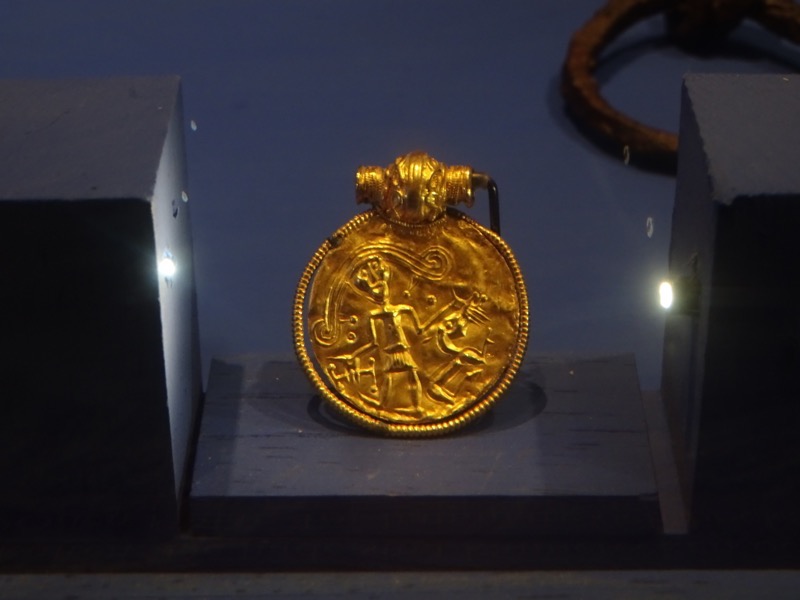 Valkyrie pendant,Oland,Koping, 800-1050AD.
Valkyrie pendant,Oland,Koping, 800-1050AD.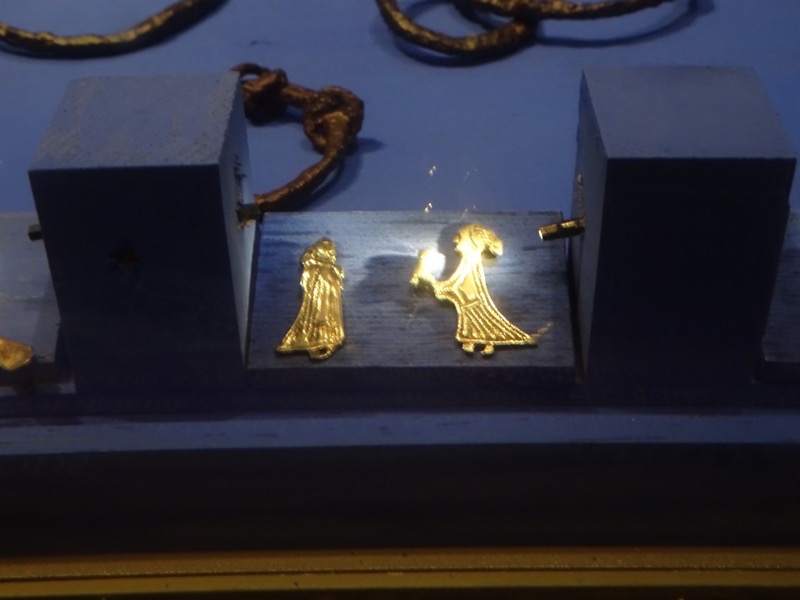 Silver crucifix, Uppland, Adelso, Birka, c.800-1050.
Silver crucifix, Uppland, Adelso, Birka, c.800-1050.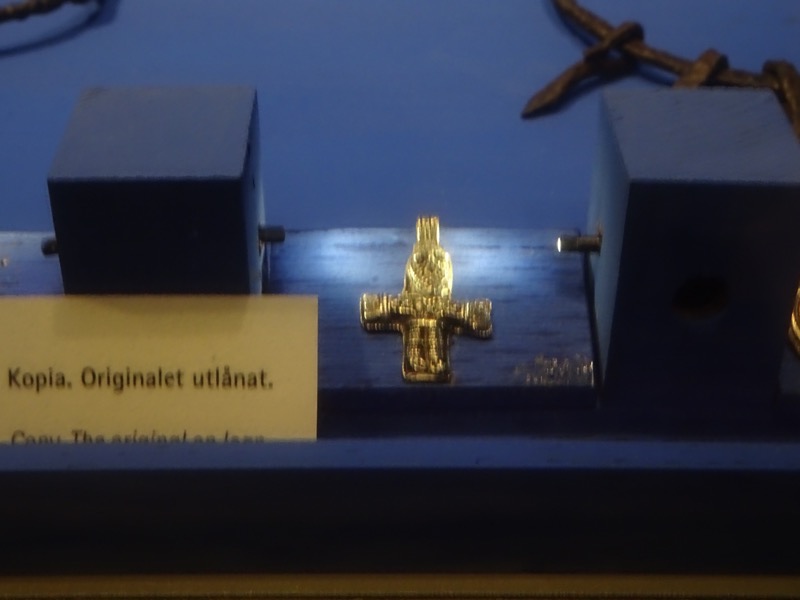 Thor’s hammer, gilded pendant, Odeshog, c.800-1050AD
Thor’s hammer, gilded pendant, Odeshog, c.800-1050AD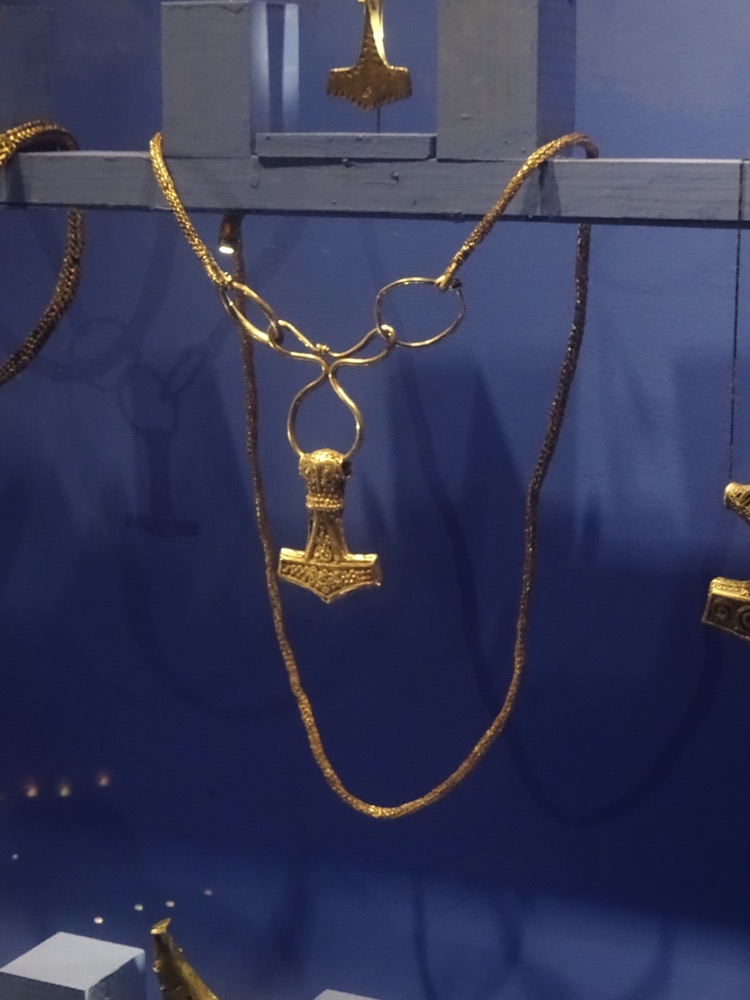
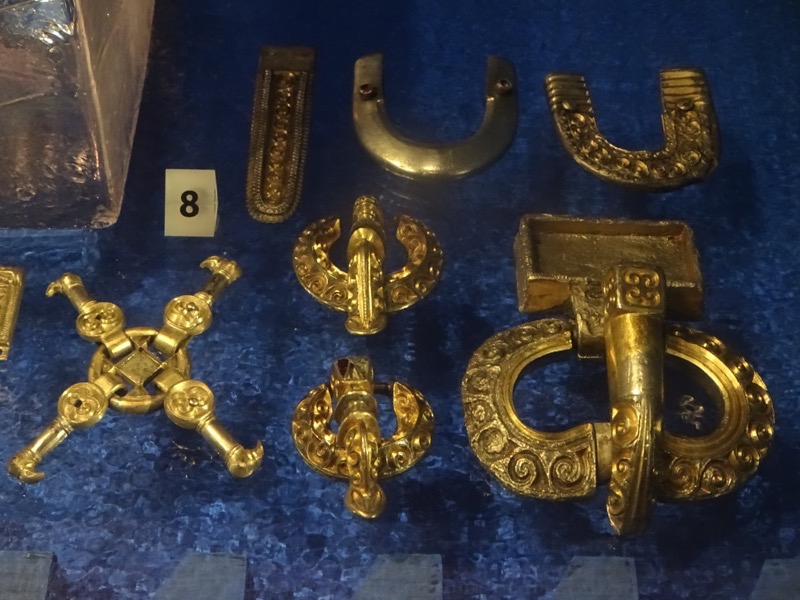
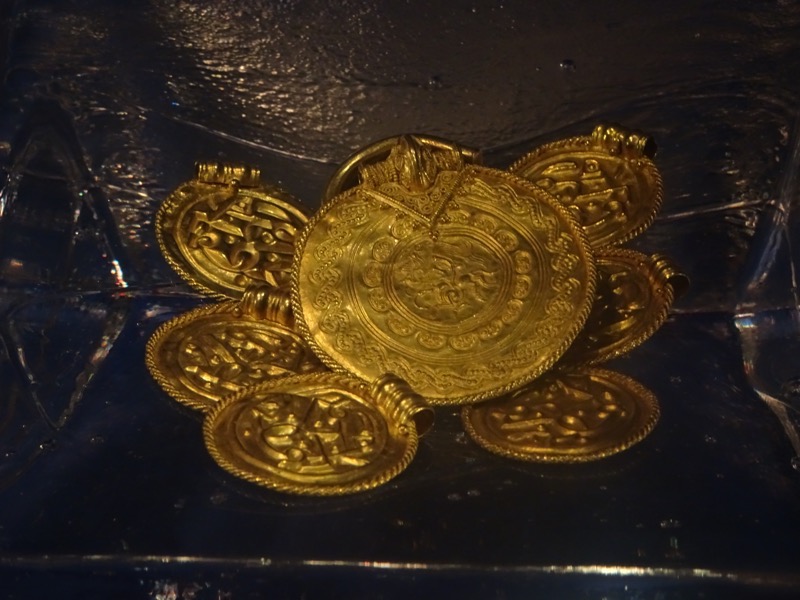
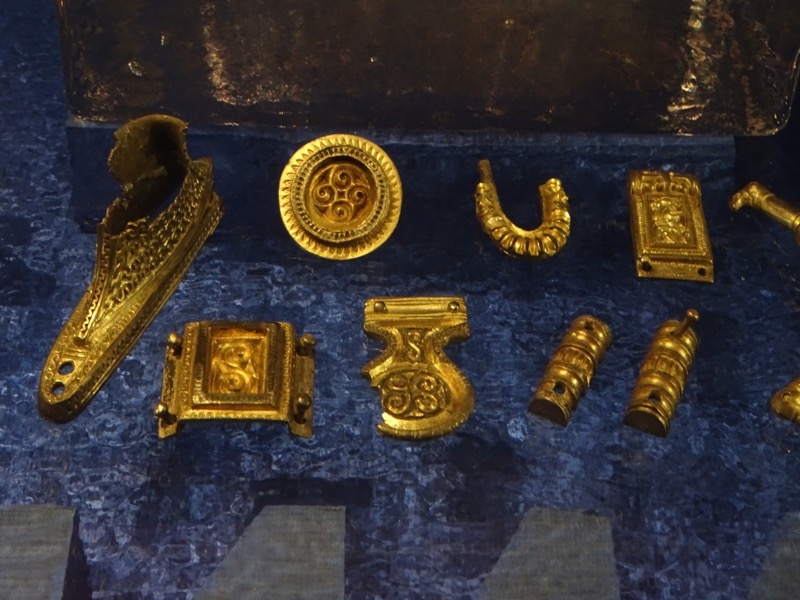
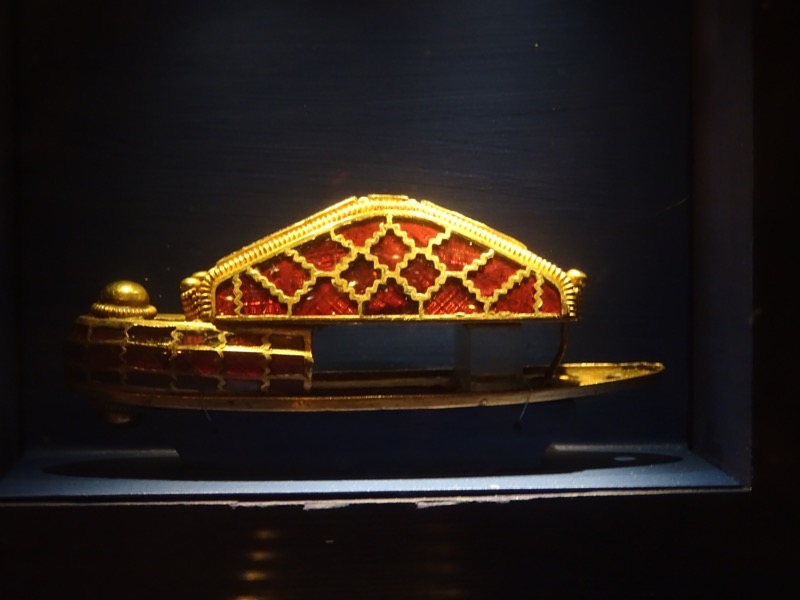
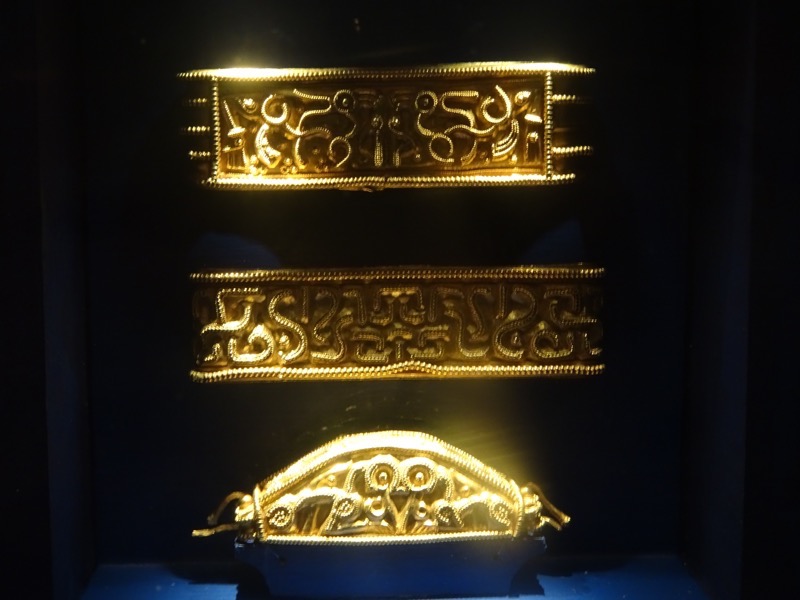 Arm ring made of gold from Skane, Glostorp, Kaglinge, c.400AD
Arm ring made of gold from Skane, Glostorp, Kaglinge, c.400AD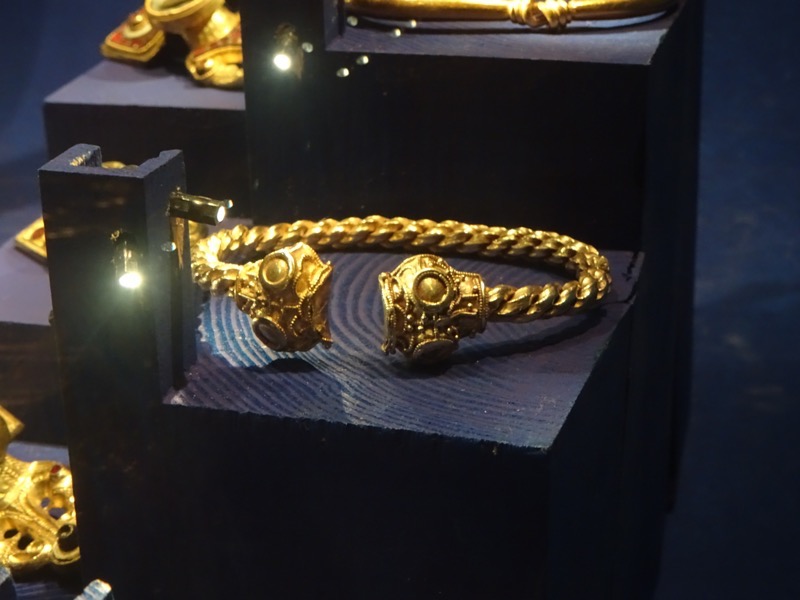 Twisted gold bracelet, Sodermanland, Vanso c.800-1050AD
Twisted gold bracelet, Sodermanland, Vanso c.800-1050AD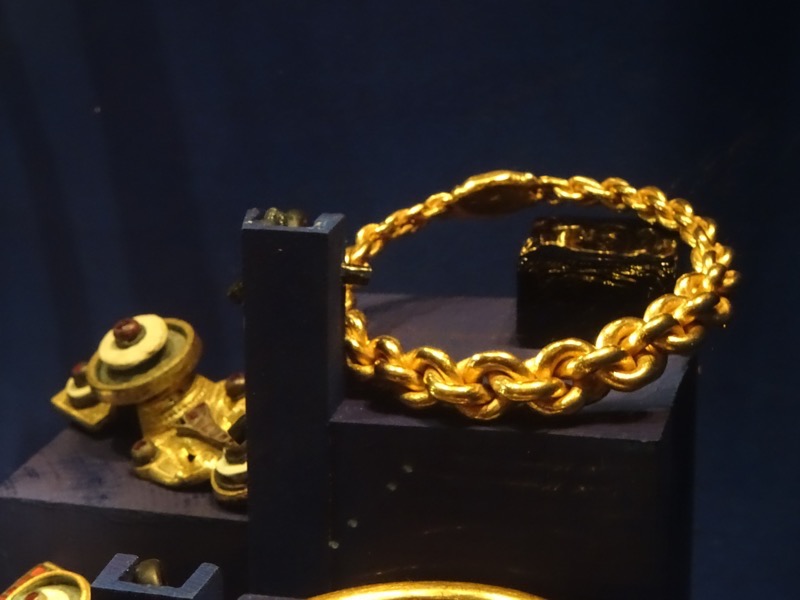 Relief buckles made of gilded silver from Oland, c.400-550AD
Relief buckles made of gilded silver from Oland, c.400-550AD
Equal-armed relief buckles made of gilded silver, Narke, Svennevad, Gilberga, c.400-550AD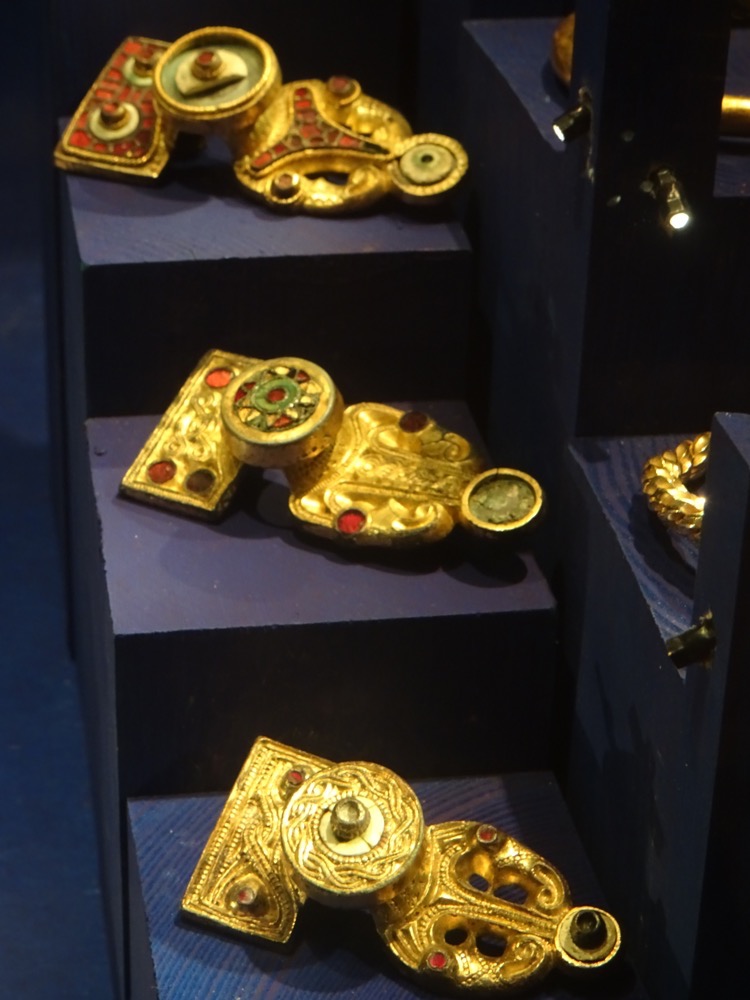 Relief buckle and buttons made of gilded bronze with garnet inlay, from Vastmanland, Tortuna, Nicktuna, c.400-550AD
Relief buckle and buttons made of gilded bronze with garnet inlay, from Vastmanland, Tortuna, Nicktuna, c.400-550AD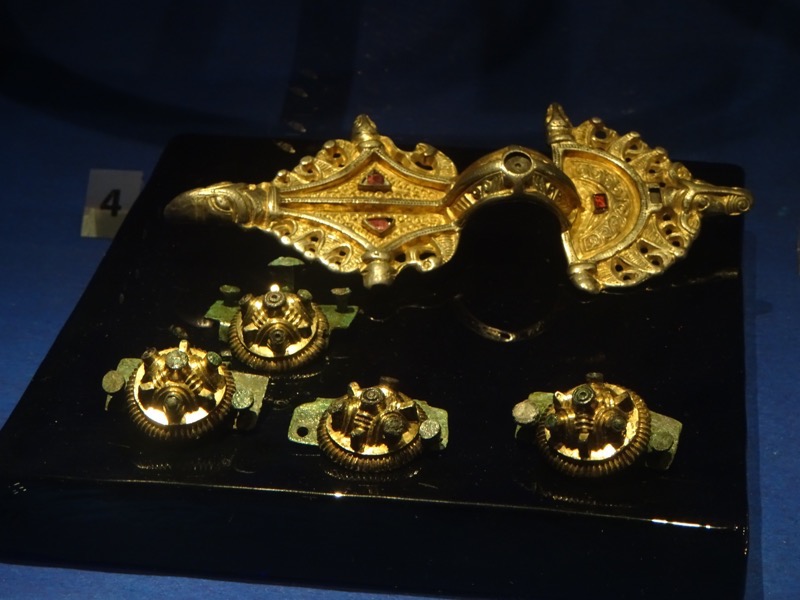 Iron and bronze helmet, Uppland, Vendel, c.550-800AD
Iron and bronze helmet, Uppland, Vendel, c.550-800AD
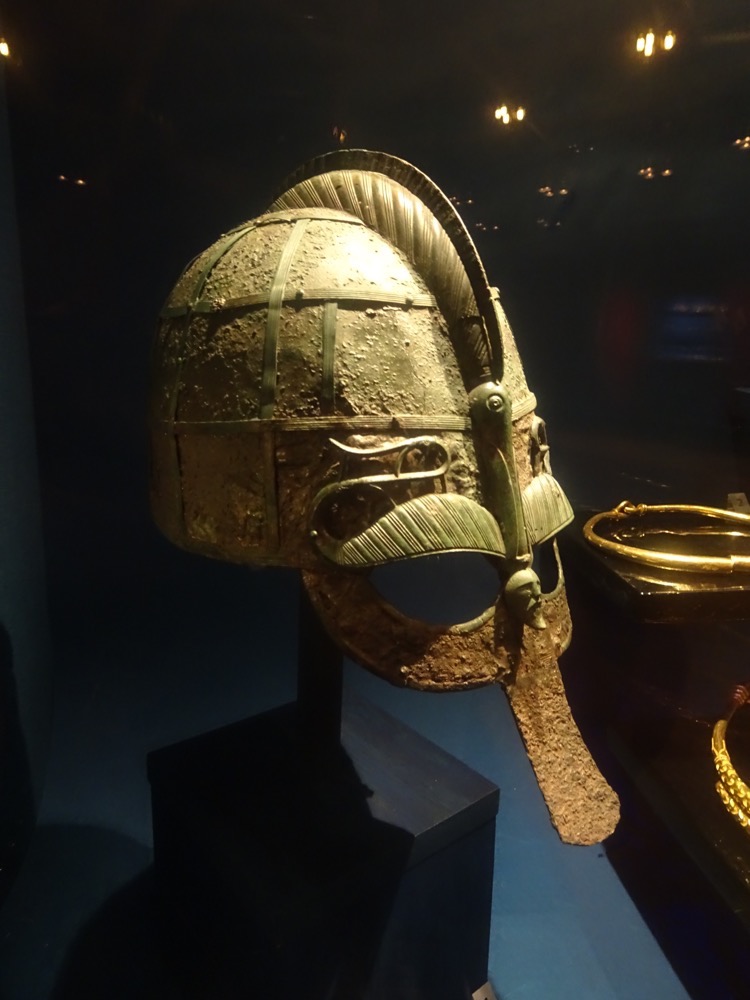
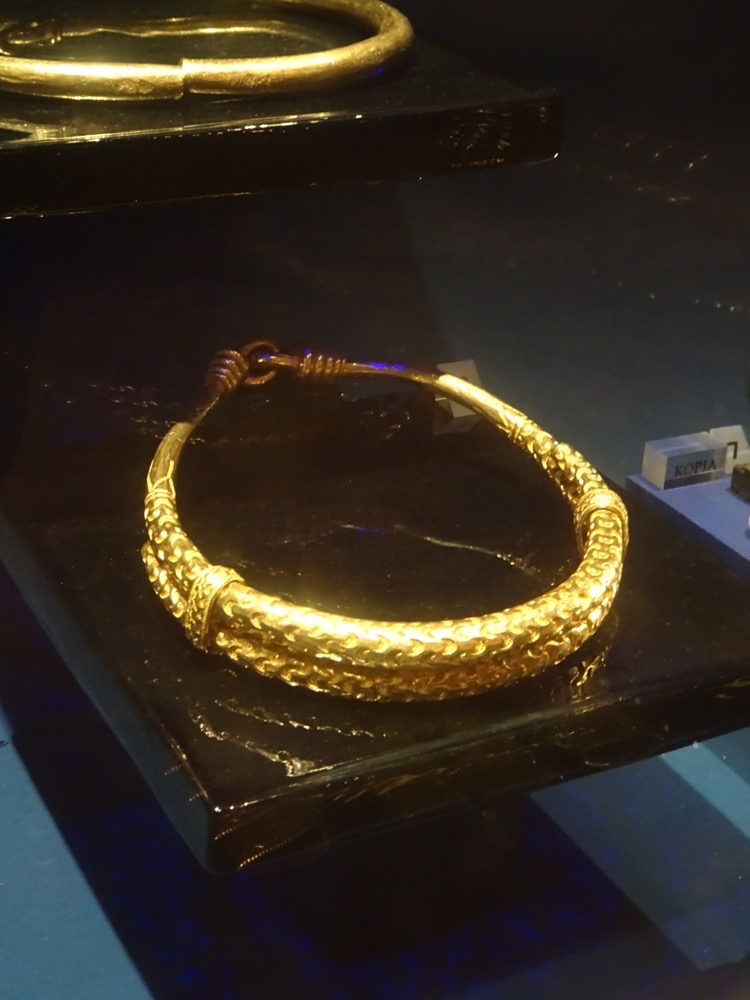 Gold bracelets with terminal animal heads. Oland, As, c.400AD.
Gold bracelets with terminal animal heads. Oland, As, c.400AD.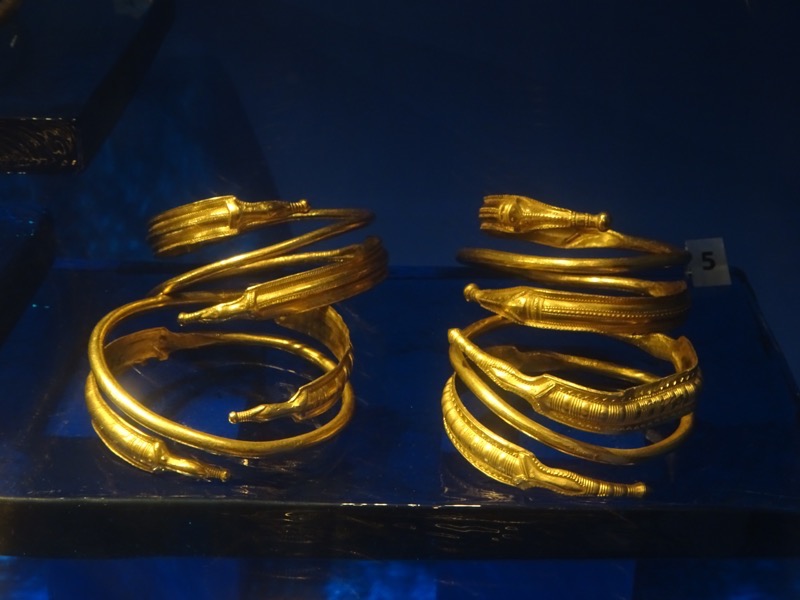
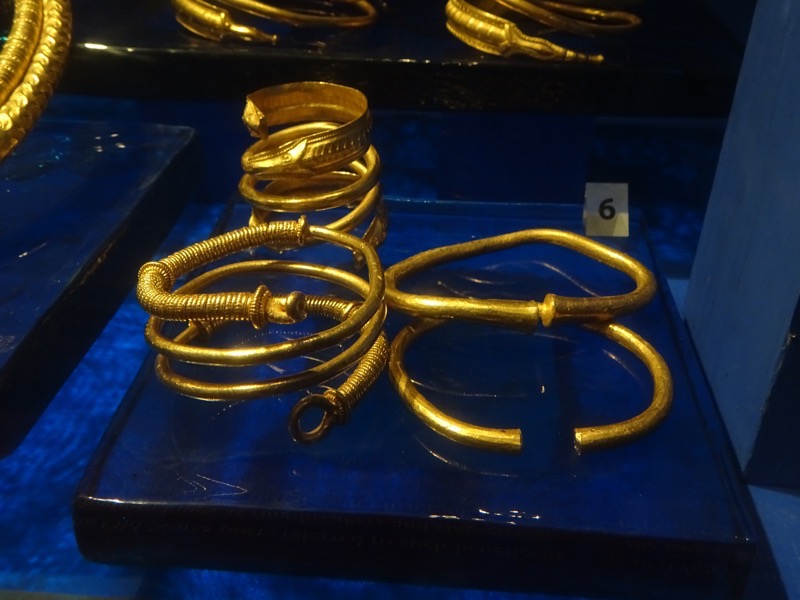
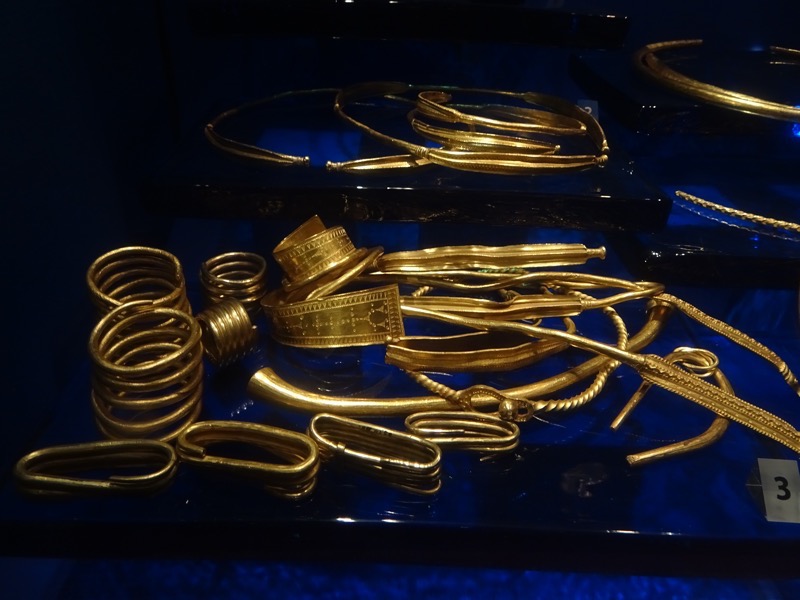 Finely decorated gold charm beads, Vastergotland, Dalstorp, c.400AD.
Finely decorated gold charm beads, Vastergotland, Dalstorp, c.400AD.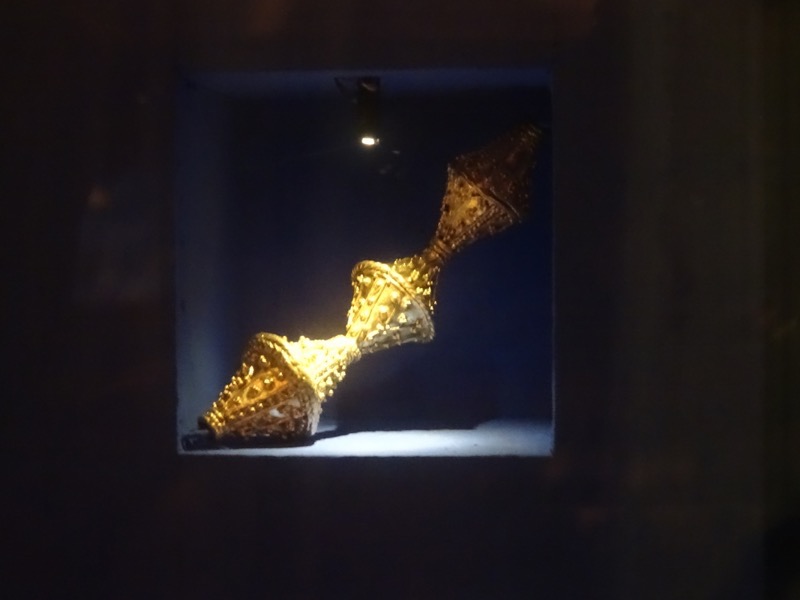 Gold collar, Vasergotland, Mone. 5th century.
Gold collar, Vasergotland, Mone. 5th century.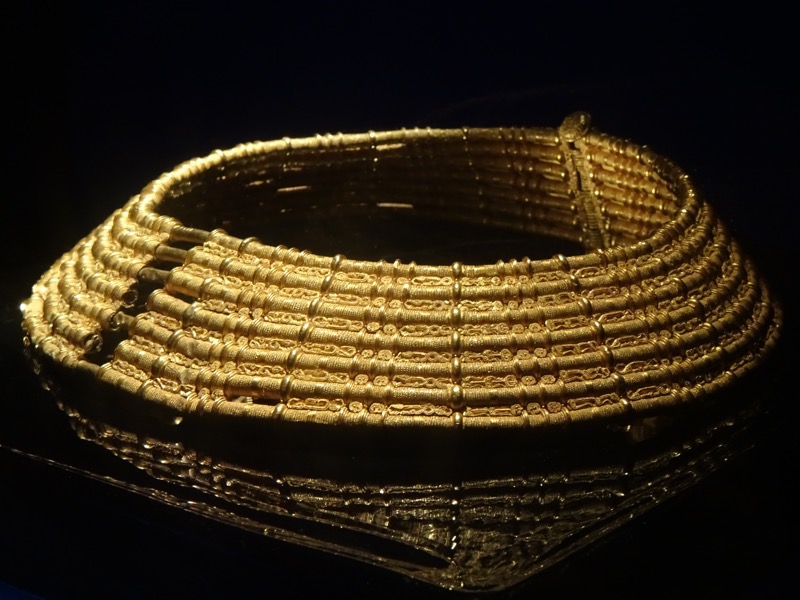
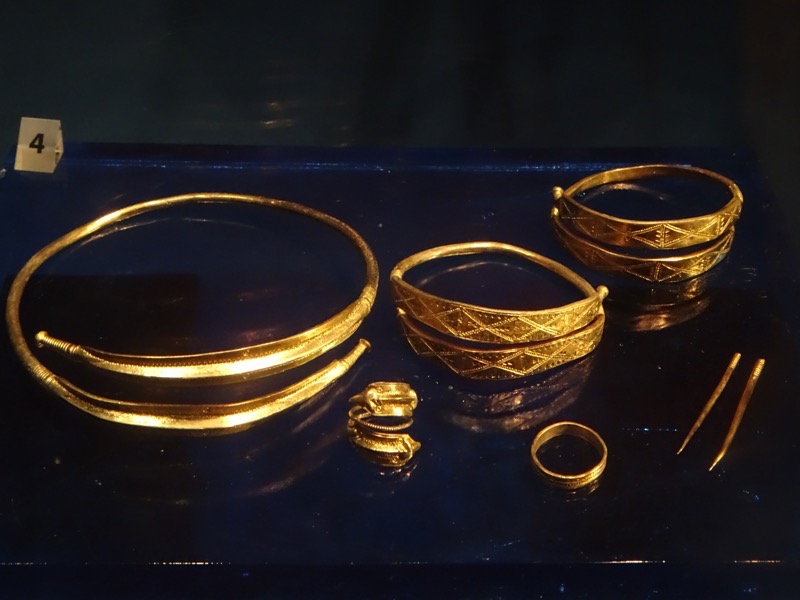 Godl ring with carneol seting, Old Uppsala, Fullero, c400AD.
Godl ring with carneol seting, Old Uppsala, Fullero, c400AD.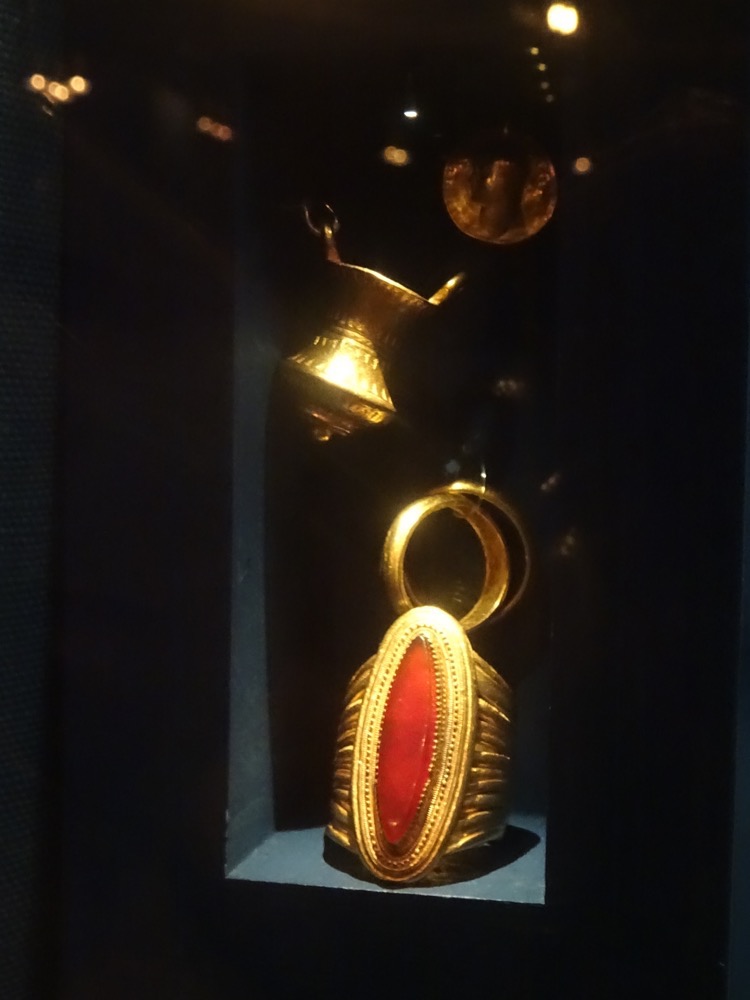
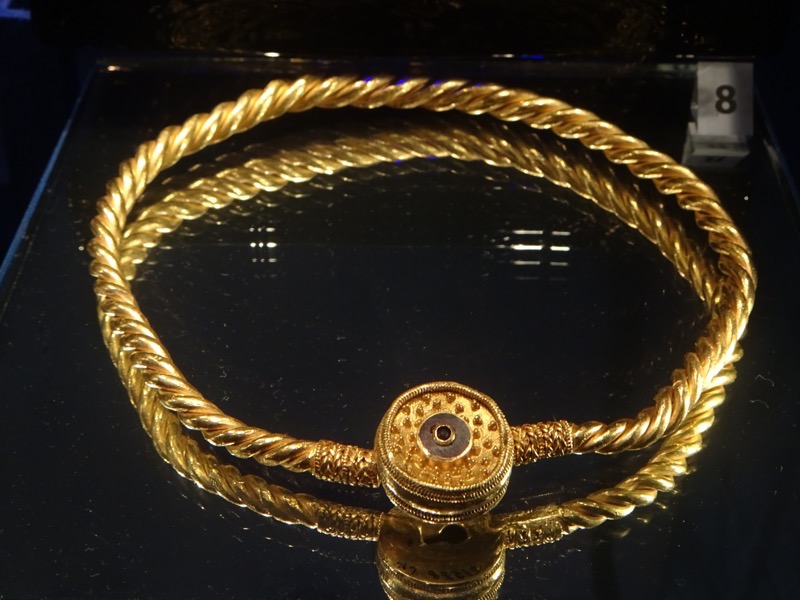 Finely decorated gold charm beads, Vastergotland, Dalstorp, c.400AD.
Finely decorated gold charm beads, Vastergotland, Dalstorp, c.400AD.
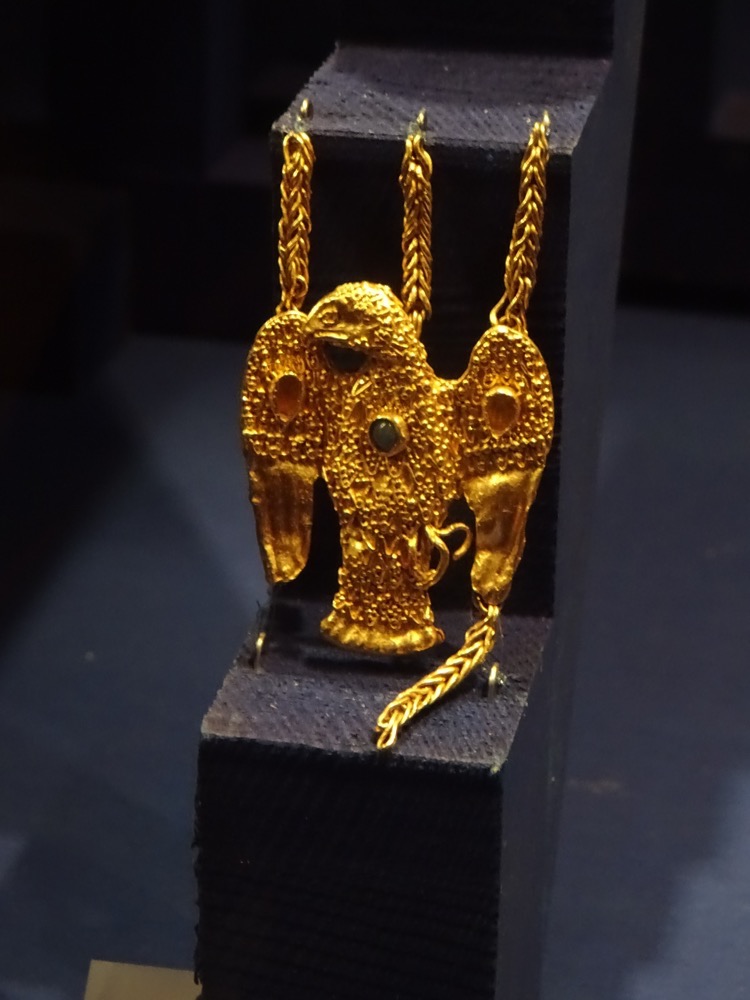
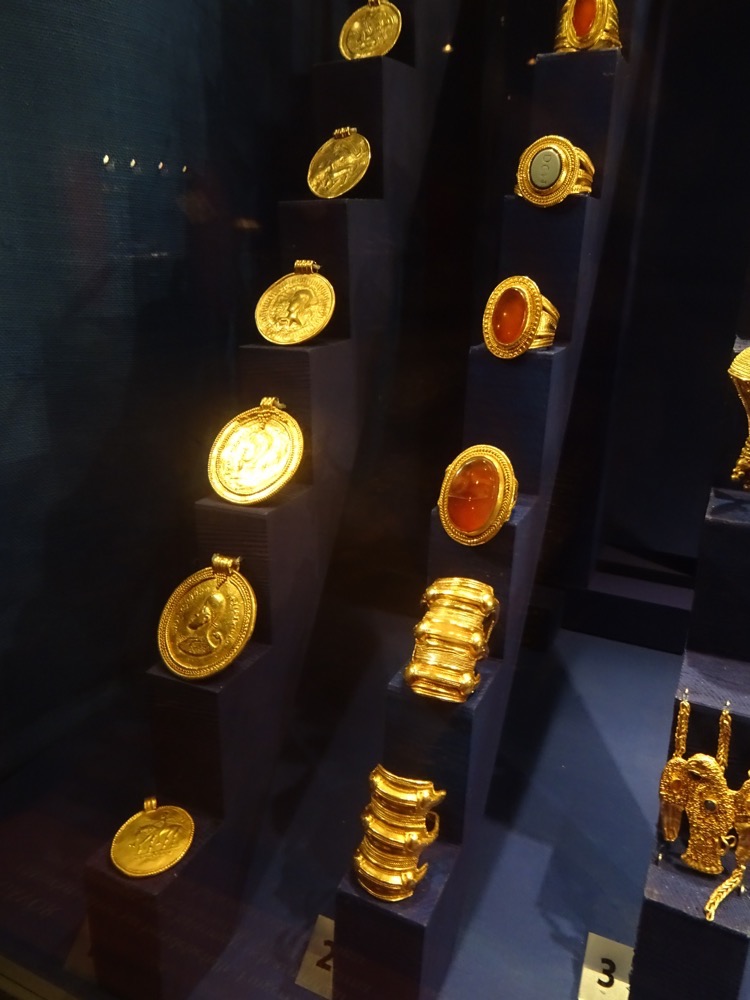 Gold rings worn and used as currency, Gotland. c.8thC
Gold rings worn and used as currency, Gotland. c.8thC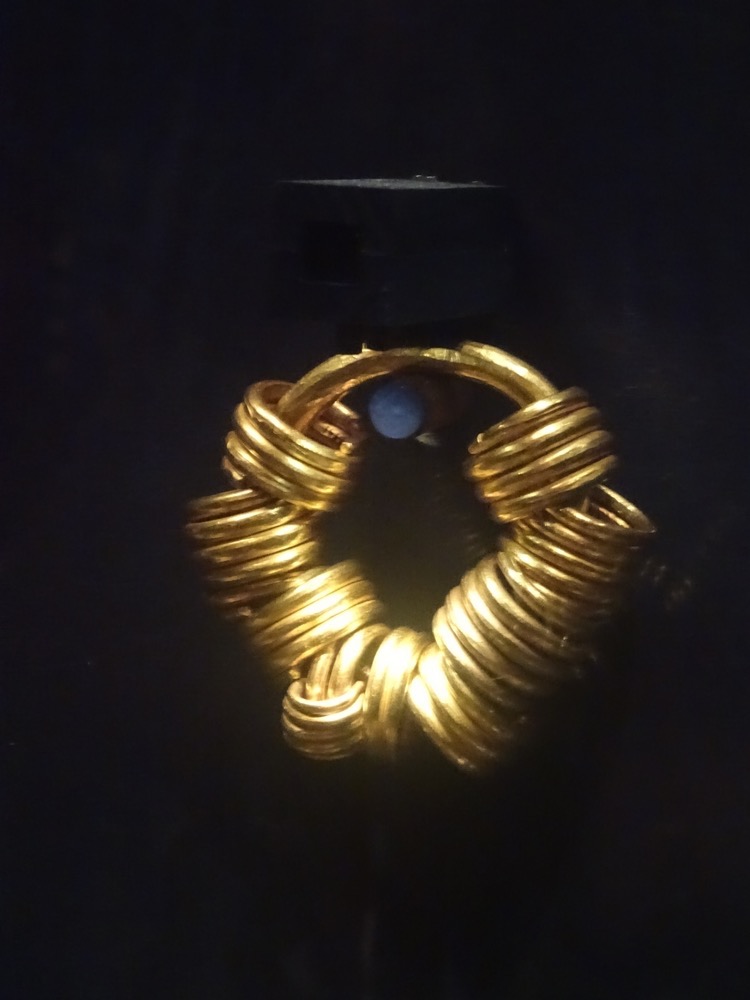
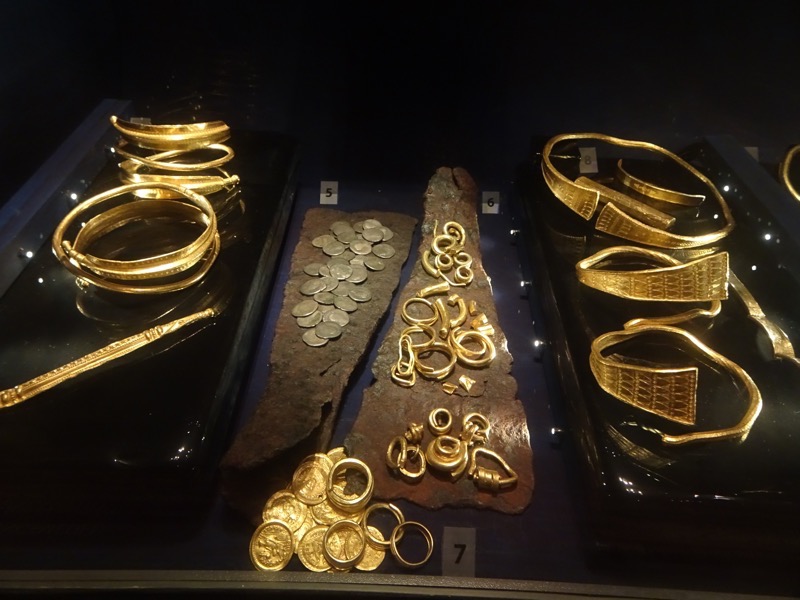
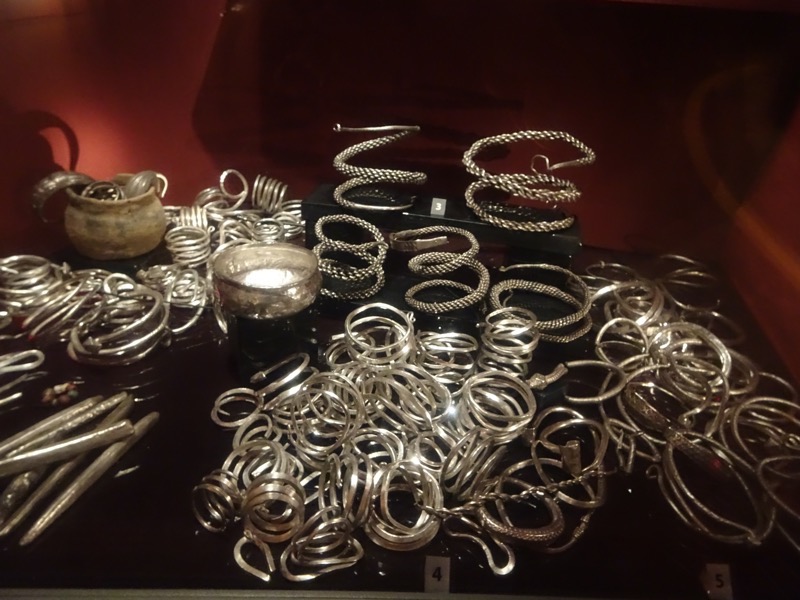
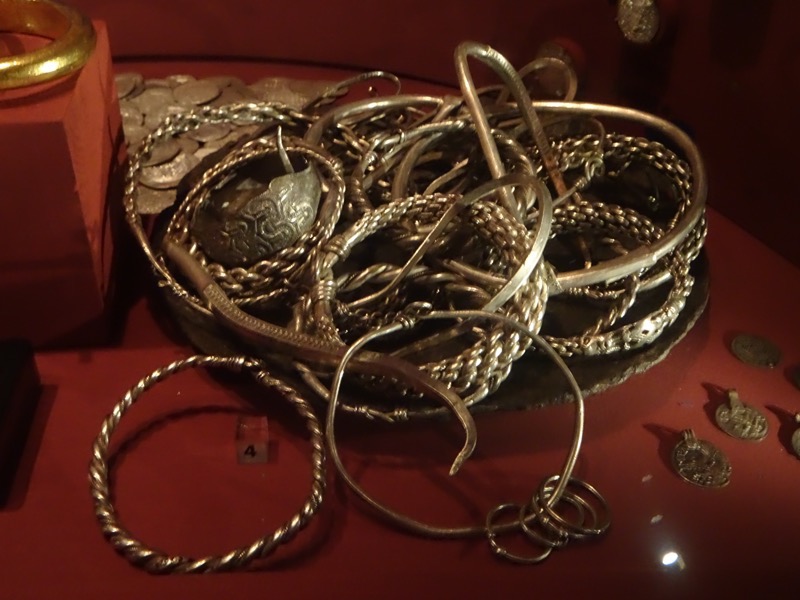 Sword with silver, copper and brass inlay, Gotland, Halla, c.800-1050AD
Sword with silver, copper and brass inlay, Gotland, Halla, c.800-1050AD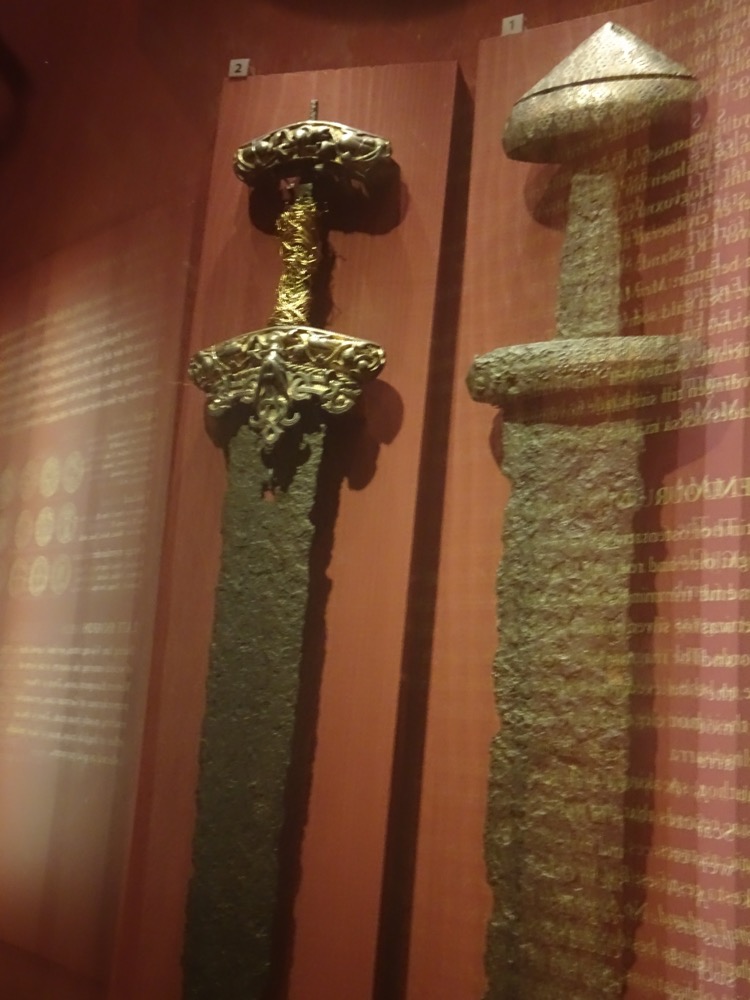
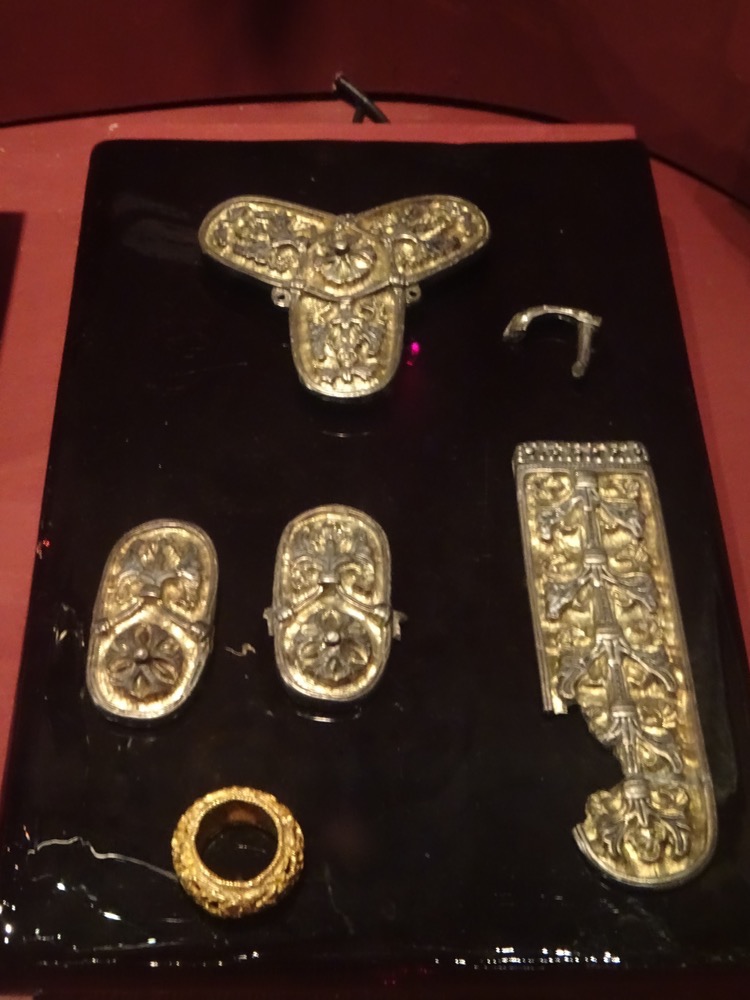 Included as the most matching/symmetrical set of Viking beads I have ever seen… this pleases me and makes me think that somewhere, at some time in history, was a woman whose obsessive personality traits/tendencies were similar to my own. 😉
Included as the most matching/symmetrical set of Viking beads I have ever seen… this pleases me and makes me think that somewhere, at some time in history, was a woman whose obsessive personality traits/tendencies were similar to my own. 😉 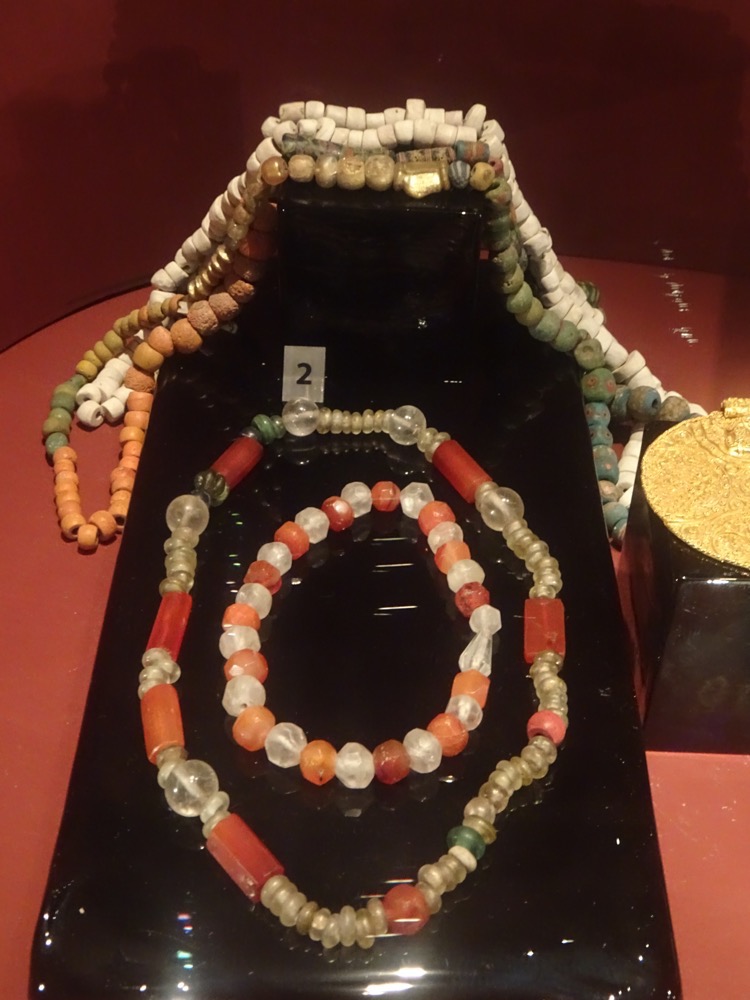
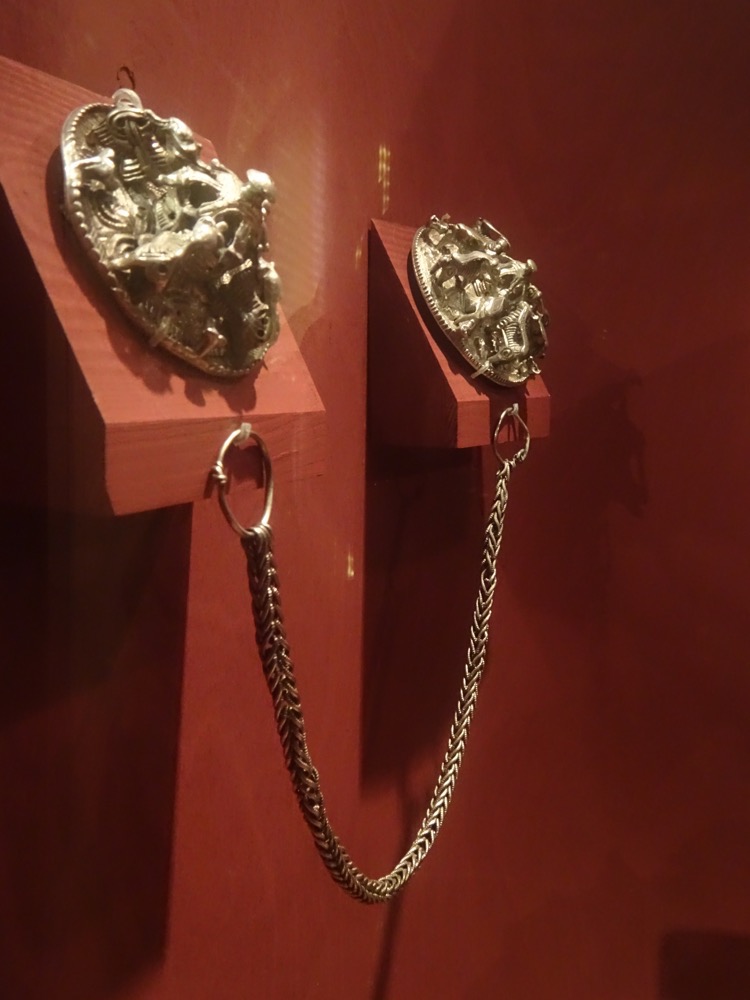
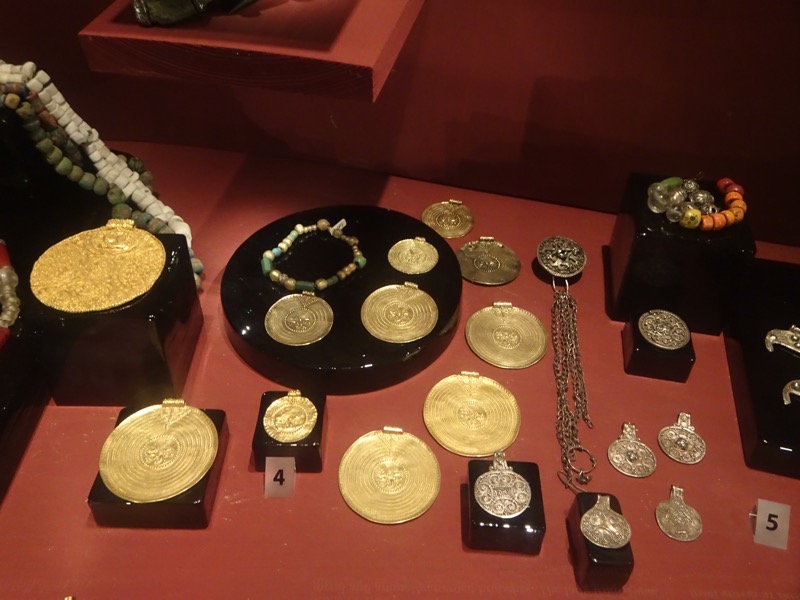
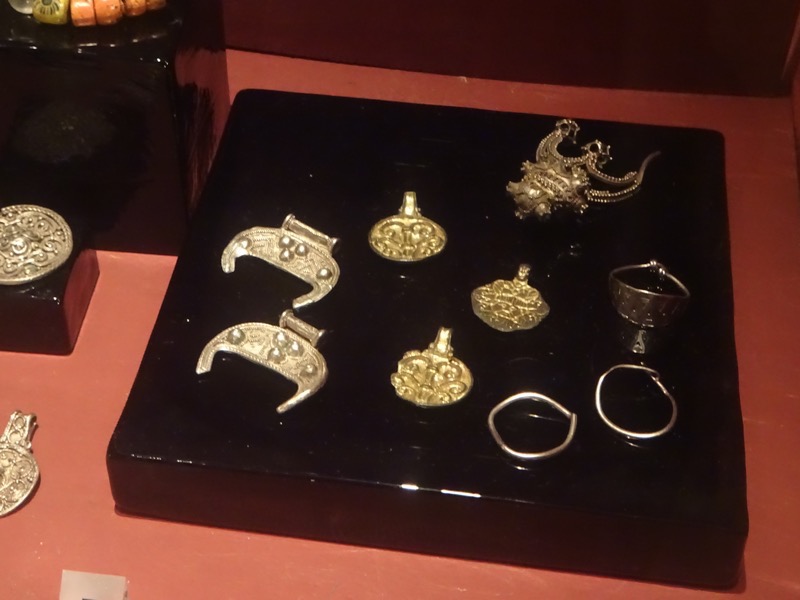
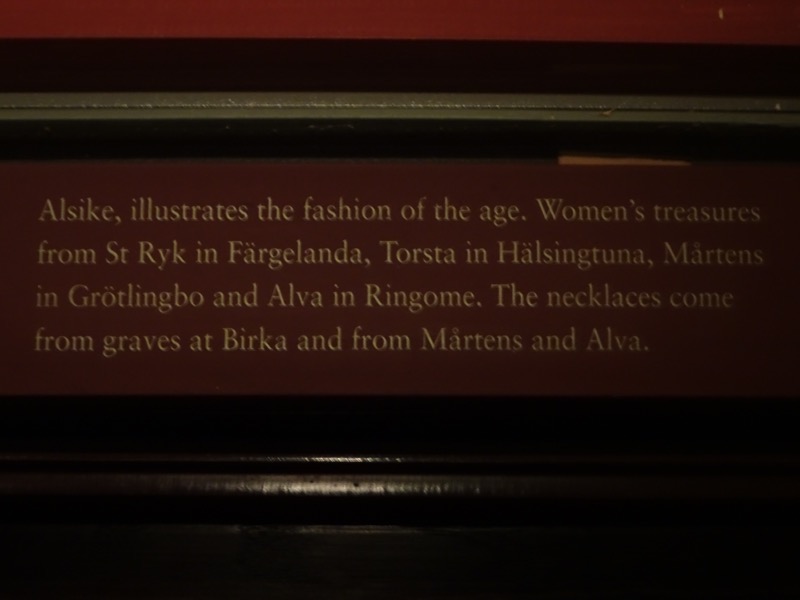 Gold ornaments, Gotland, Labro, c.1000-1500AD
Gold ornaments, Gotland, Labro, c.1000-1500AD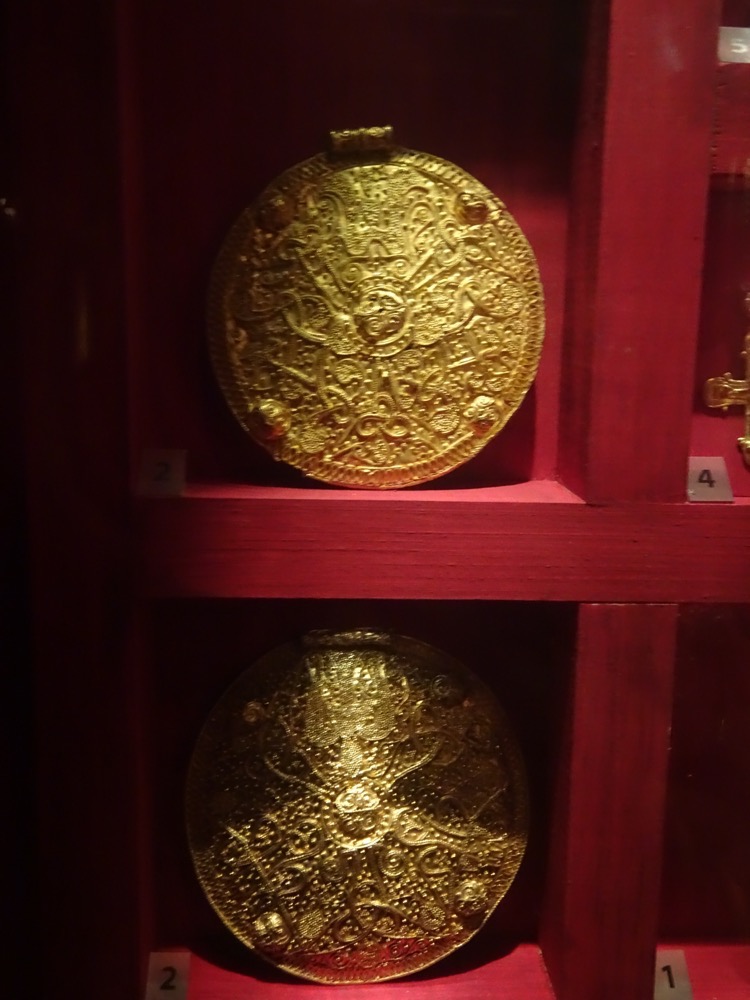
PRE-HISTORY SECTION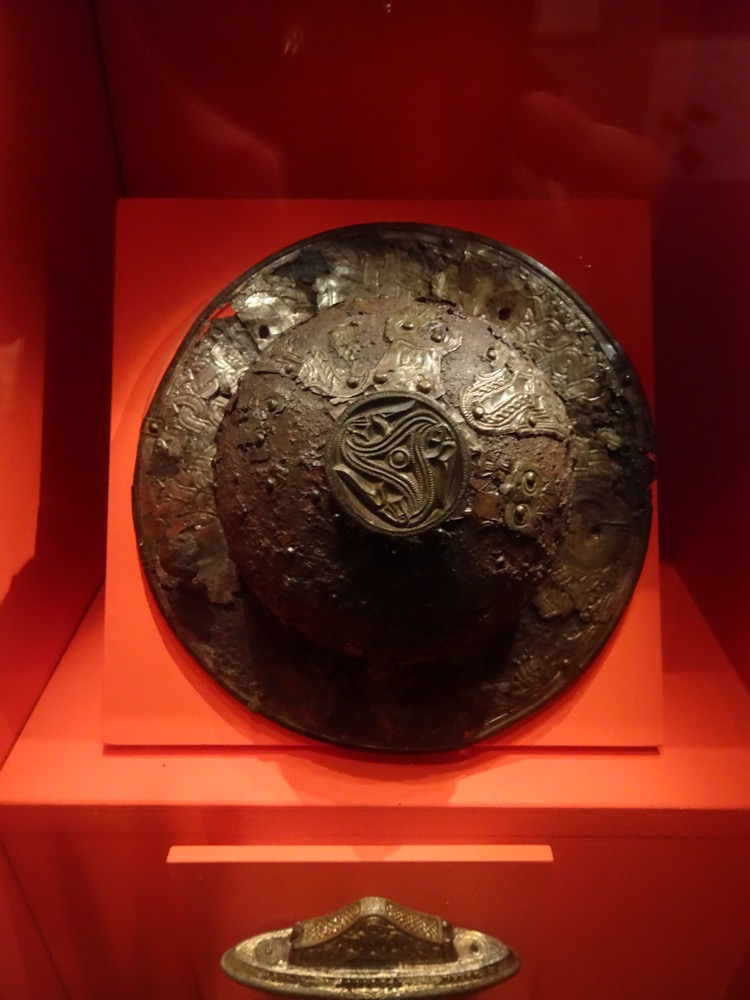
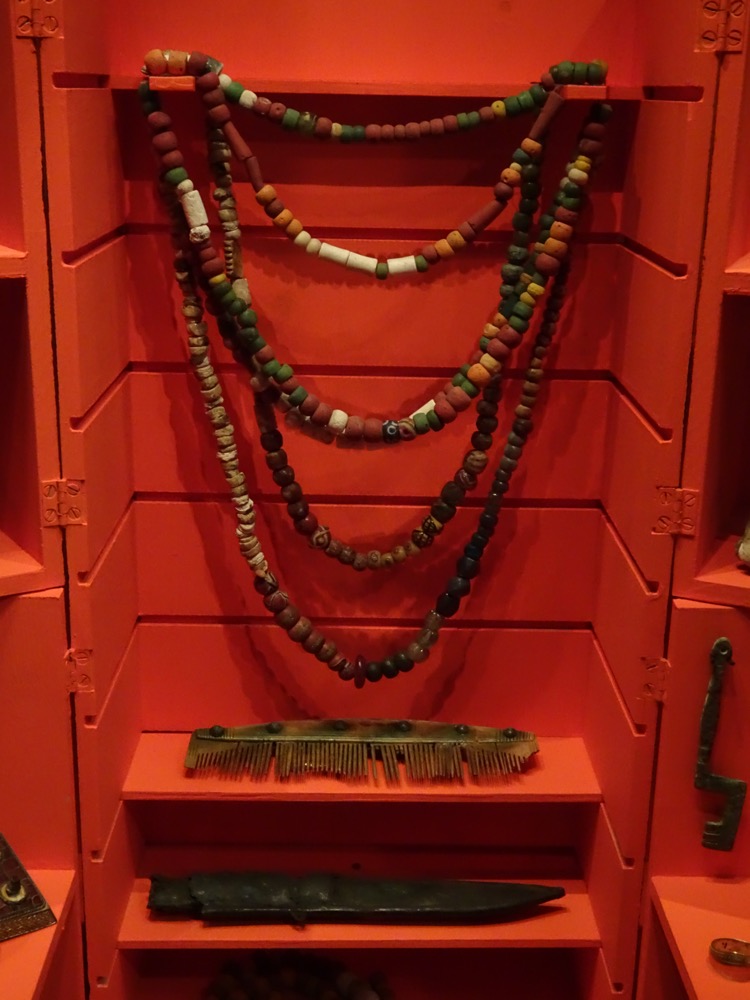
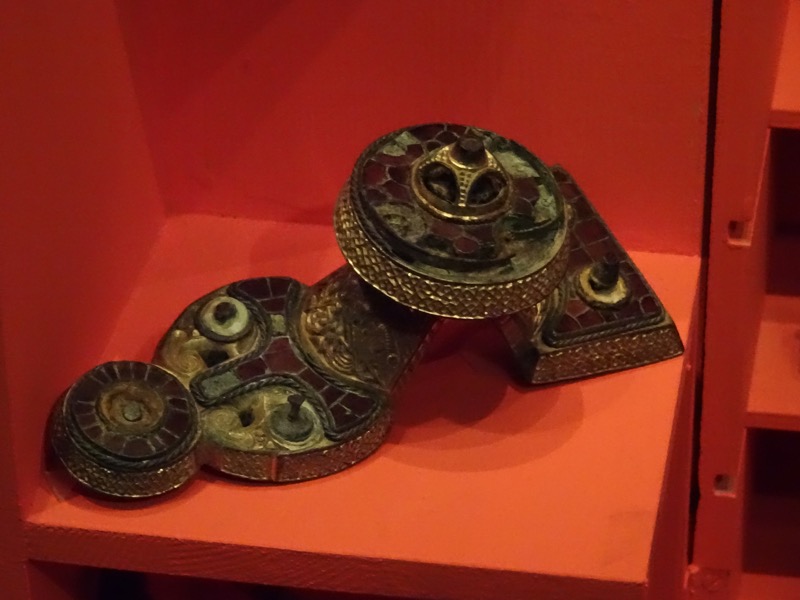
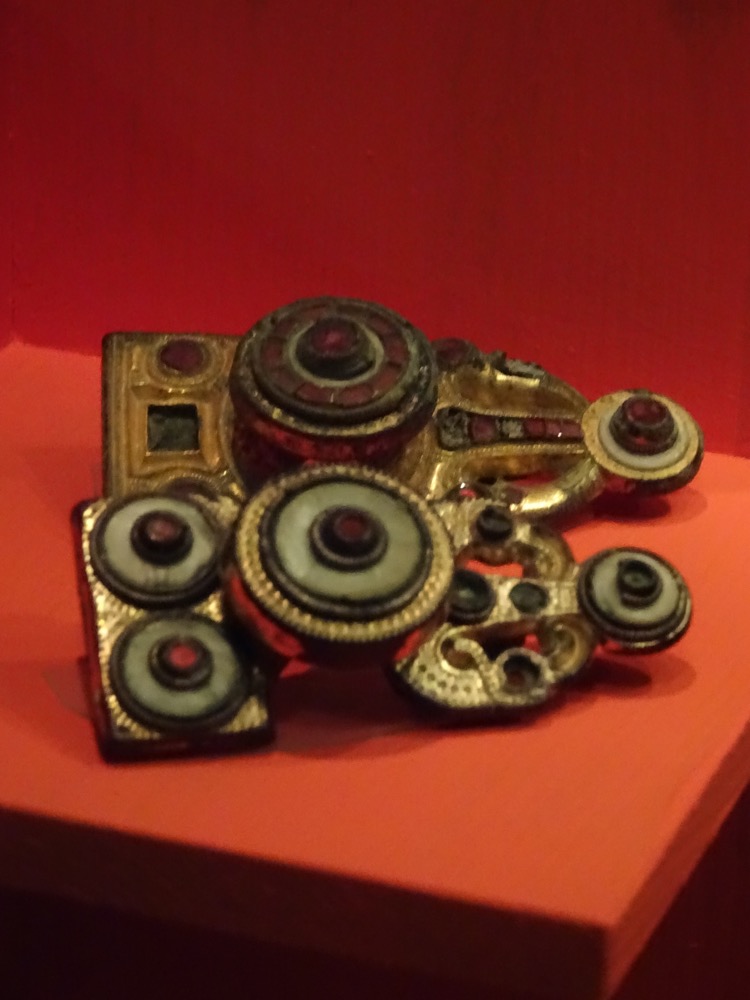
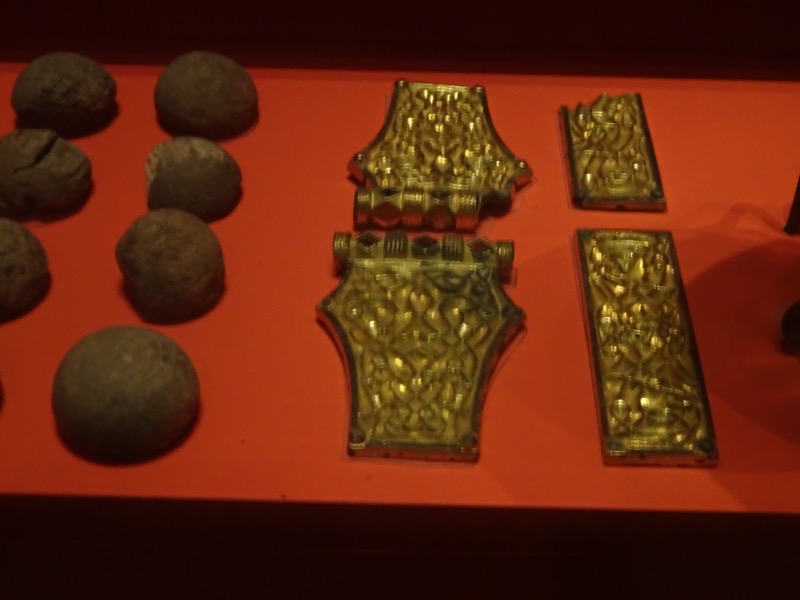
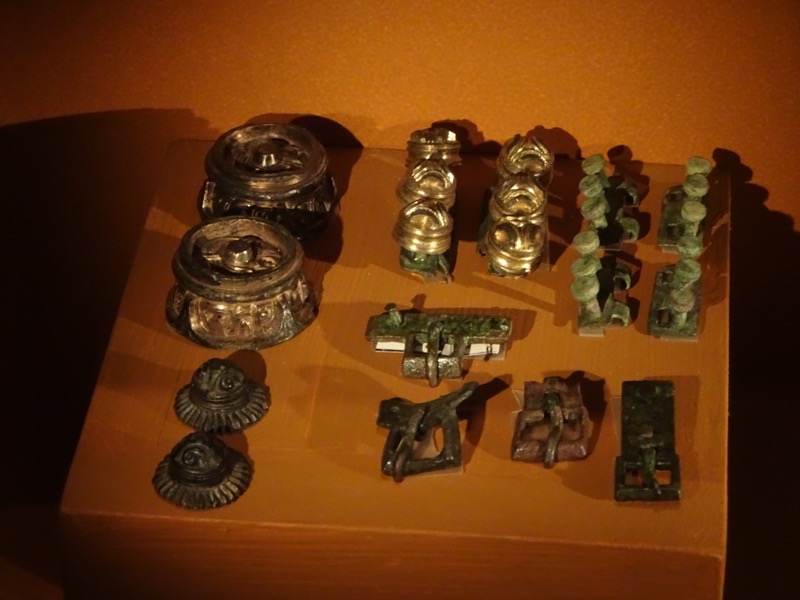
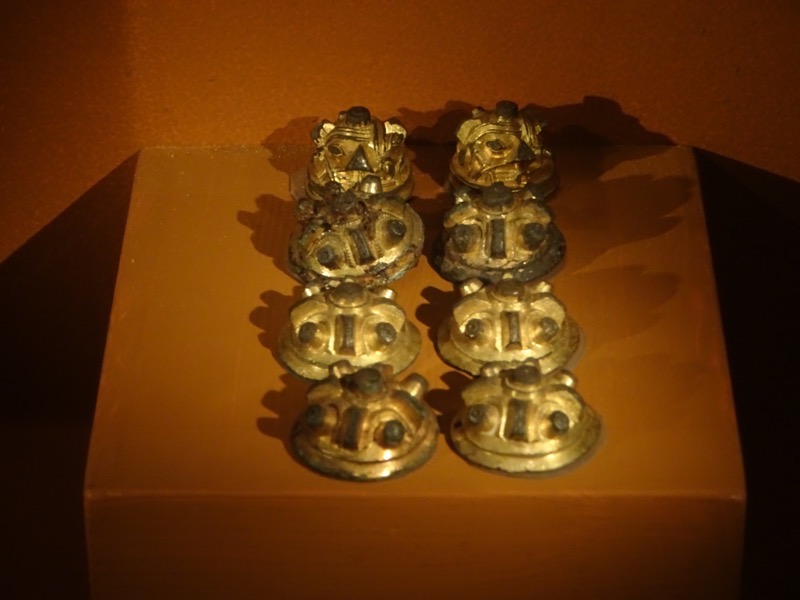
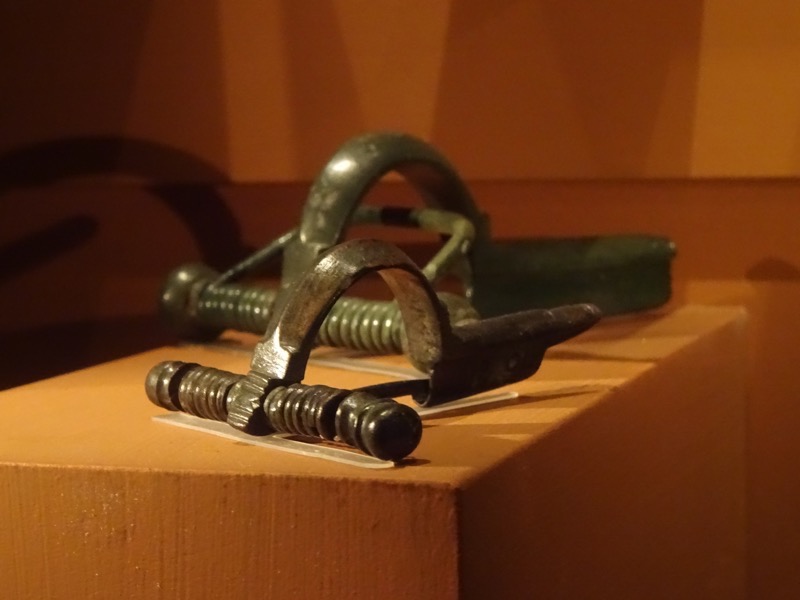
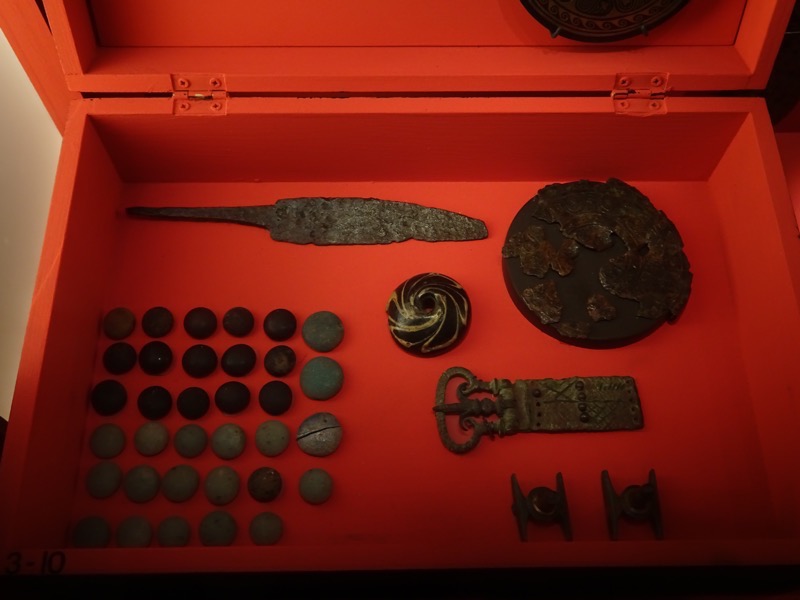
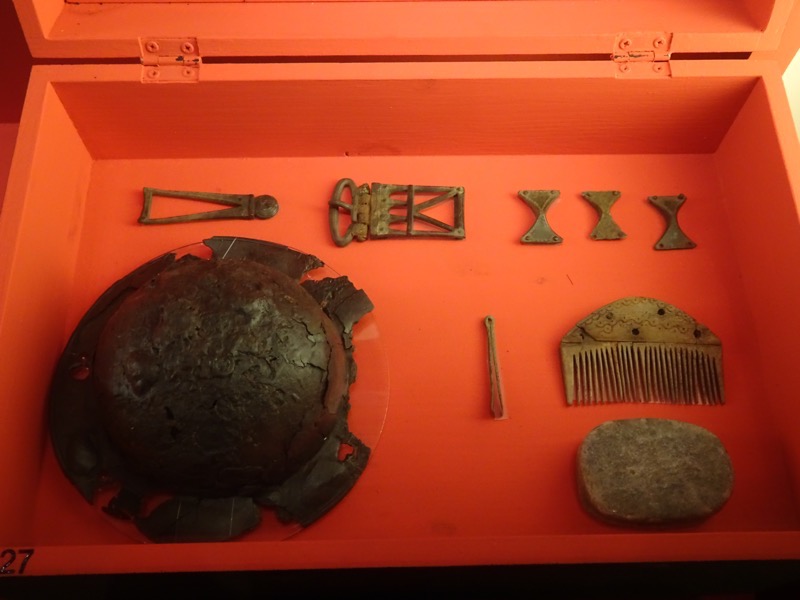
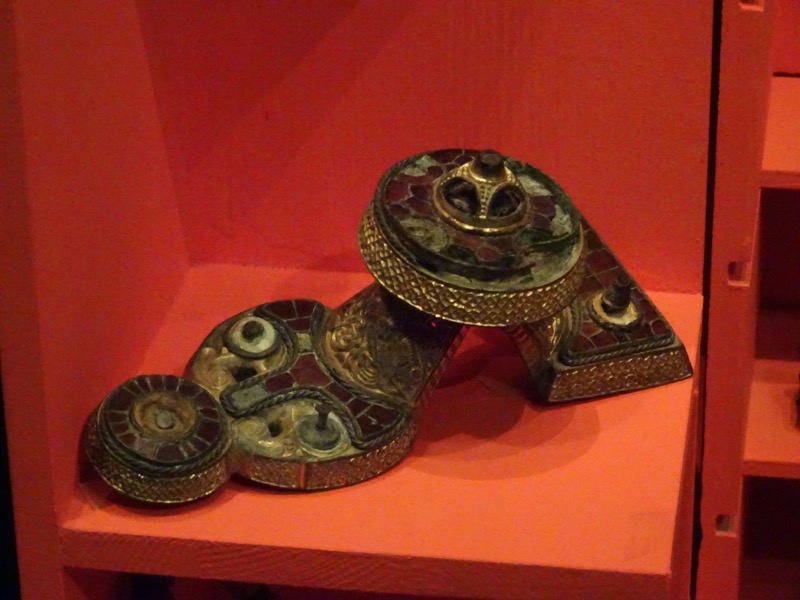
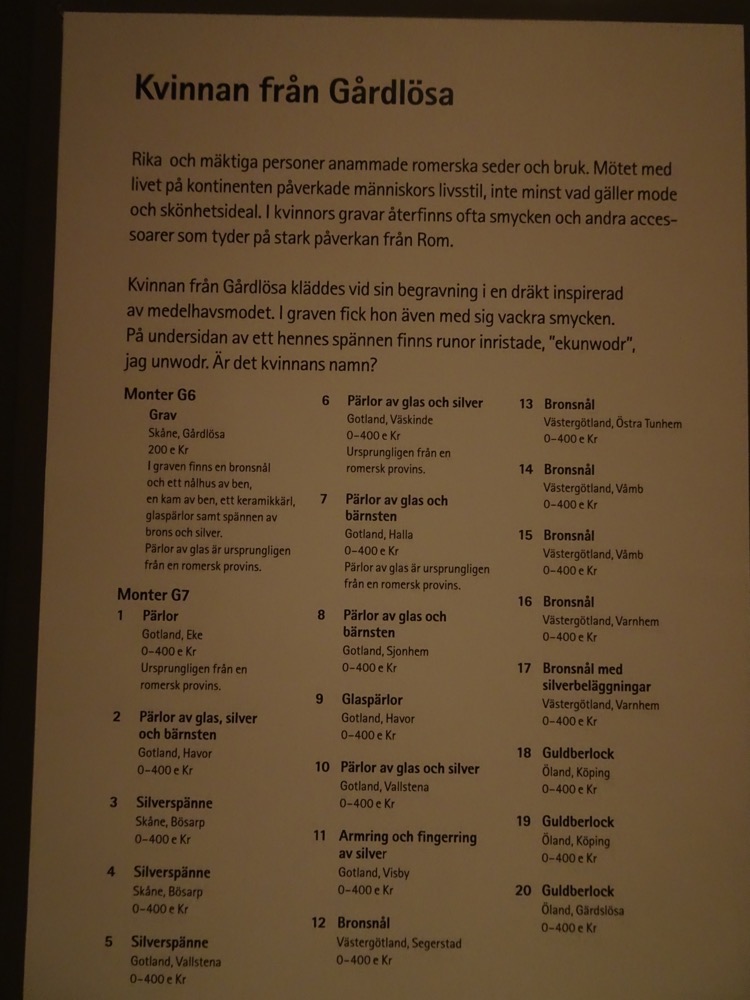
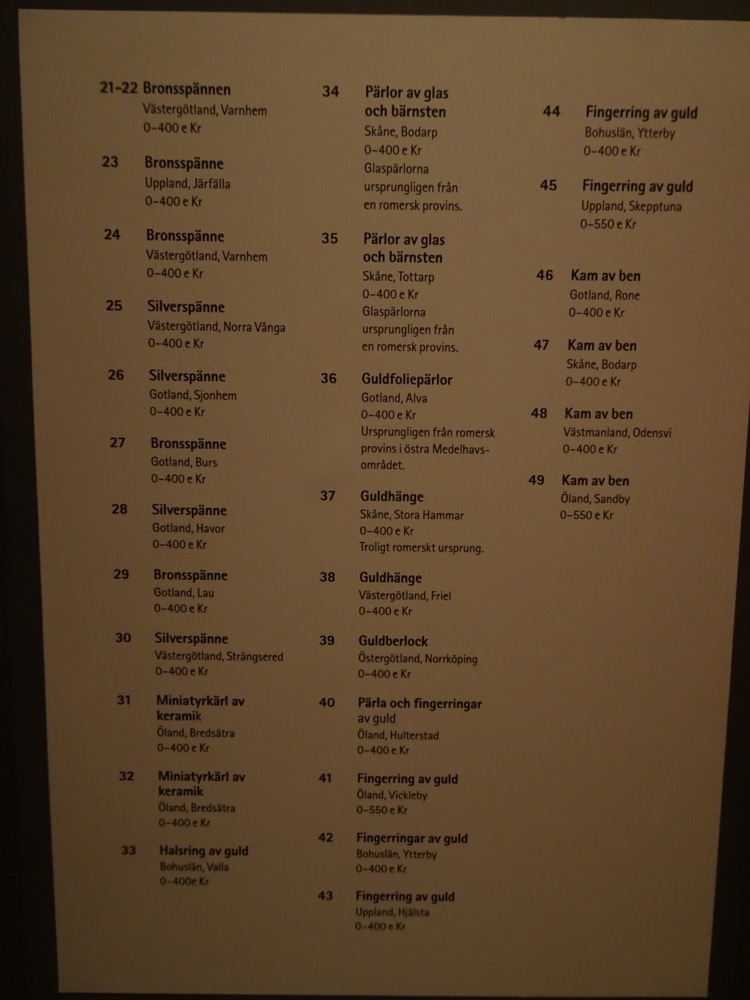
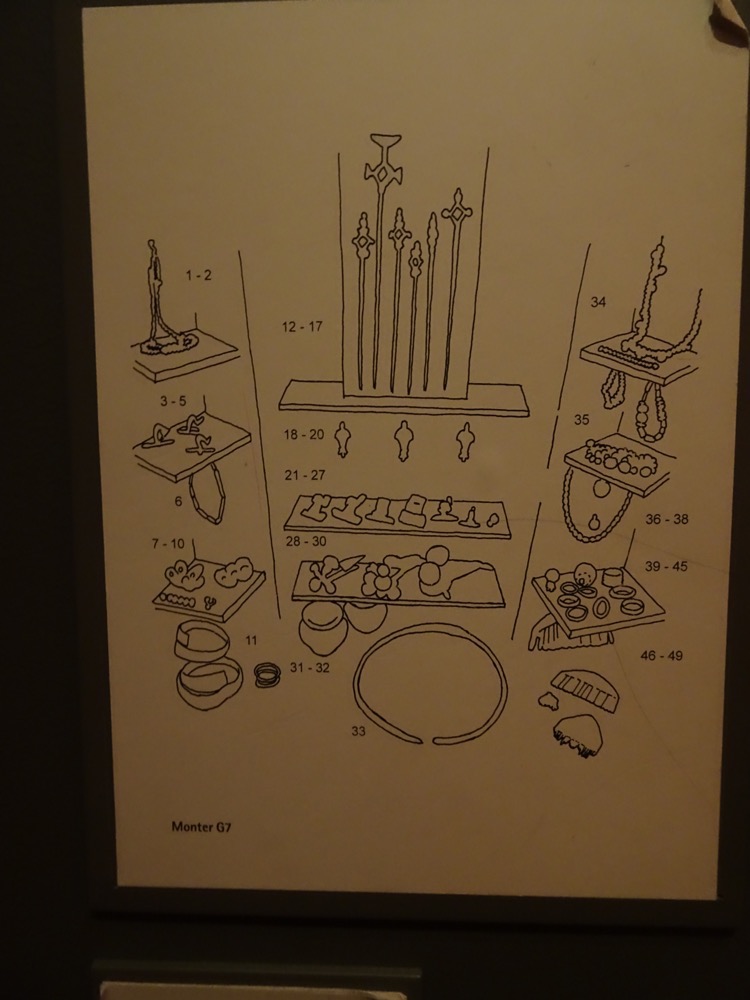
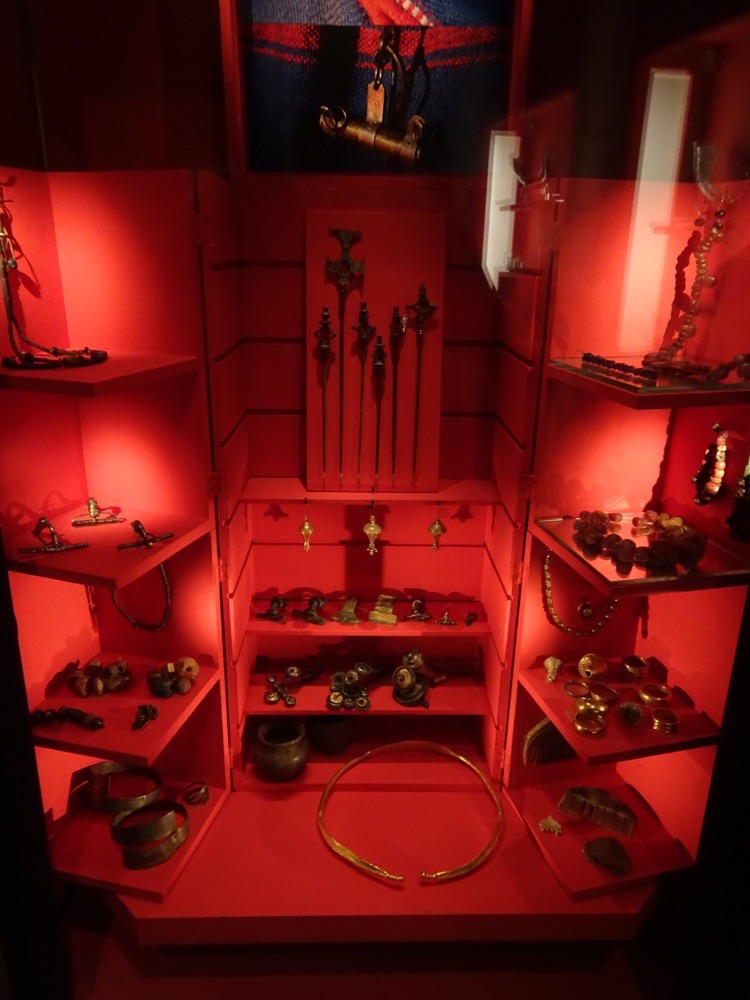
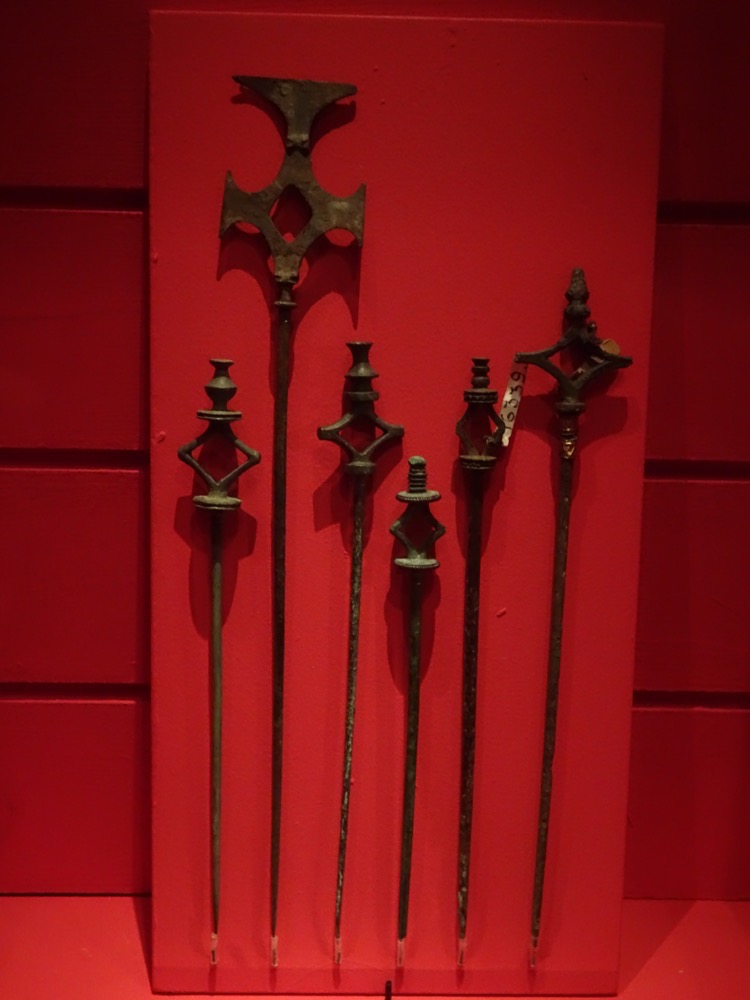
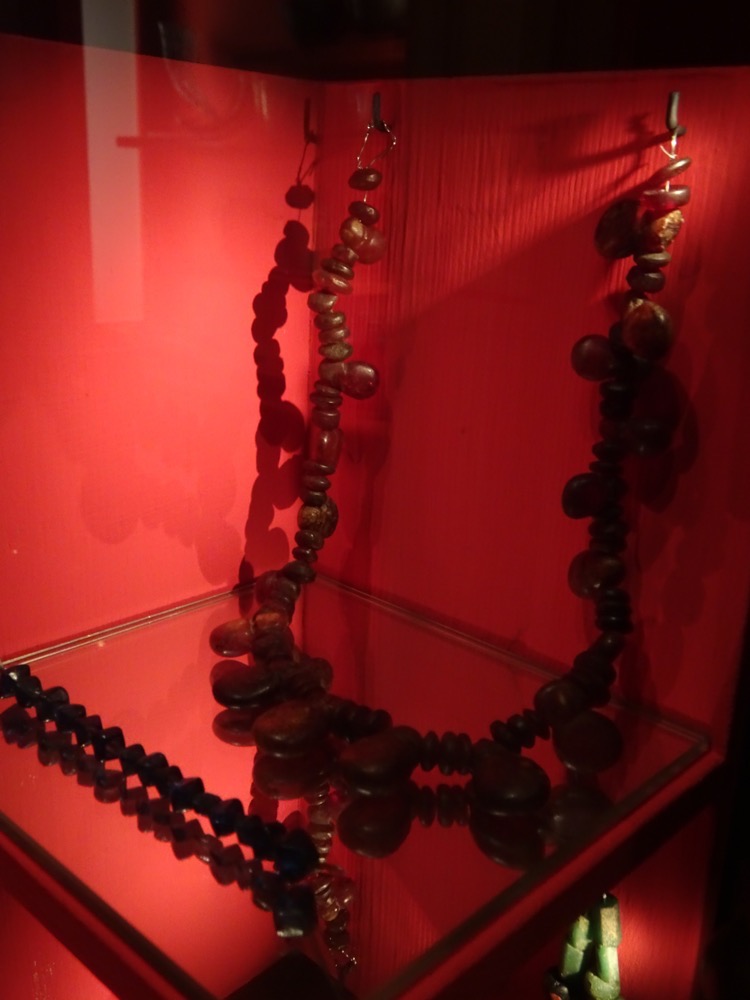
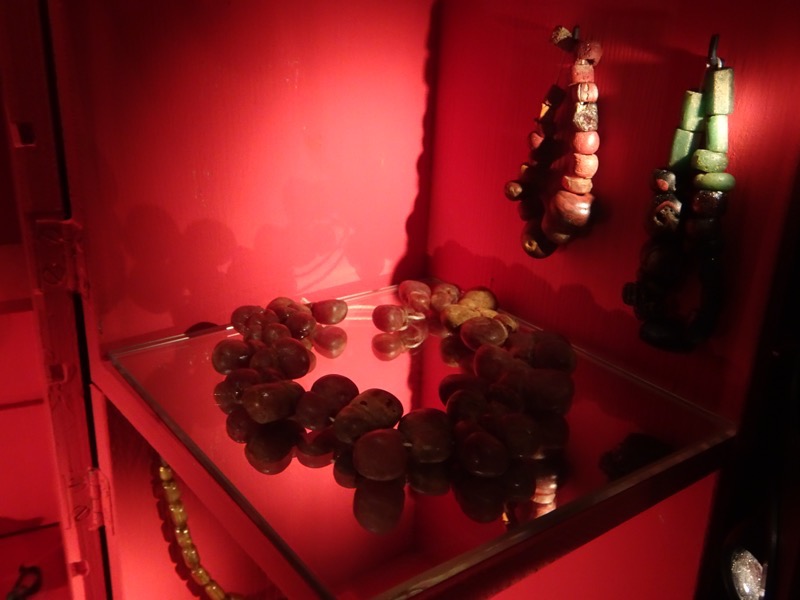
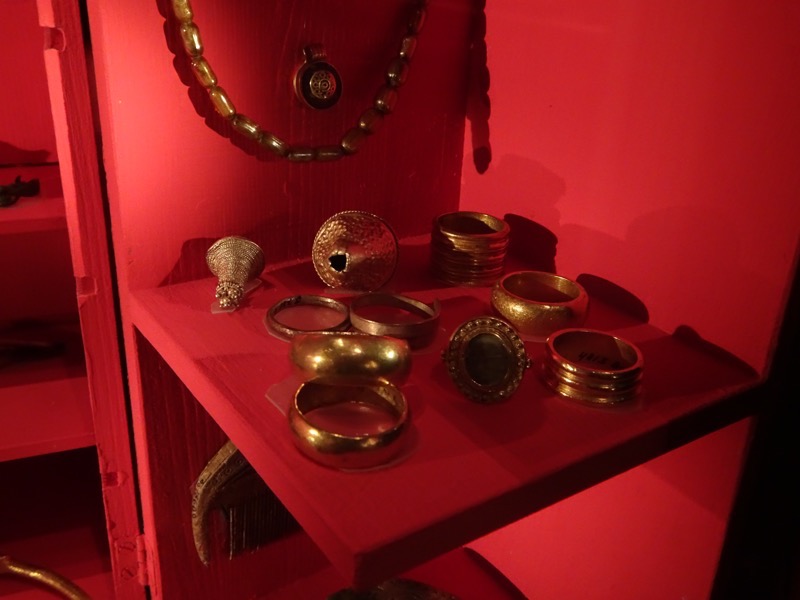
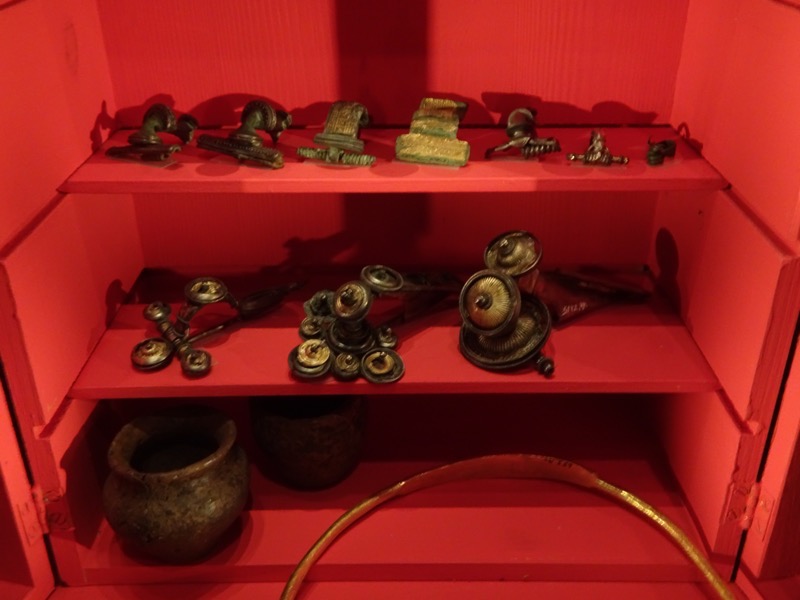
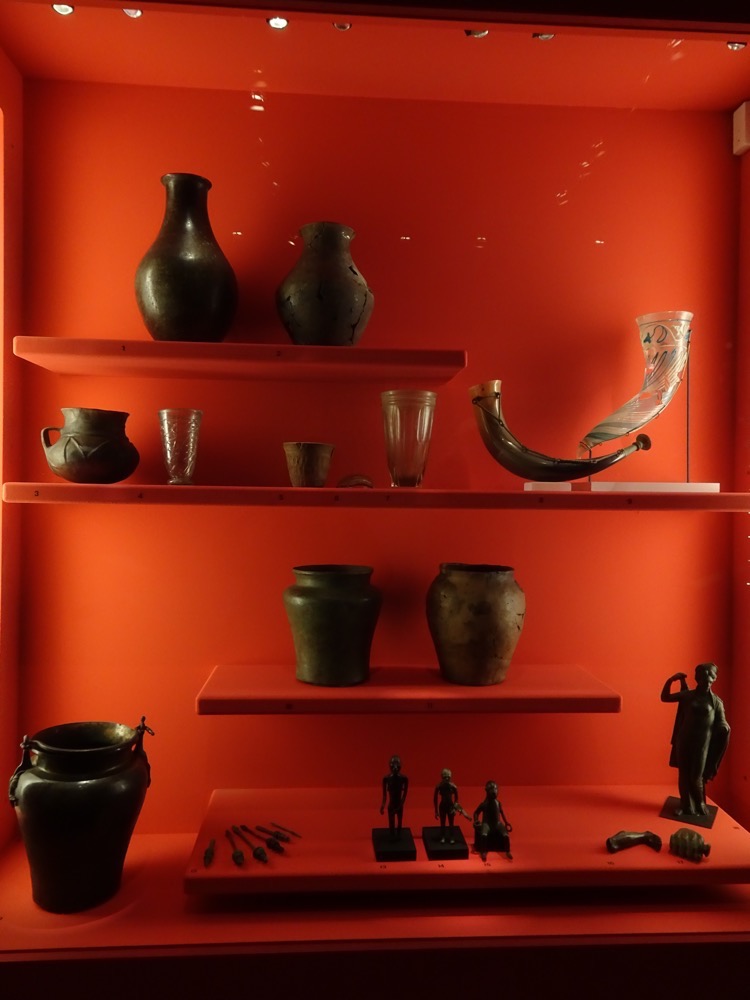
MEDIEVAL COLLECTION:
Footed chalice, c.1400-1500AD.
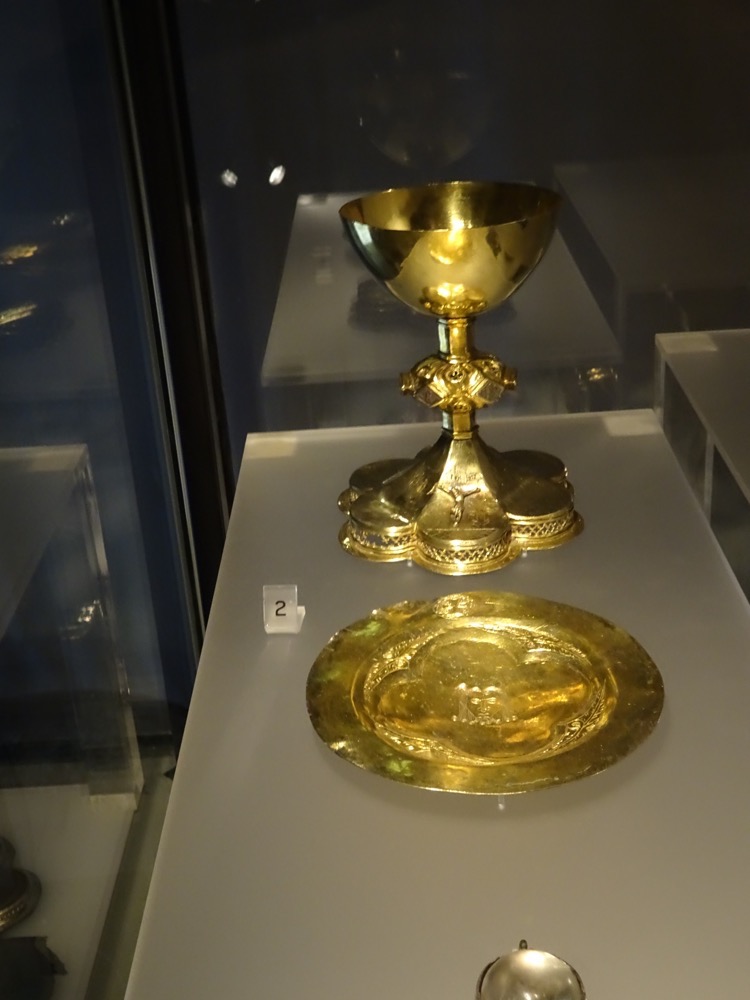
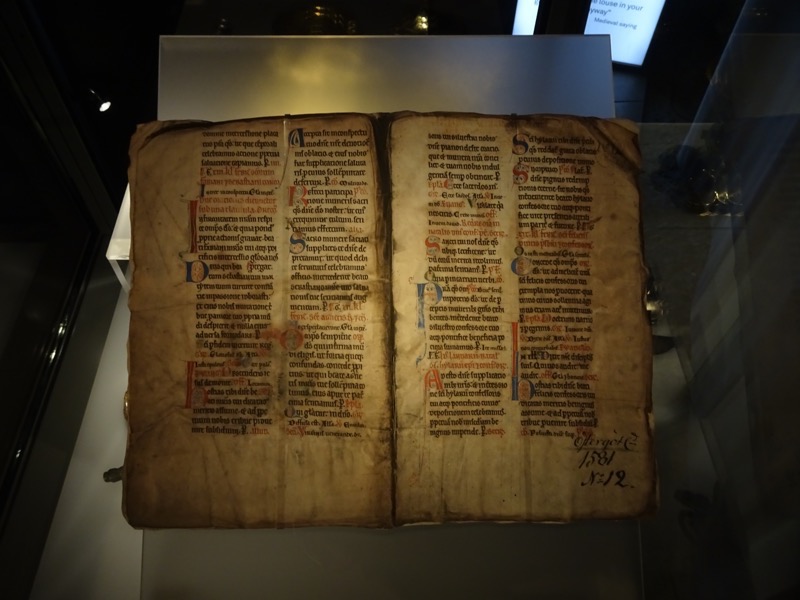 Impossible to photograph delicate filigree chain…
Impossible to photograph delicate filigree chain…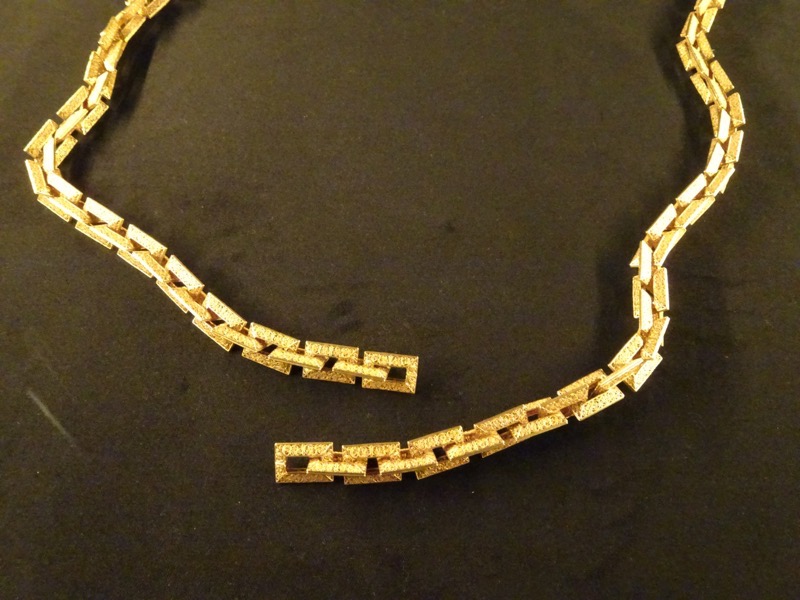
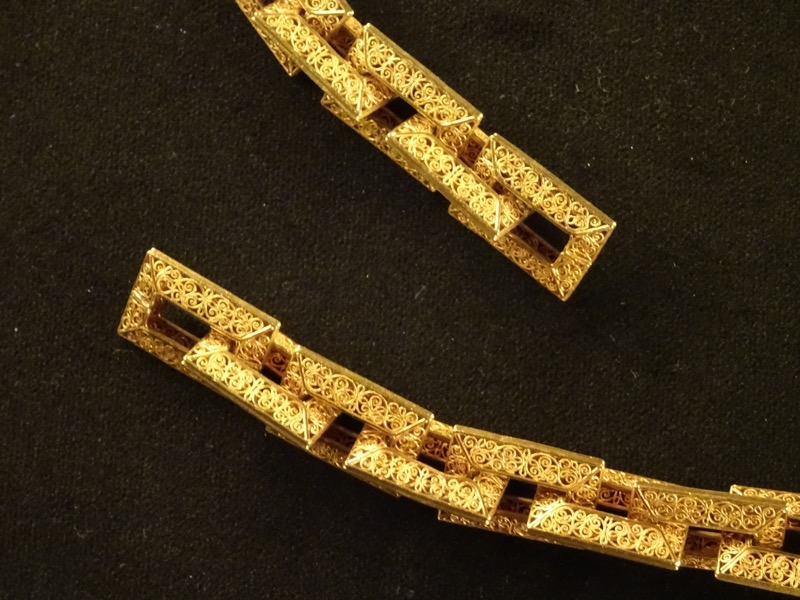
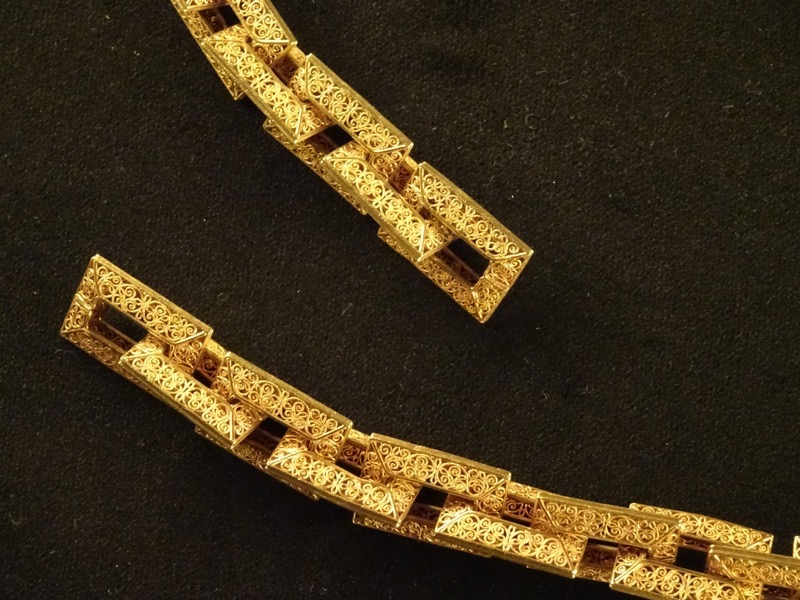 Prayer book for Malin Sture, a young woman of a noble family in Sodermanland, Horningsholm, c.1599.
Prayer book for Malin Sture, a young woman of a noble family in Sodermanland, Horningsholm, c.1599.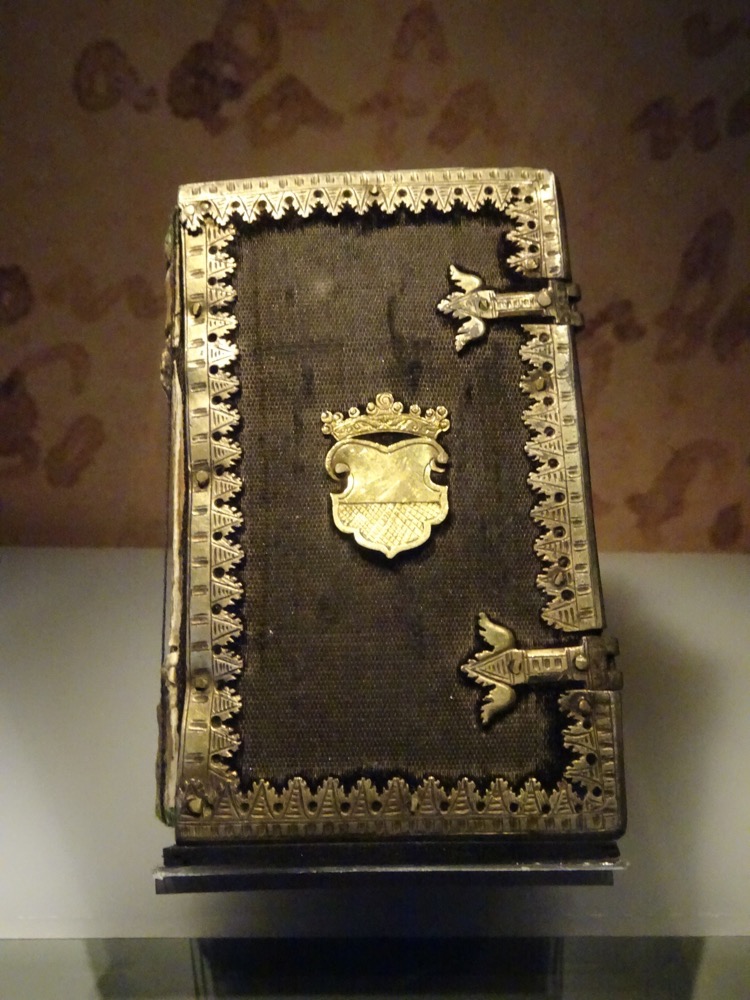 Jewelled pendant owned by Queen Maria Eleanora (1599-1655).
Jewelled pendant owned by Queen Maria Eleanora (1599-1655).
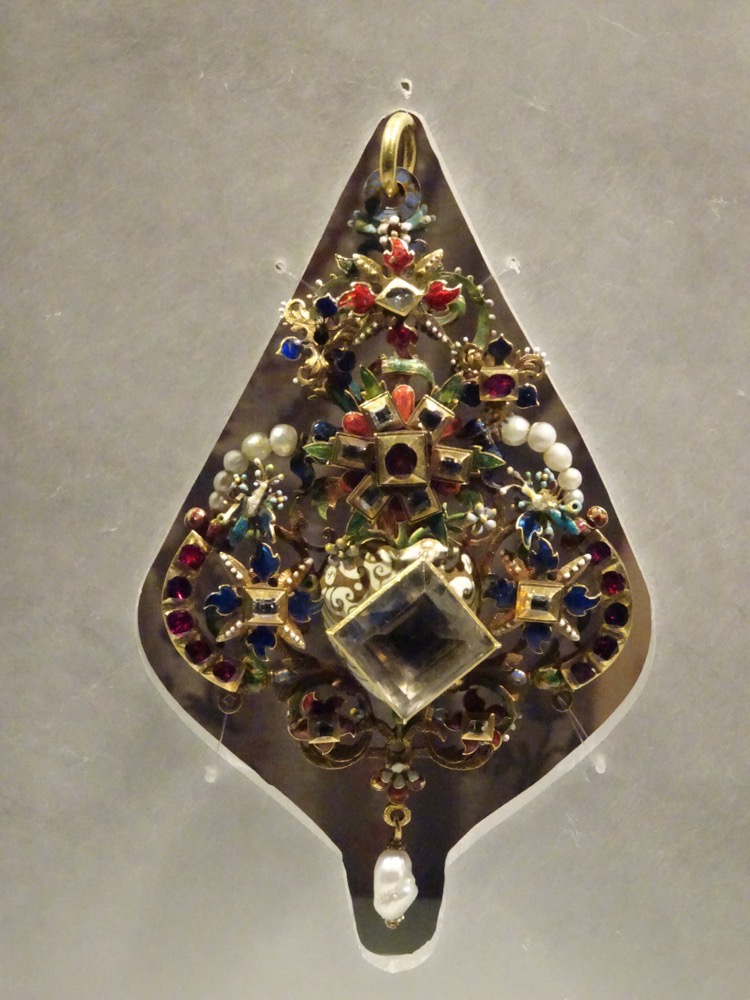
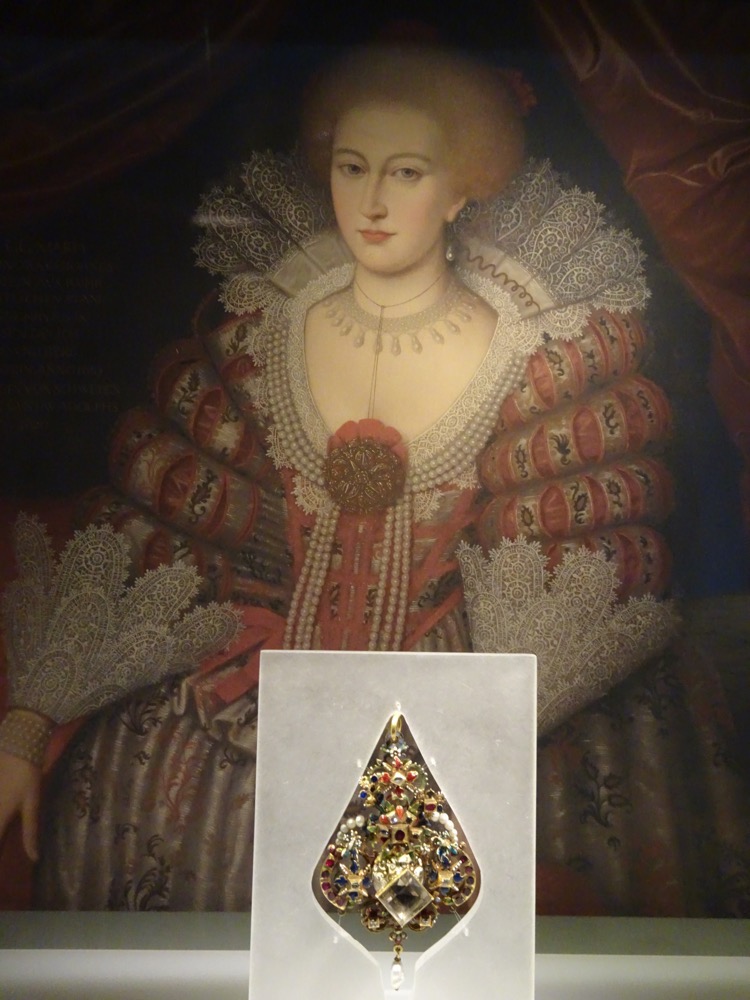

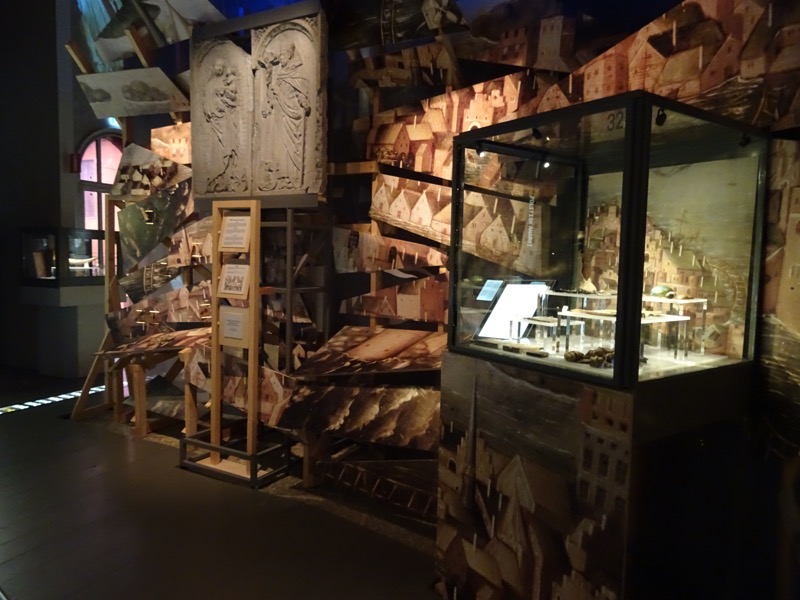
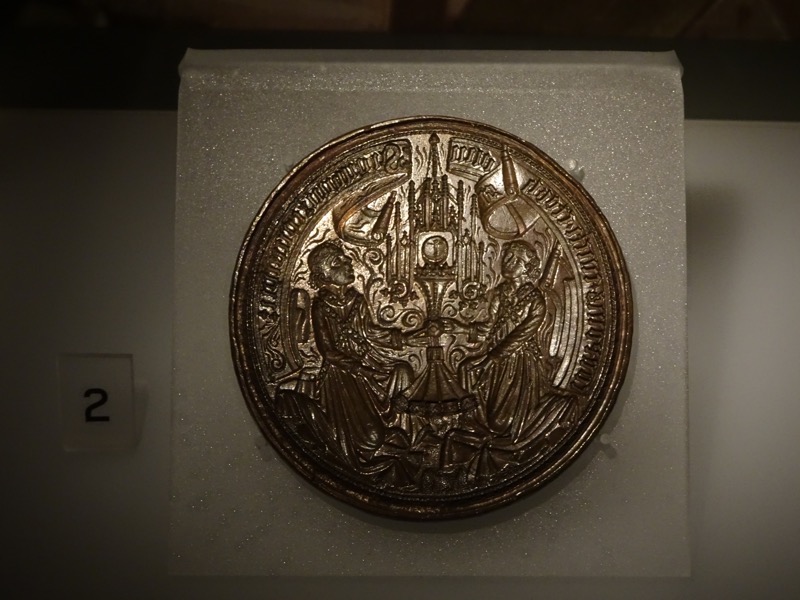
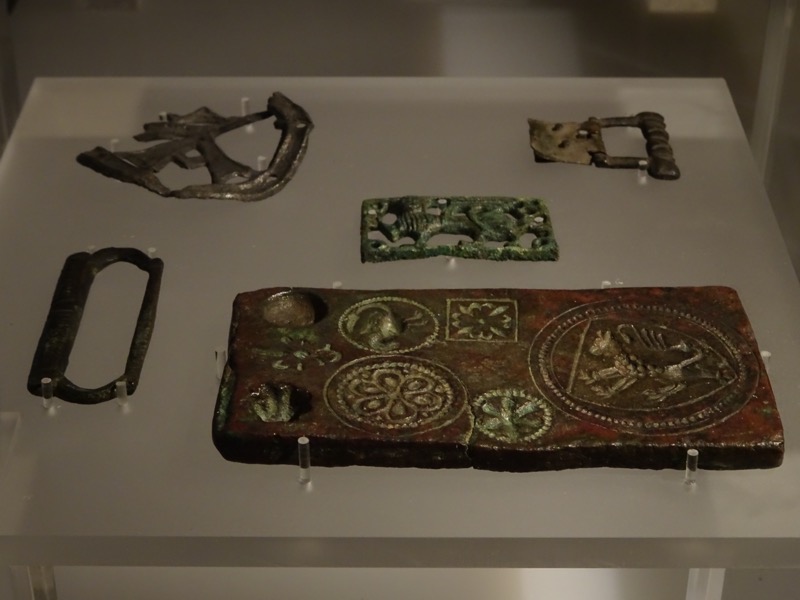 Everyday objects from the medieval town strata in Uppsala and Strngnas – a child’s shoe, a casing mould and a book cover 1100-1500AD.
Everyday objects from the medieval town strata in Uppsala and Strngnas – a child’s shoe, a casing mould and a book cover 1100-1500AD.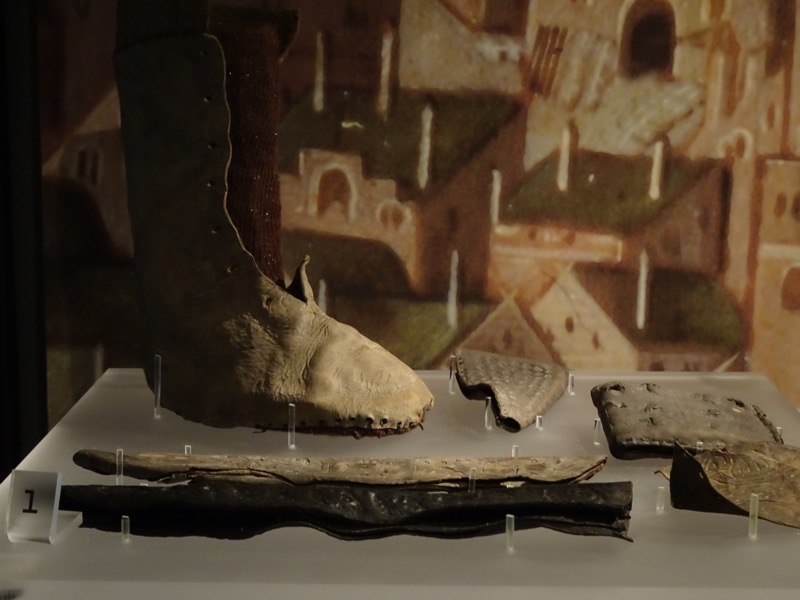
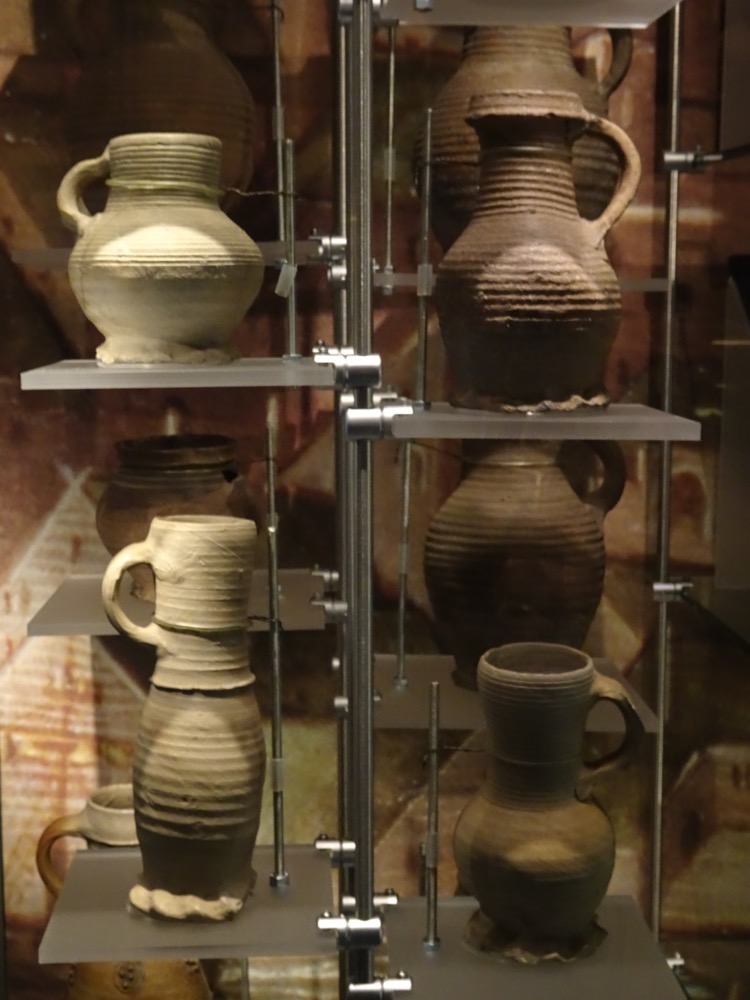
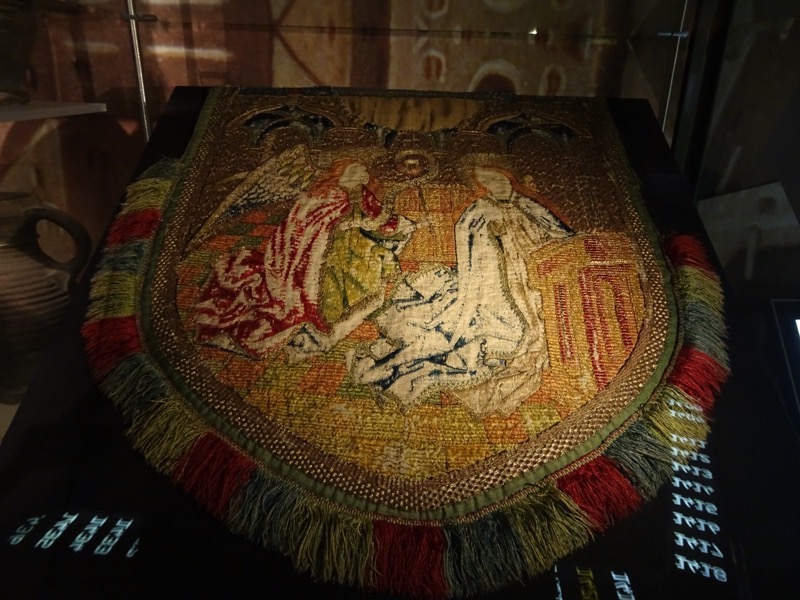
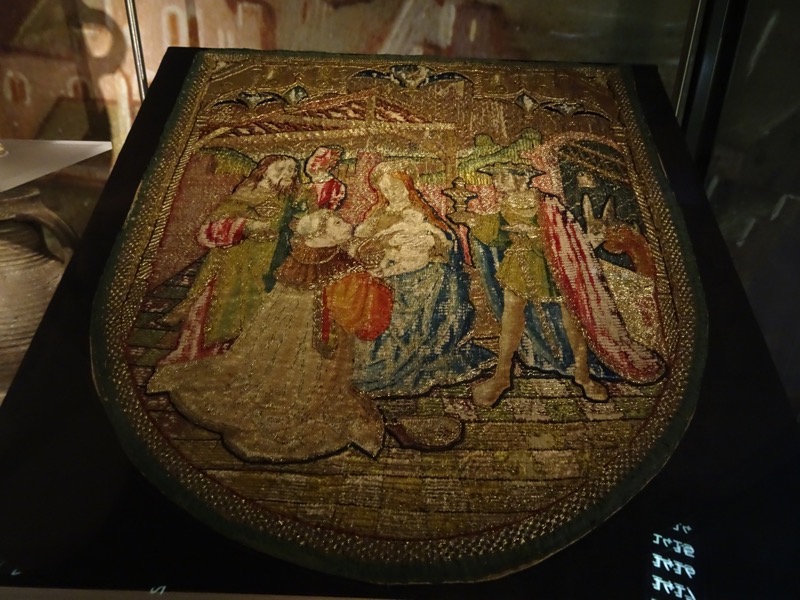 Silver gilt goblet for King Karl Knutsson Bonde, Vastmanland, Angso Castle, 1468-1470.
Silver gilt goblet for King Karl Knutsson Bonde, Vastmanland, Angso Castle, 1468-1470.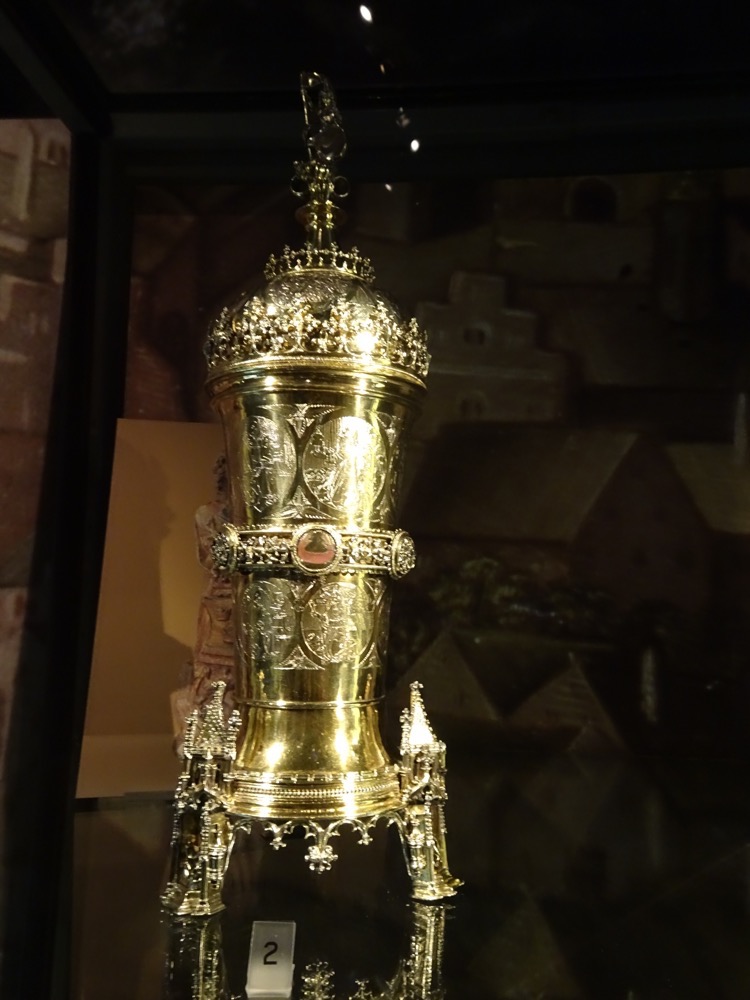
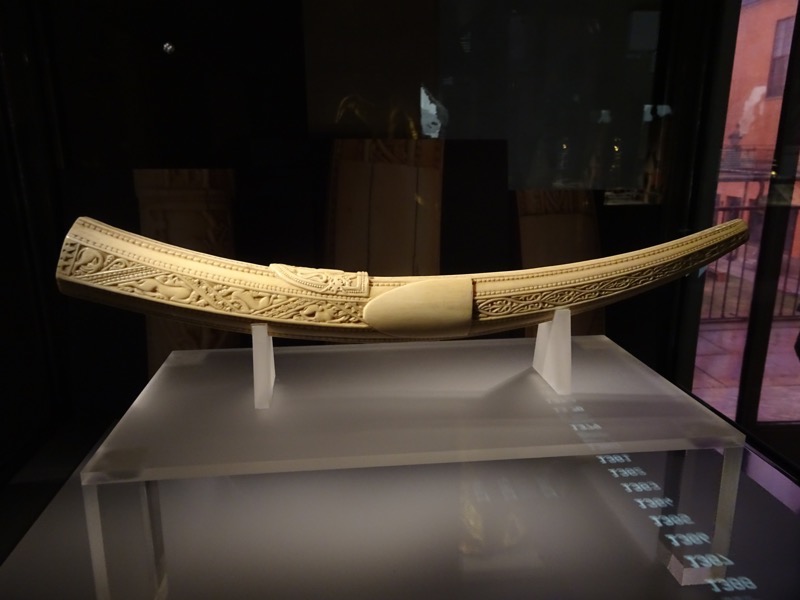 Reconstruction of Qeuun Marget’s gown – the original woven of cloth of gold, belongs to Uppsala Cathedral Museum, c15th century.
Reconstruction of Qeuun Marget’s gown – the original woven of cloth of gold, belongs to Uppsala Cathedral Museum, c15th century.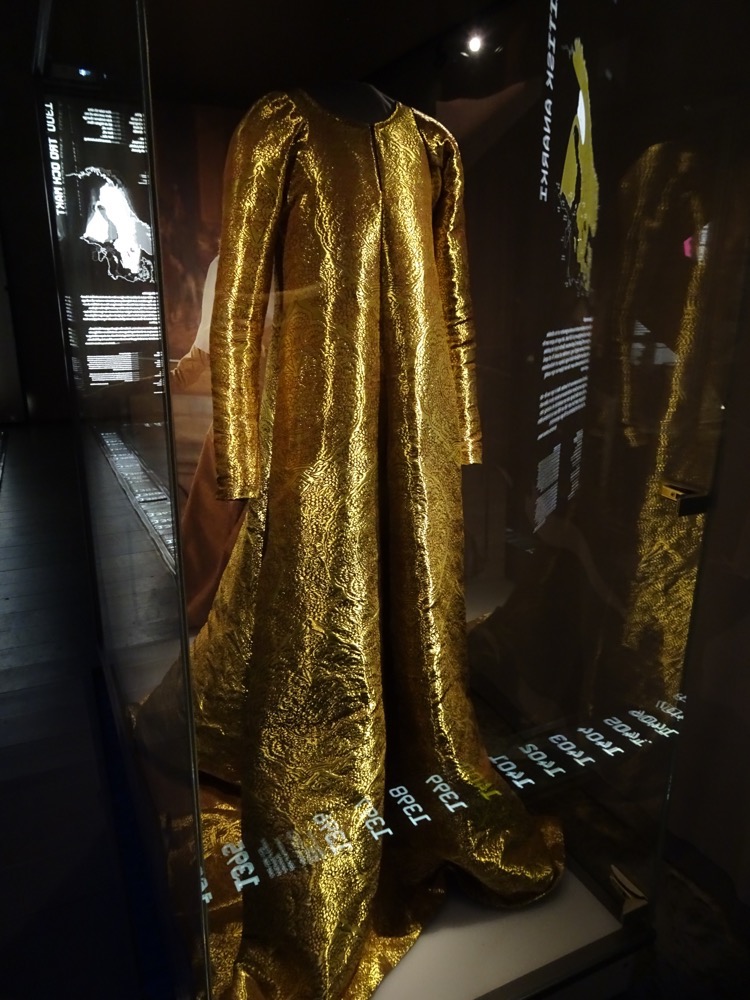
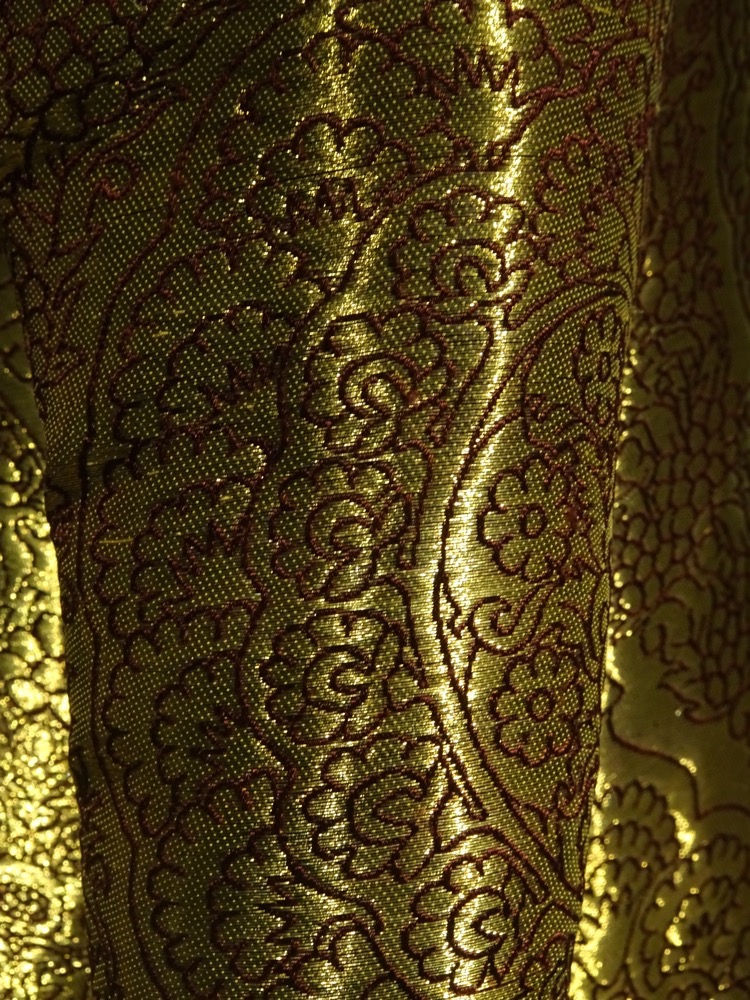 St Briget – details of the altarpiece, depicting different ages of Briget. Ostergotland, Appuna Church, 1450-1475.
St Briget – details of the altarpiece, depicting different ages of Briget. Ostergotland, Appuna Church, 1450-1475.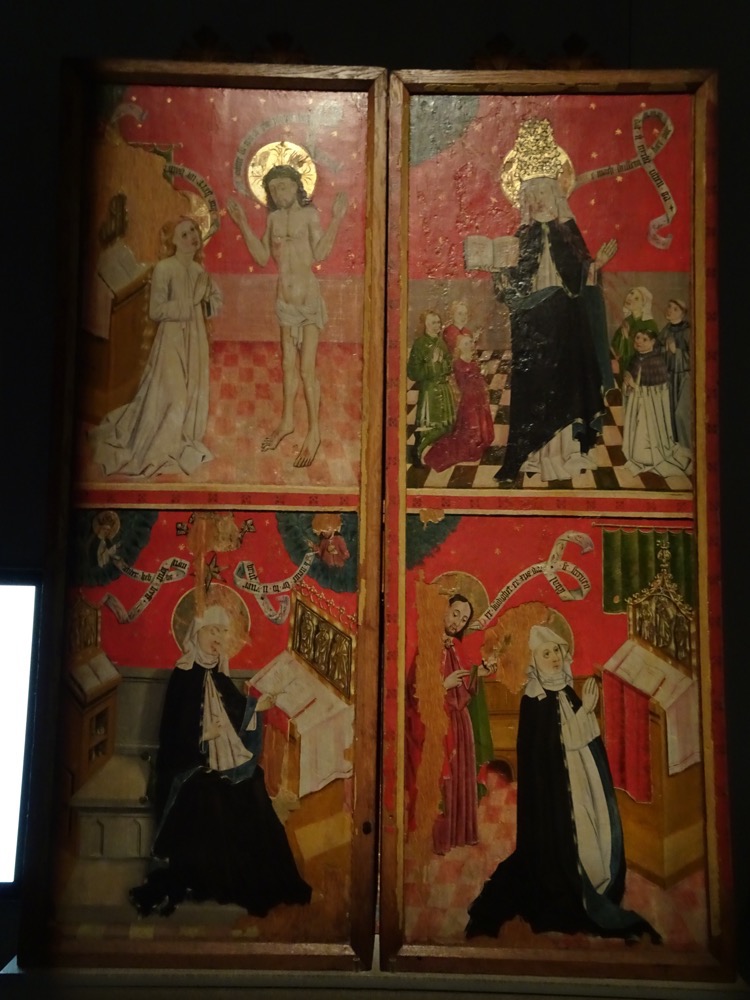
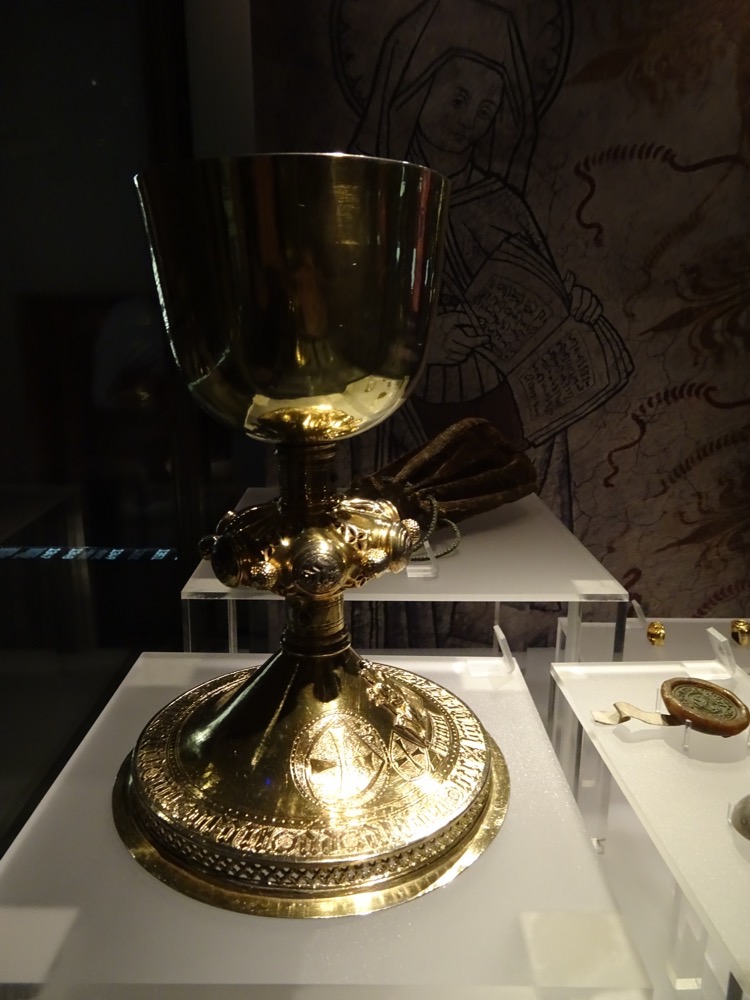
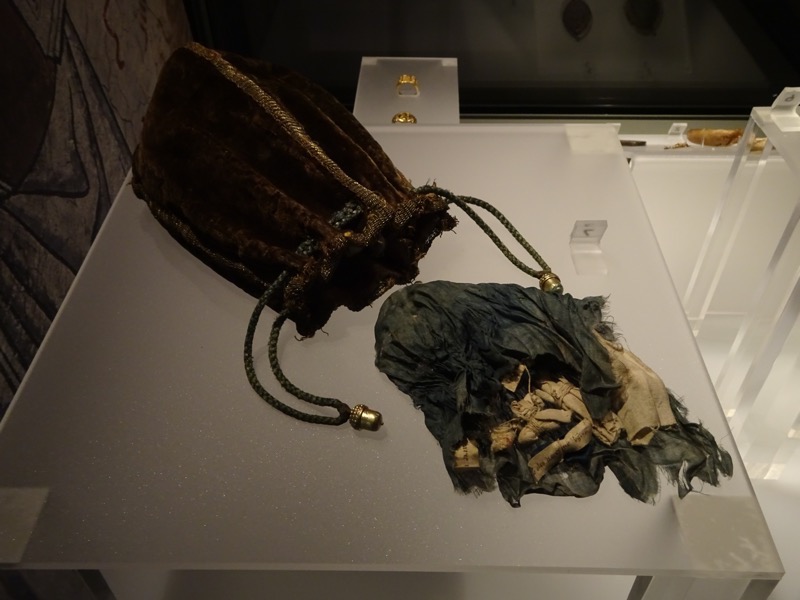
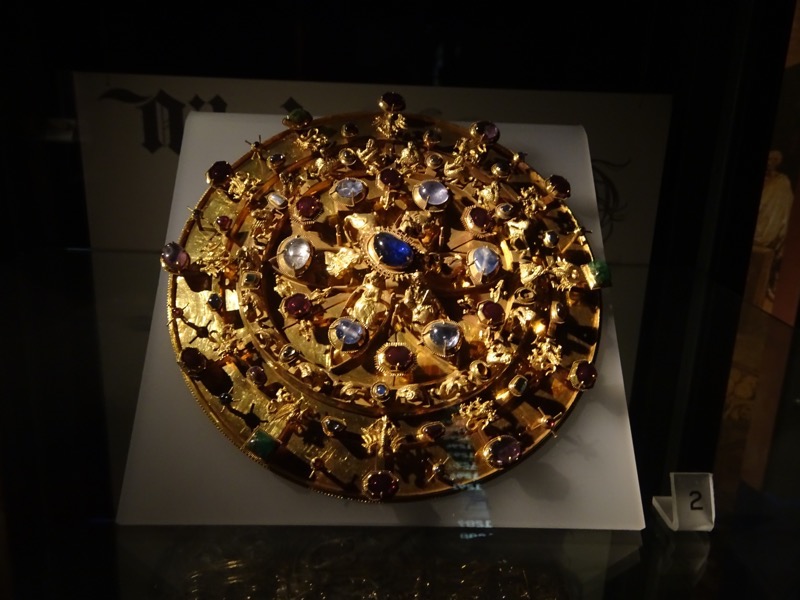
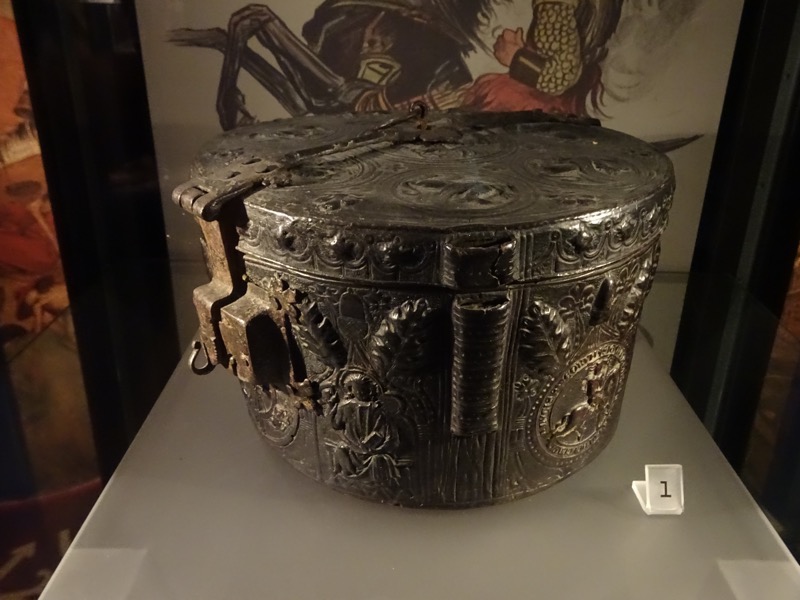
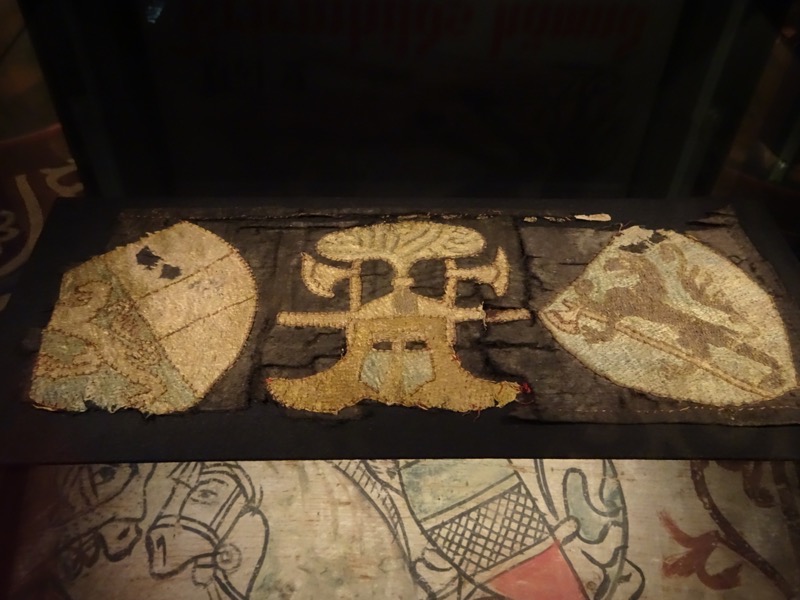
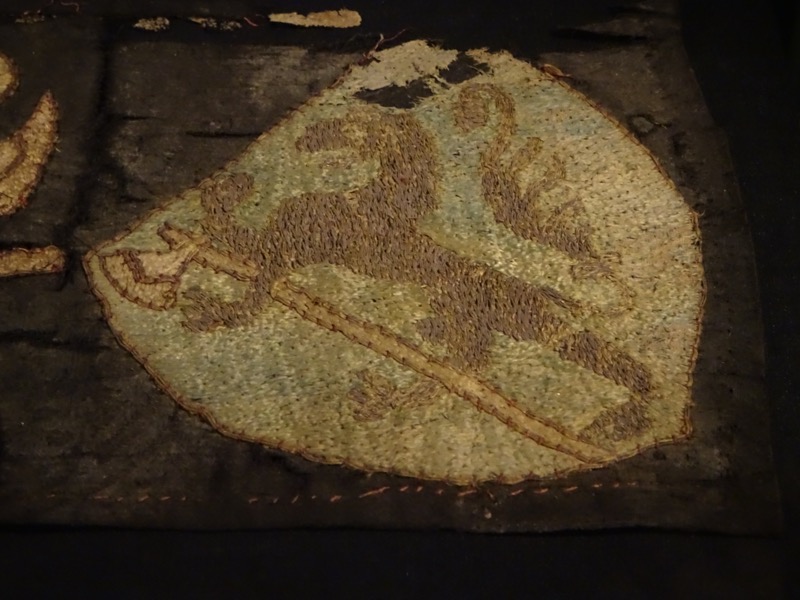 Broadleaf-wood drinking horn. Uppland c.1300-1400AD.
Broadleaf-wood drinking horn. Uppland c.1300-1400AD.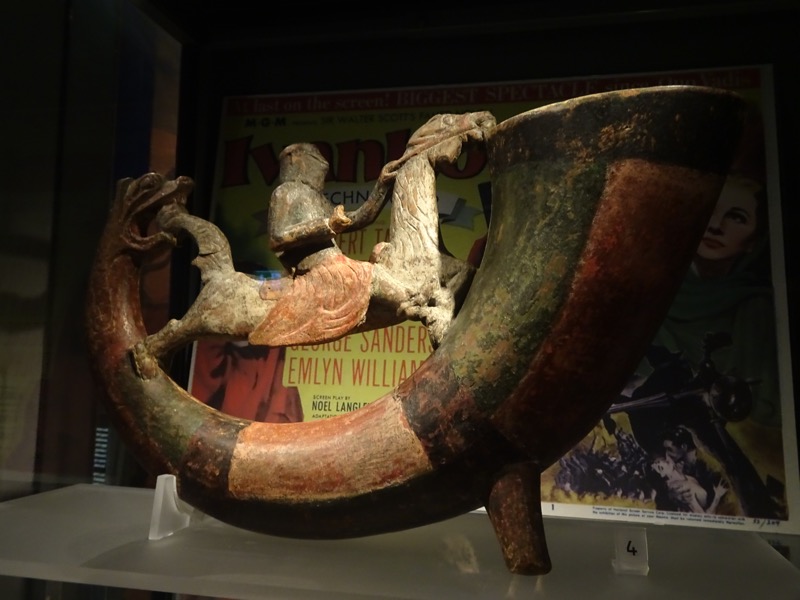 Oak reliquary, overdrawn with gilded copper, Vastergotland, Eriksberg Church, c.1175AD
Oak reliquary, overdrawn with gilded copper, Vastergotland, Eriksberg Church, c.1175AD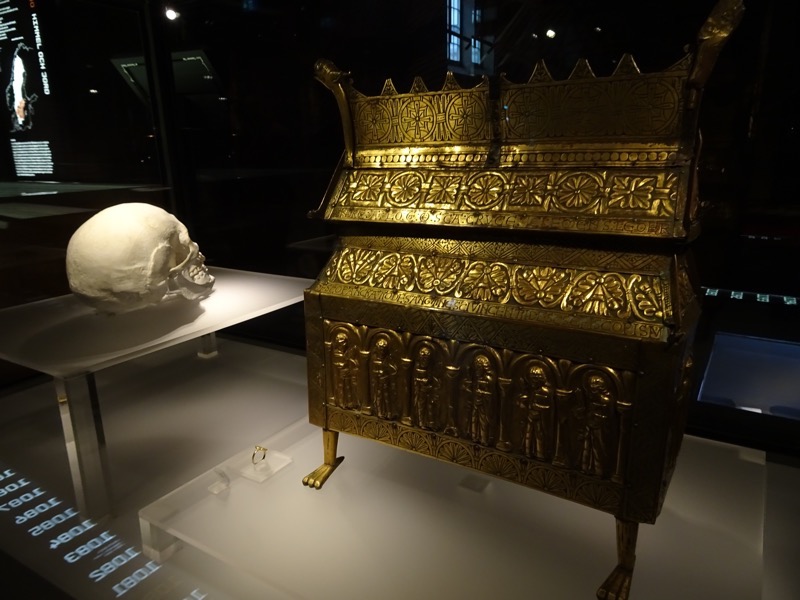
Weirdo re-enactor types take over the central courtyard for the summer season, showing people smithing, weaving, cooking, archery and other elements of the Viking lifestyle.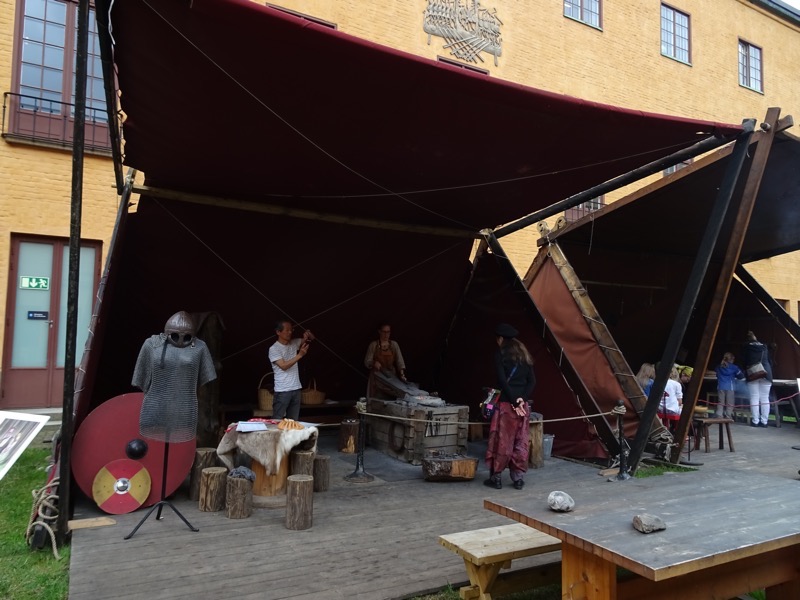
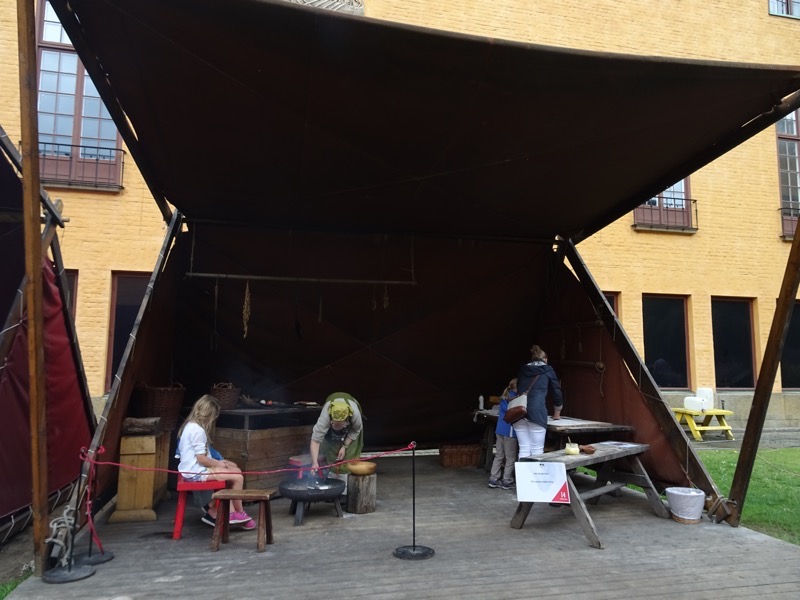
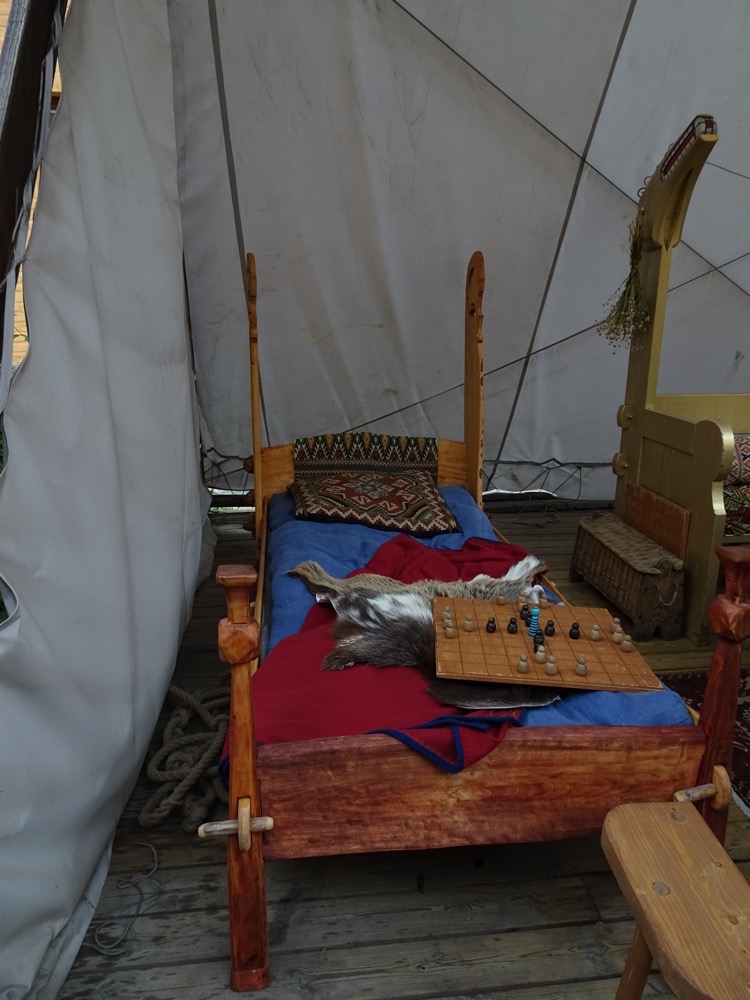
I tried to record* as much as I could of the information attached to the various artefacts – it became increasingly difficult to do so in the pre-history section, as fewer of the plaques were in English. I have included many of these images anyway, as they show a progressional development from the pre-historical era 0-400AD to the later 800-1000AD era. As per usual, I could have used more time…
*apologies for any inaccuracies – I’m on a train trying to compile all this!
